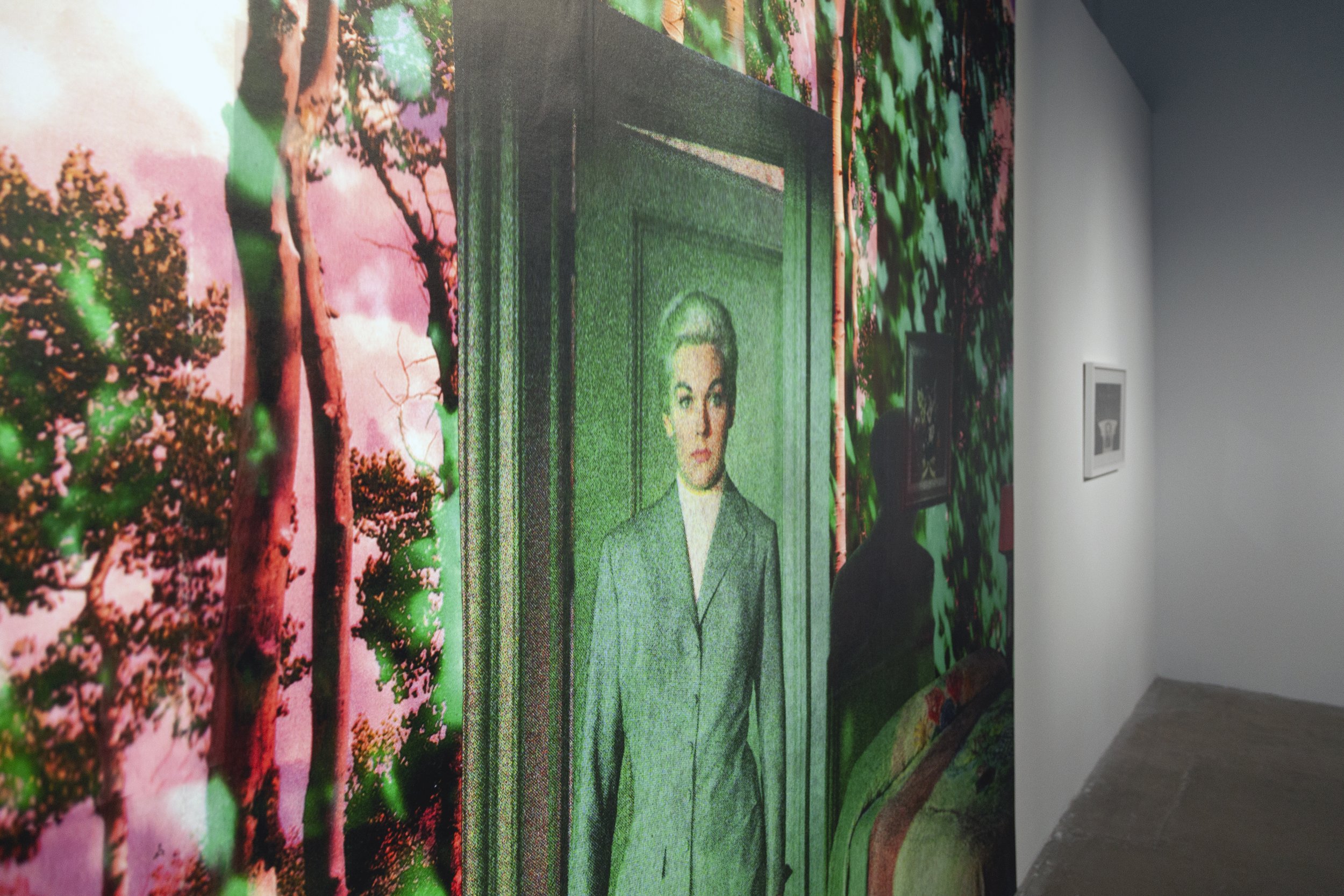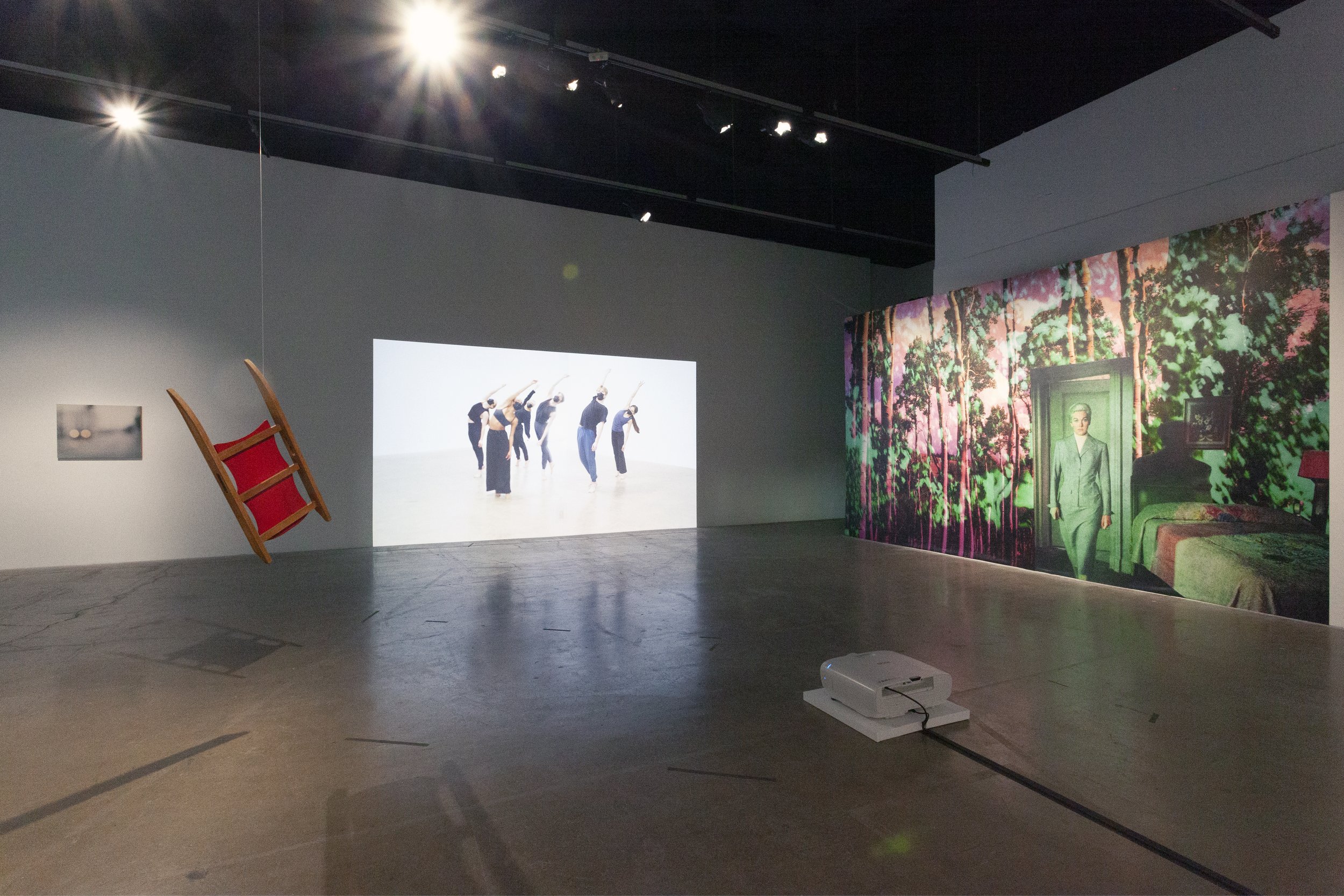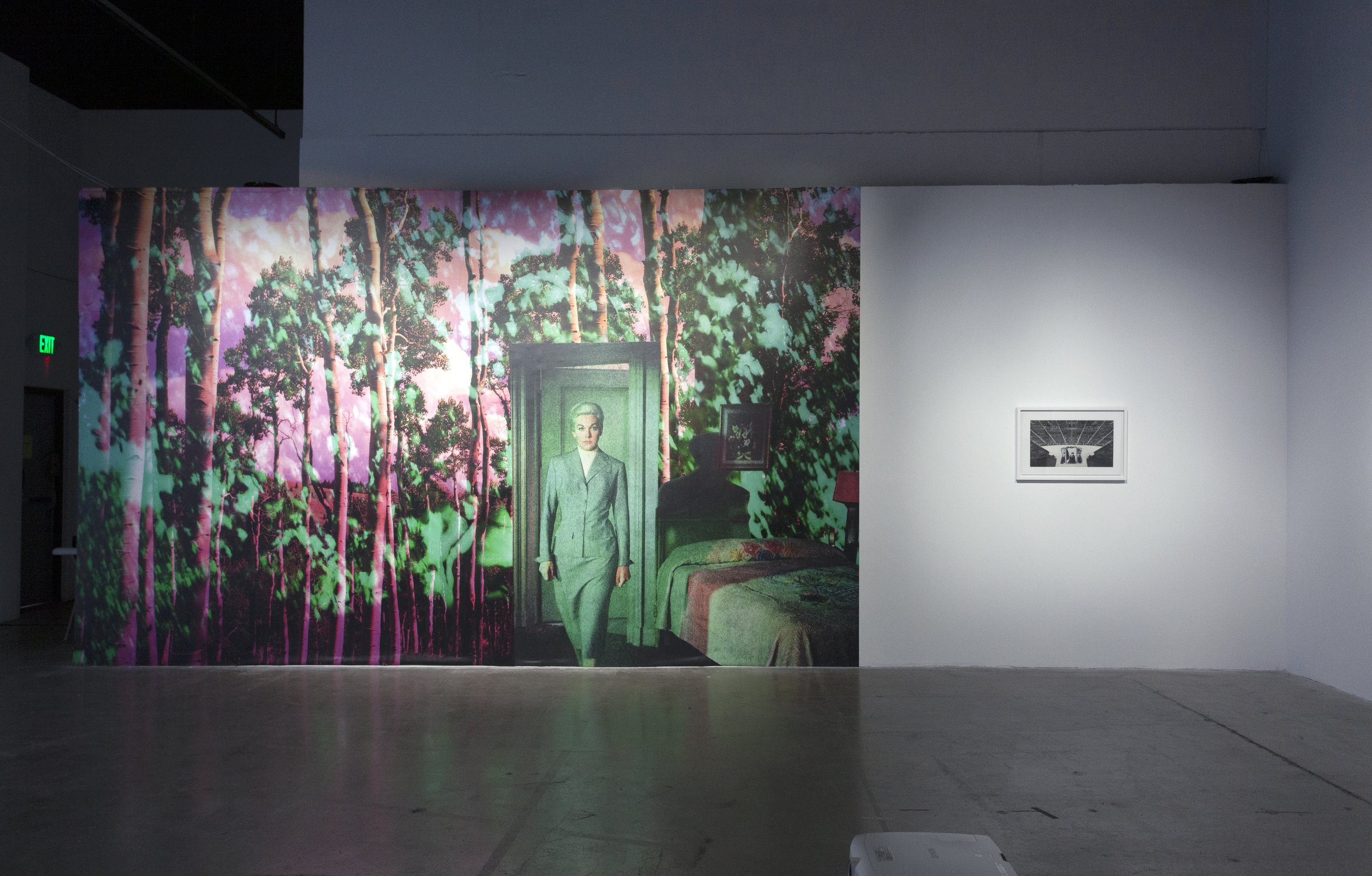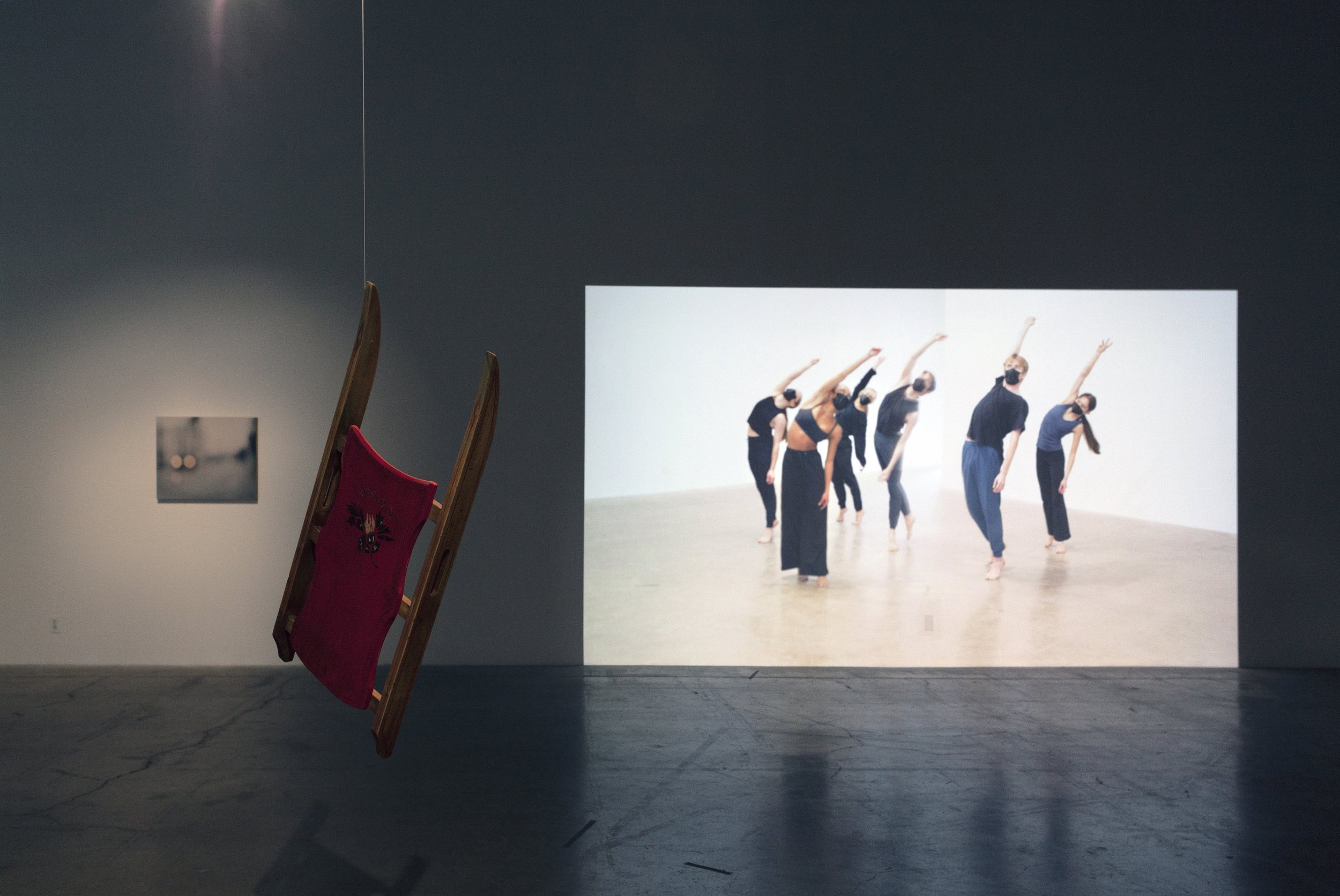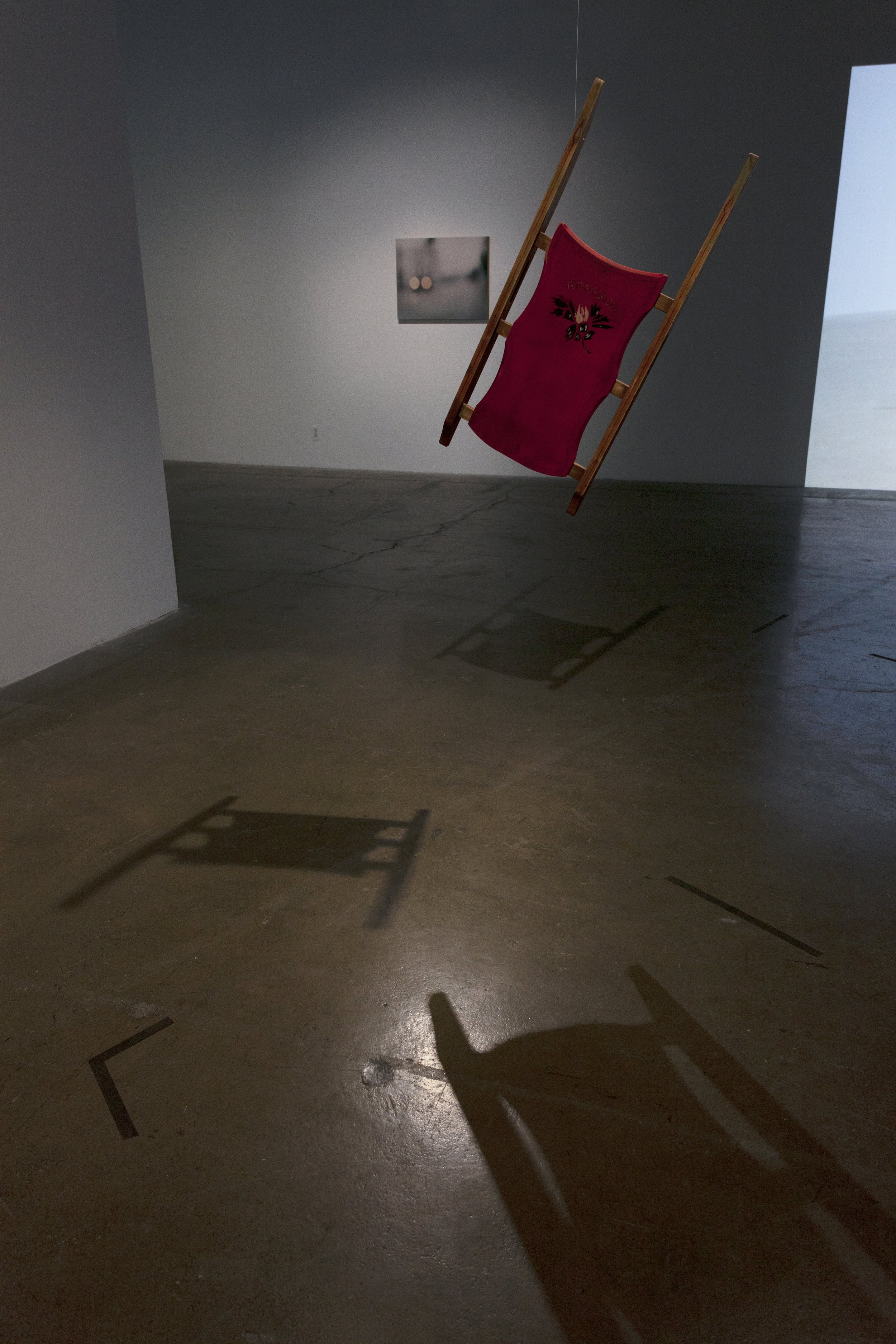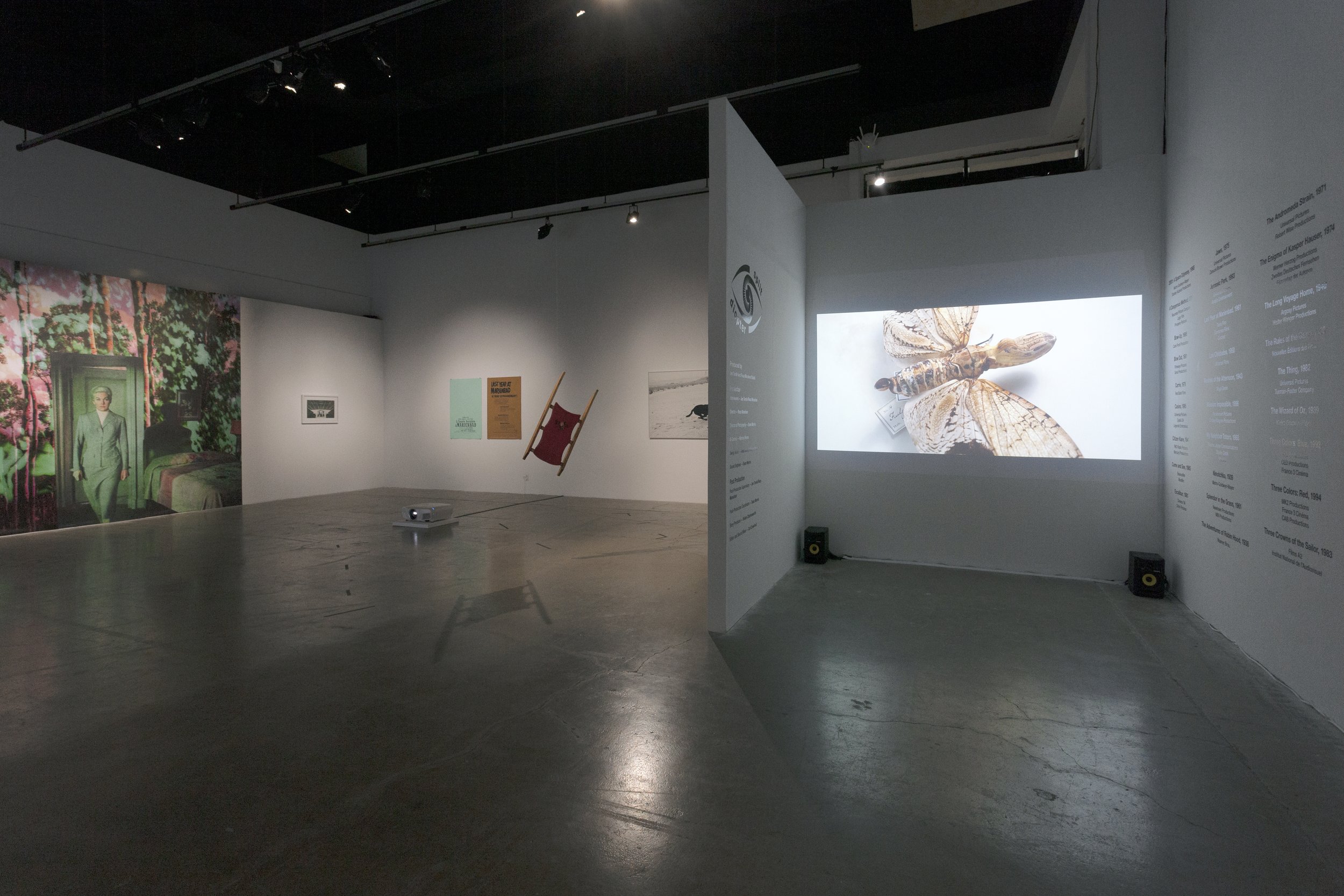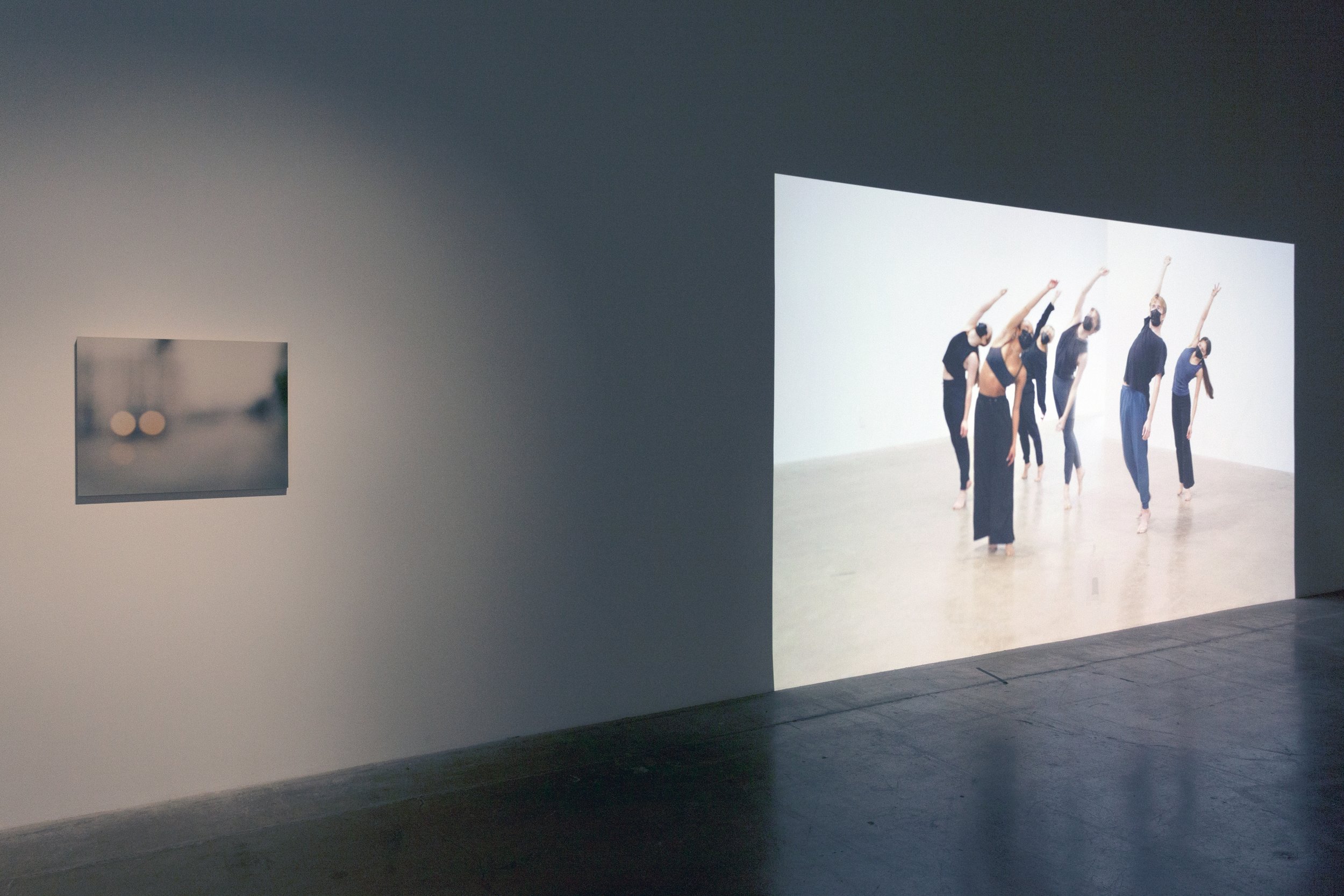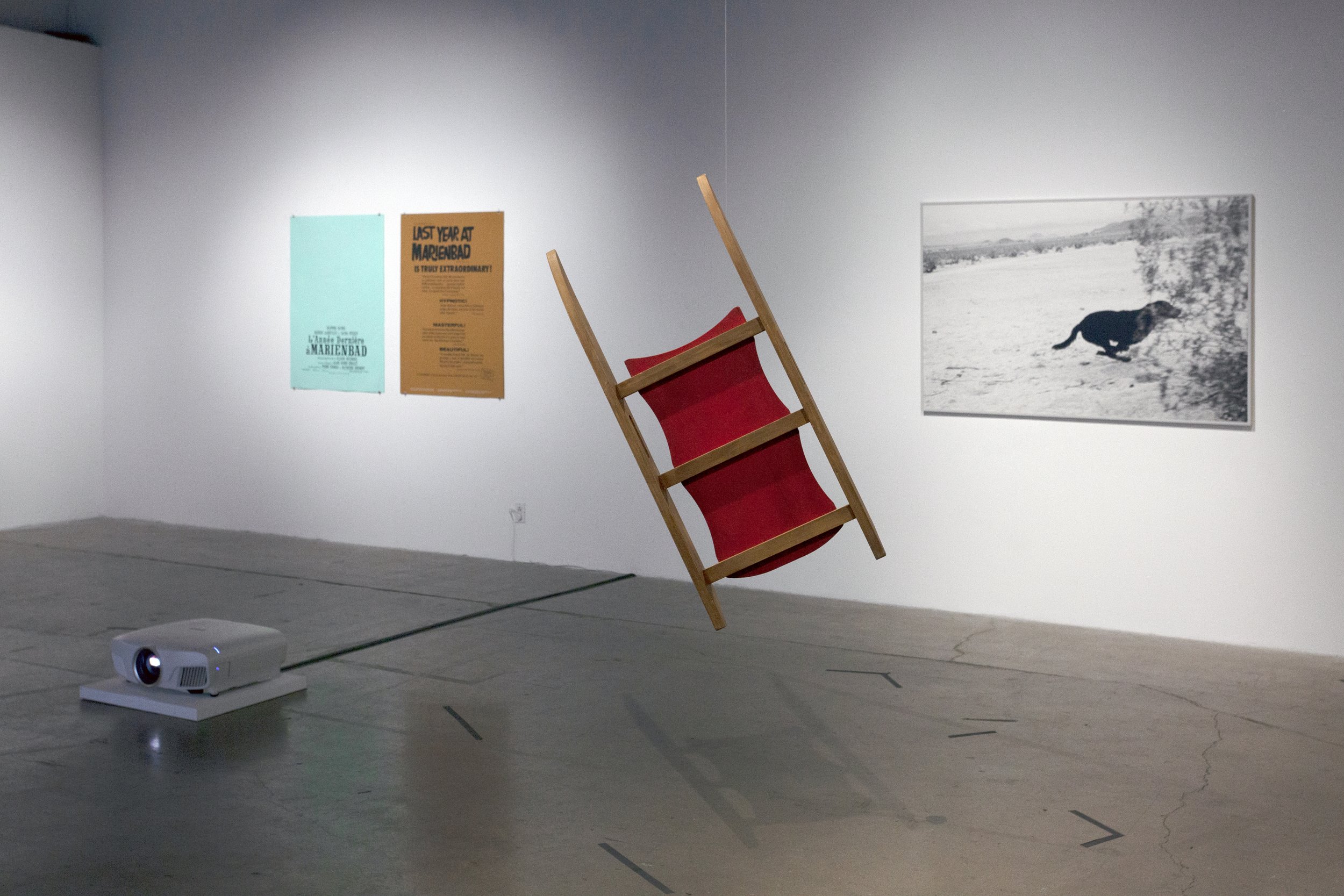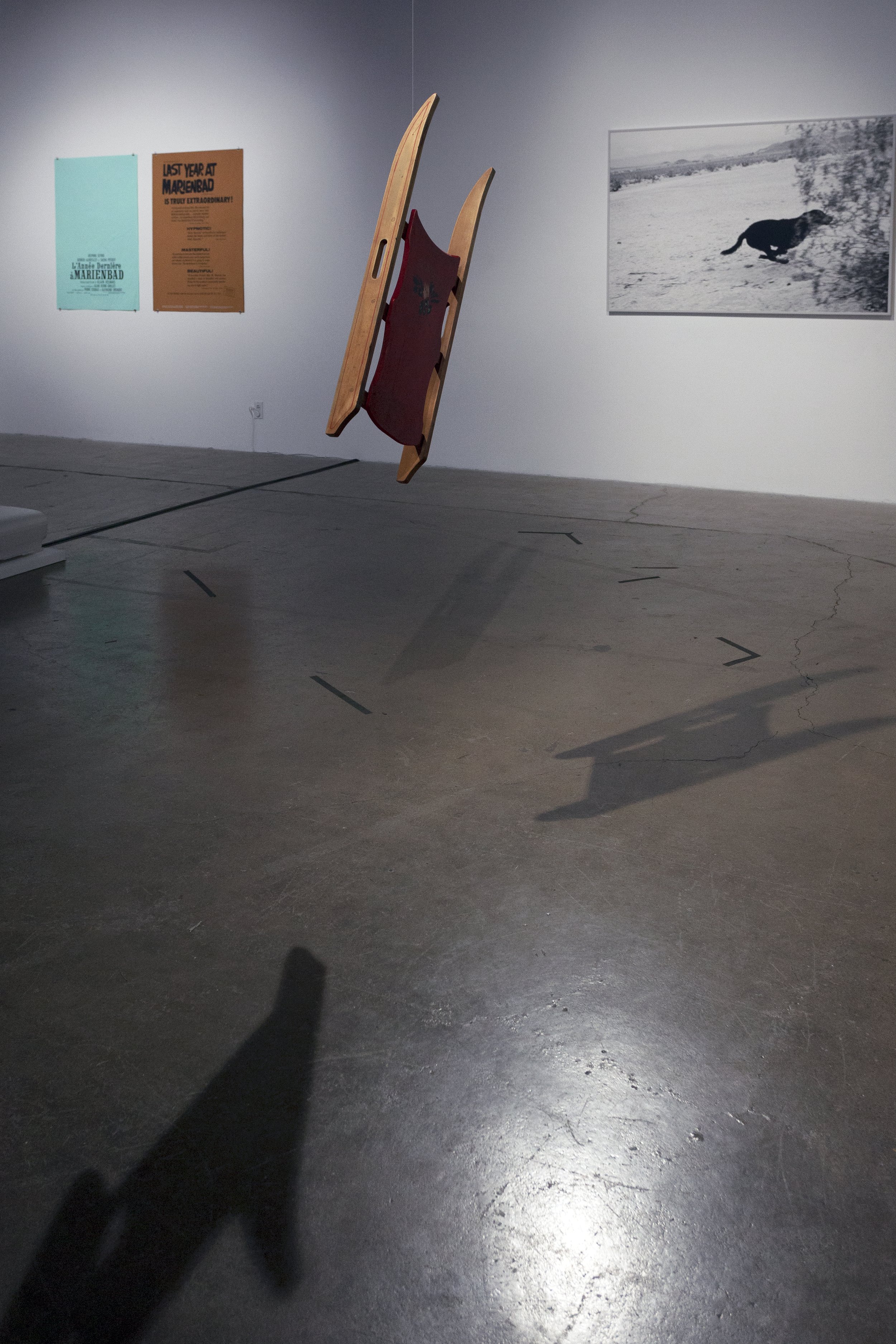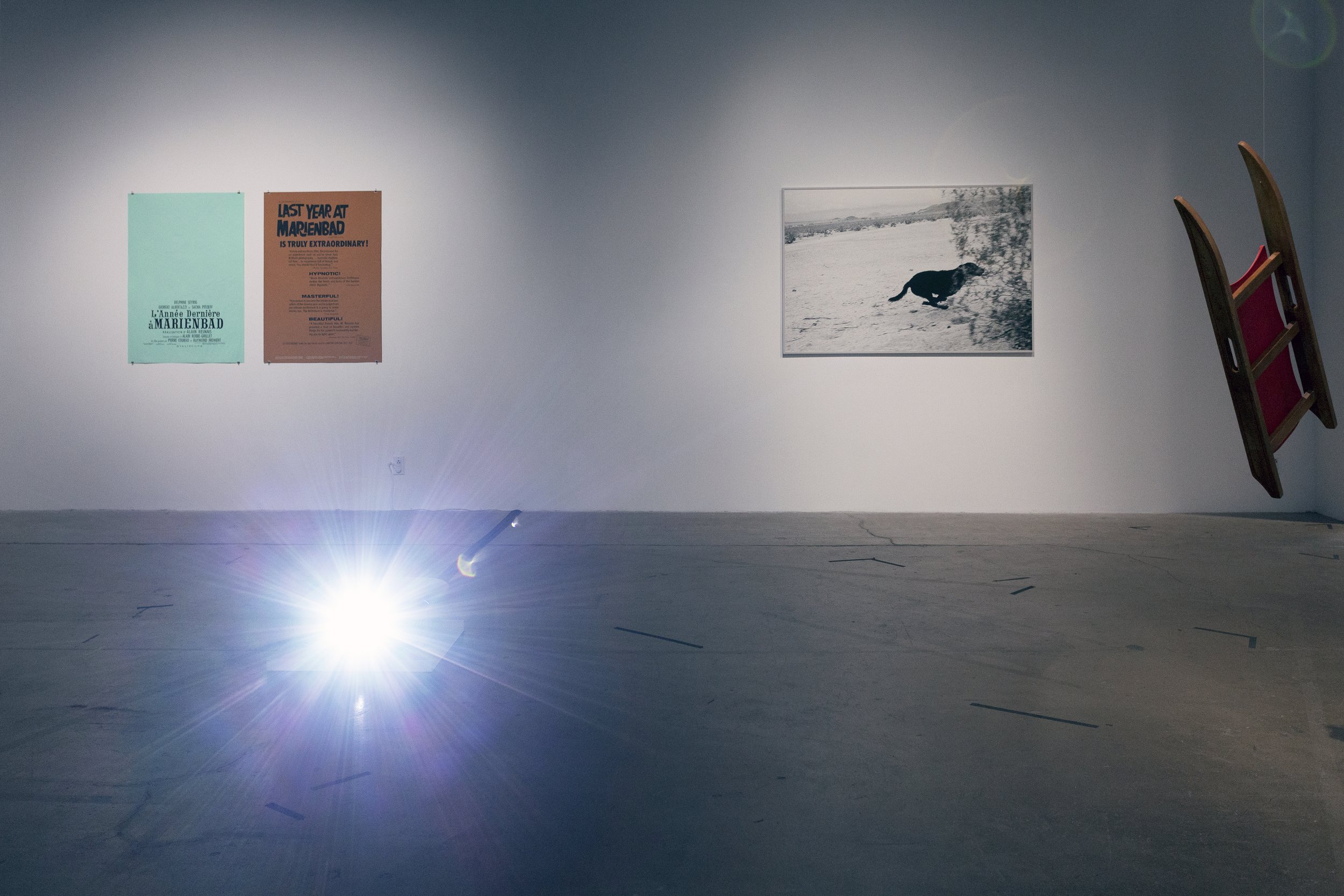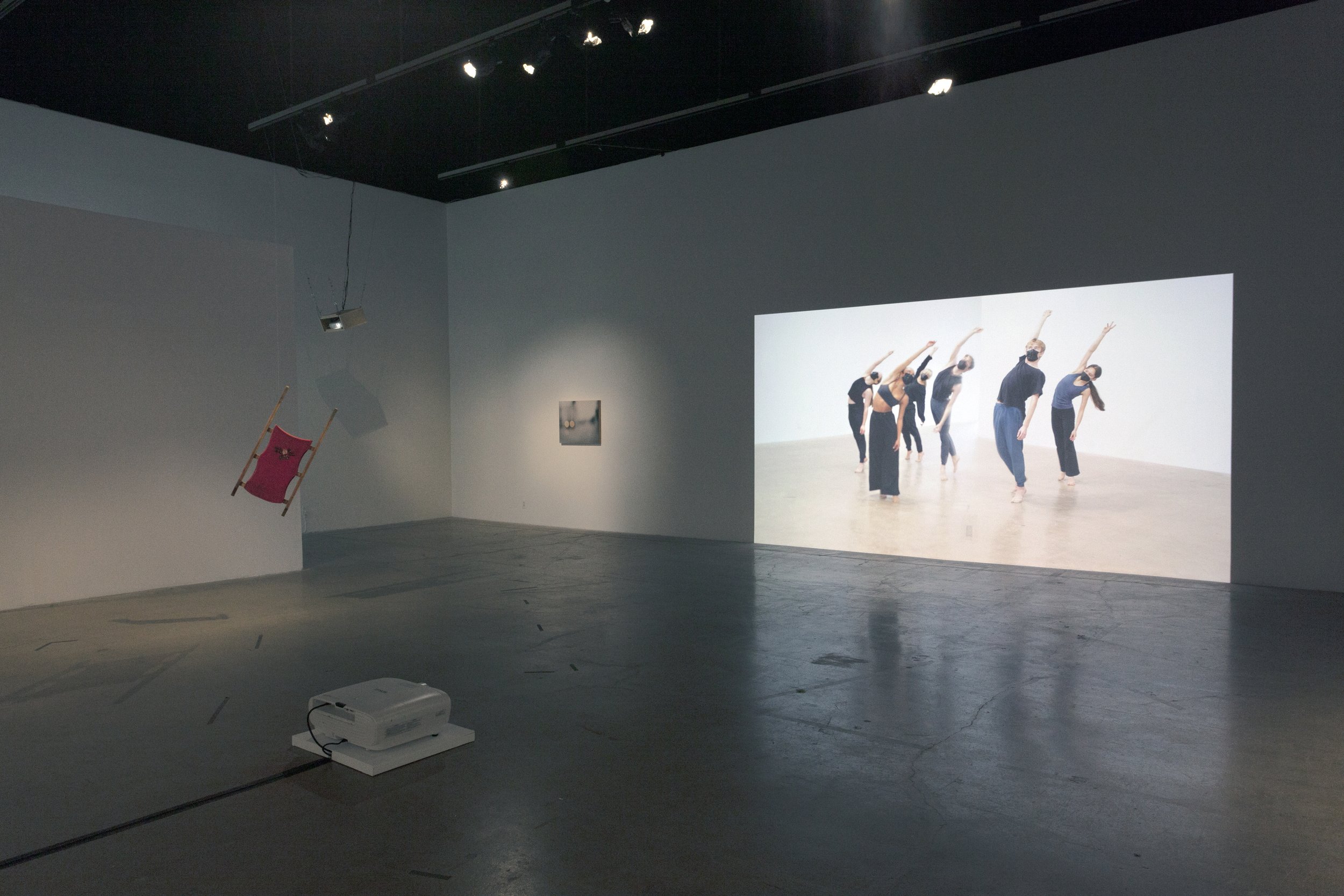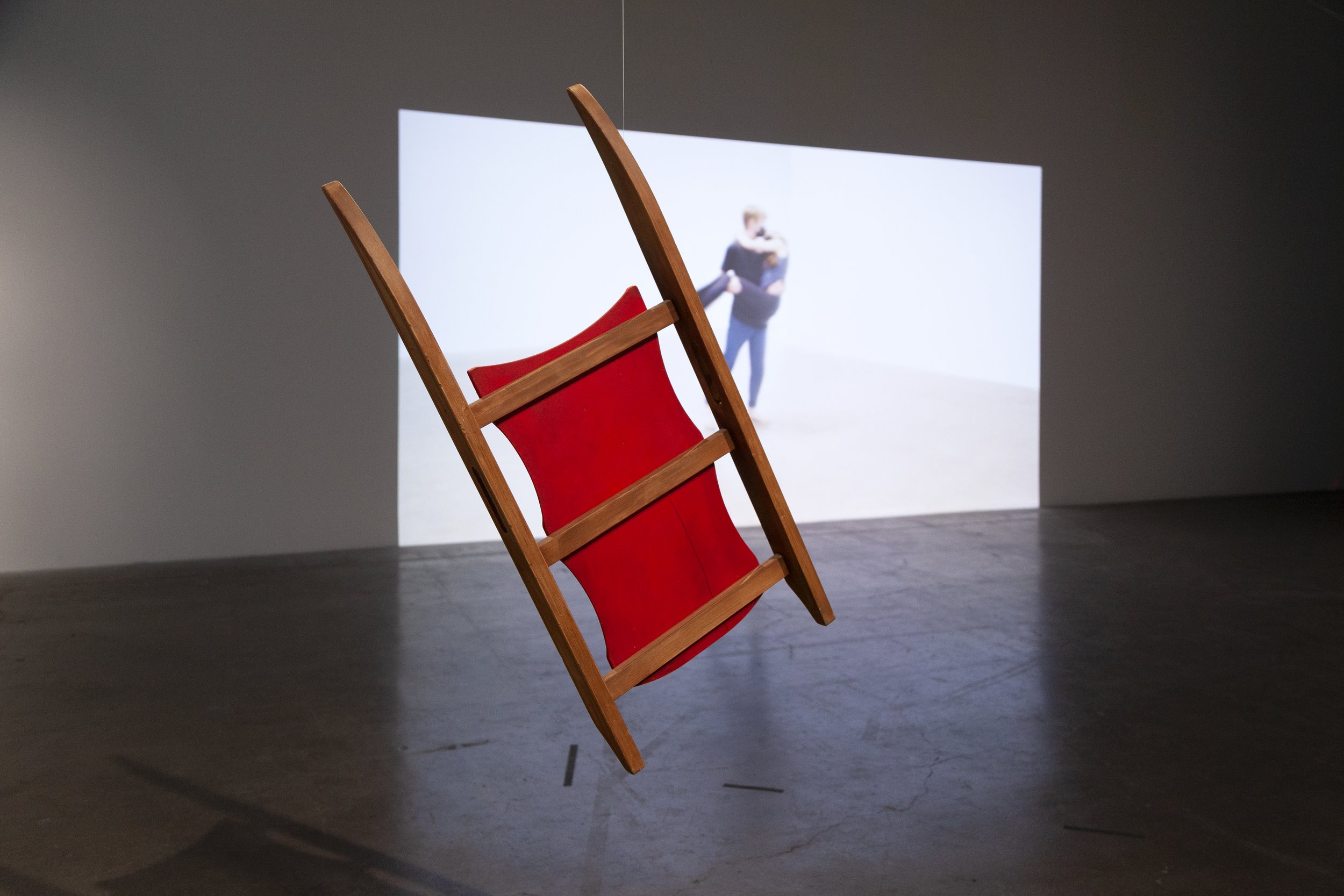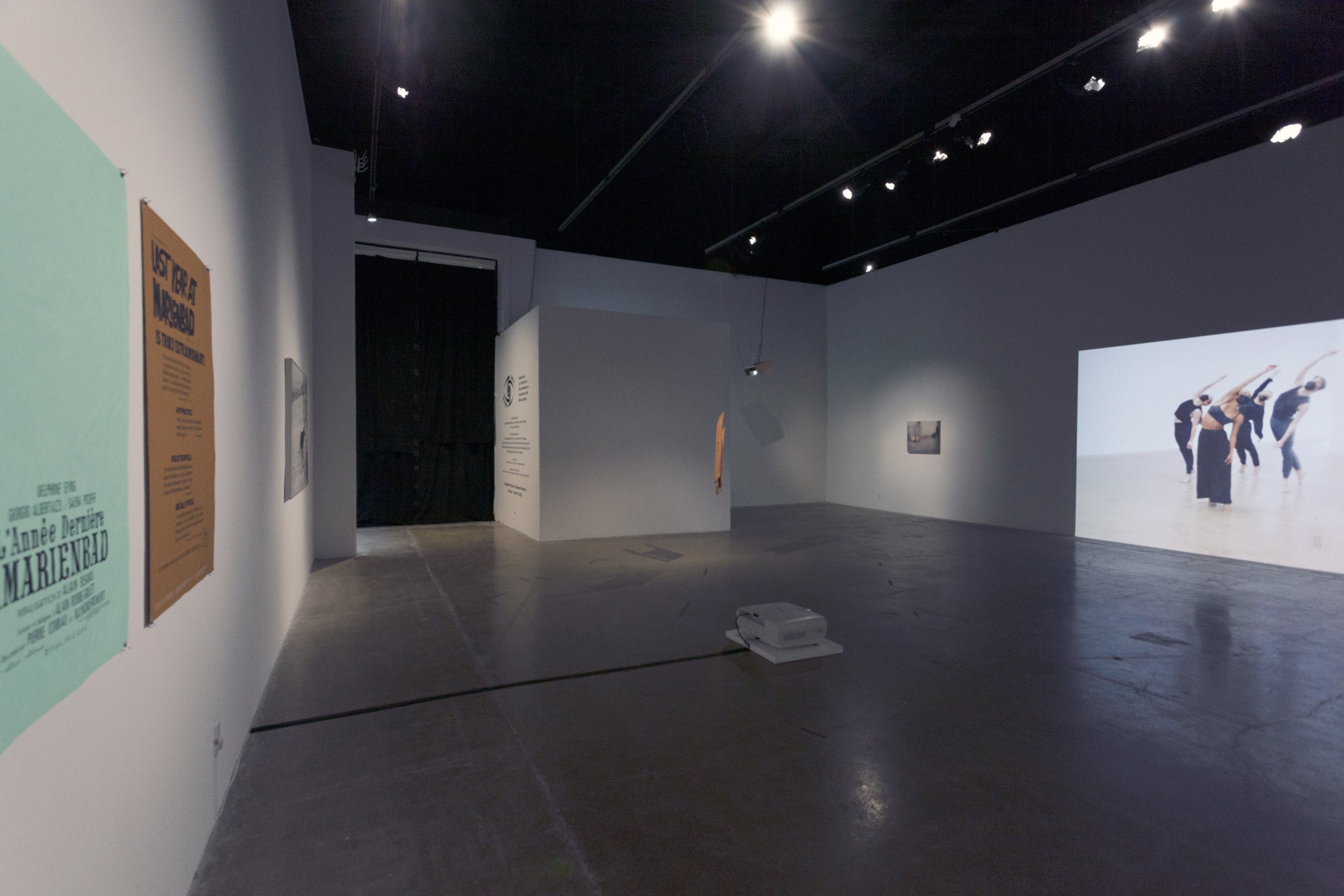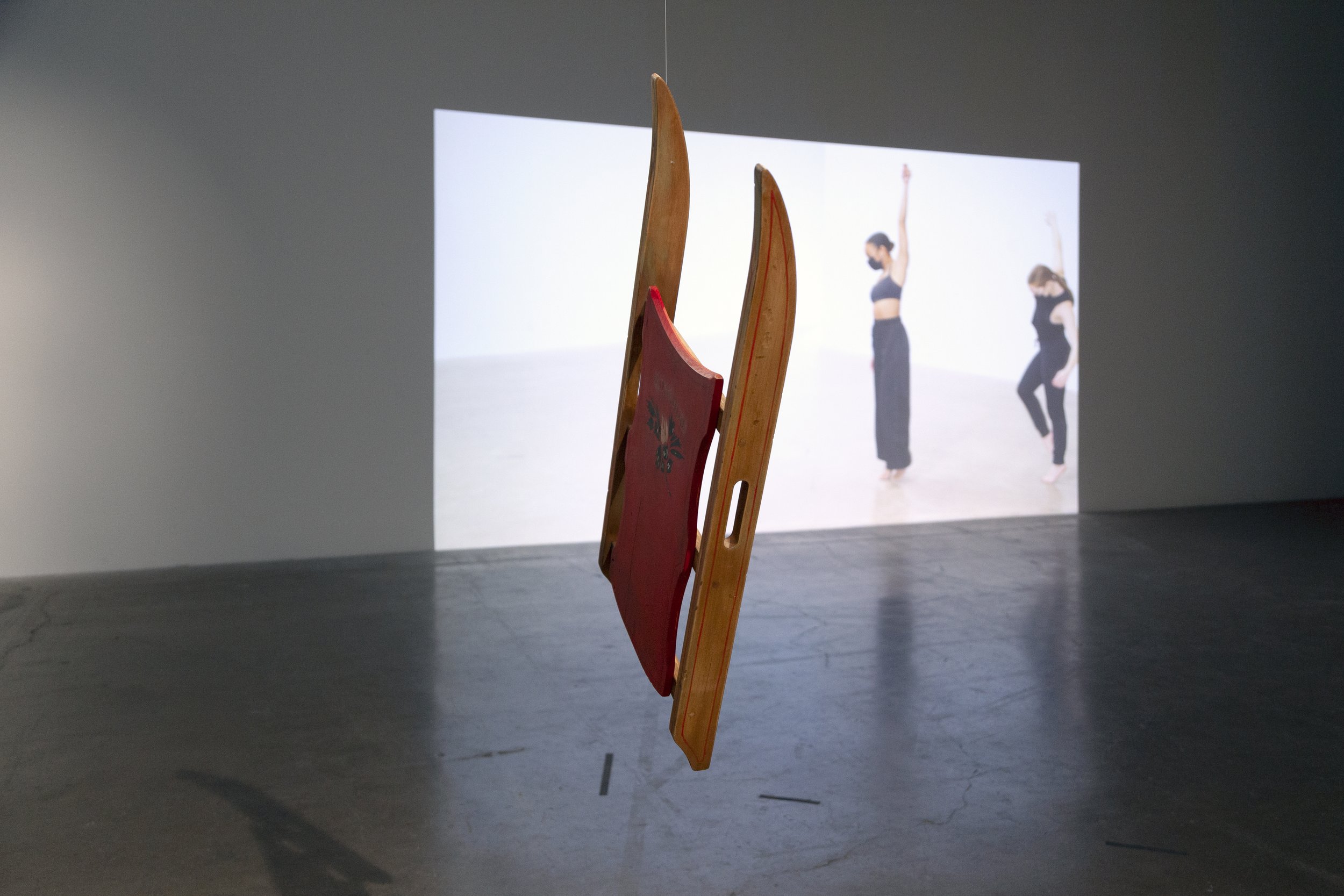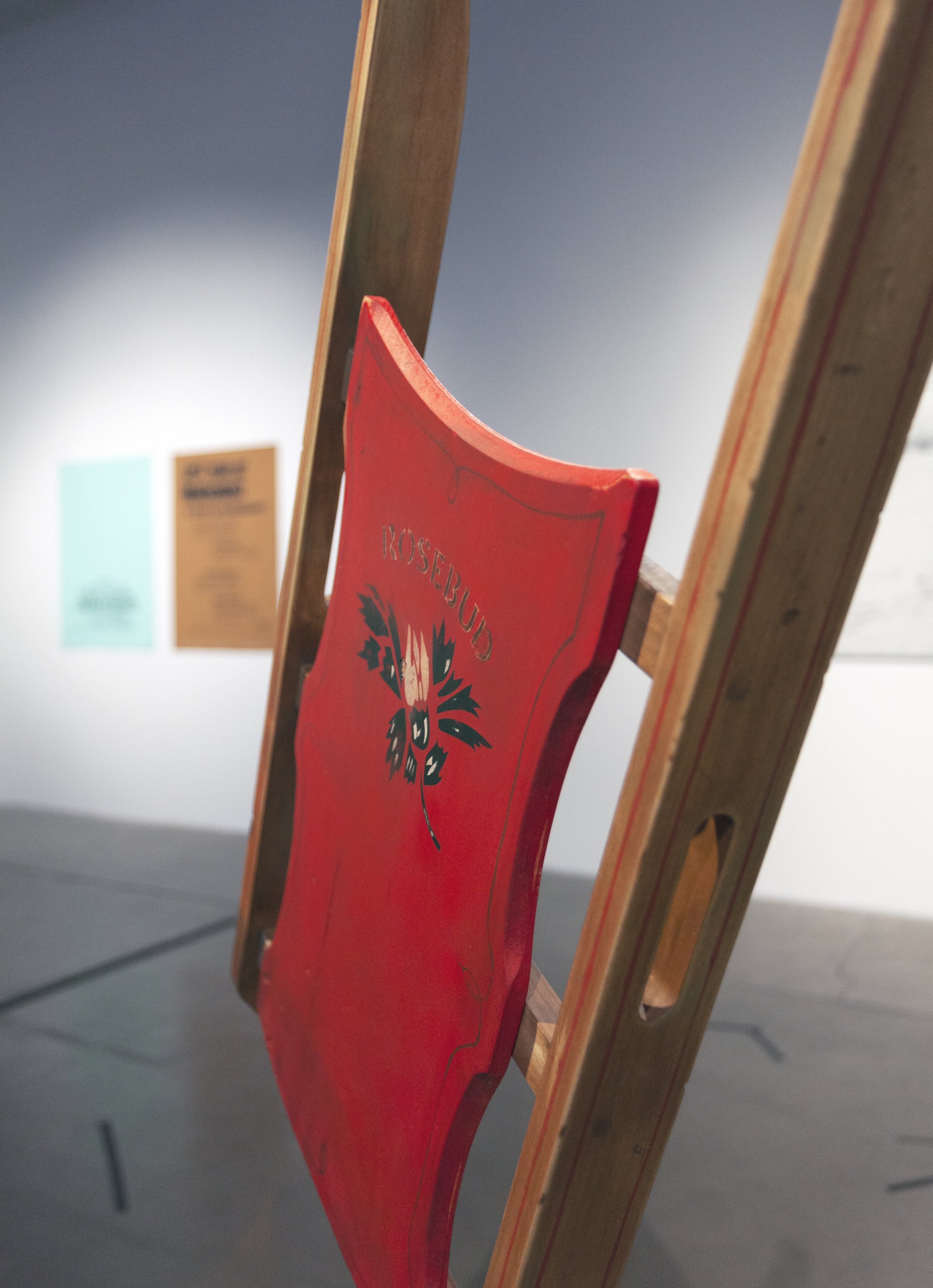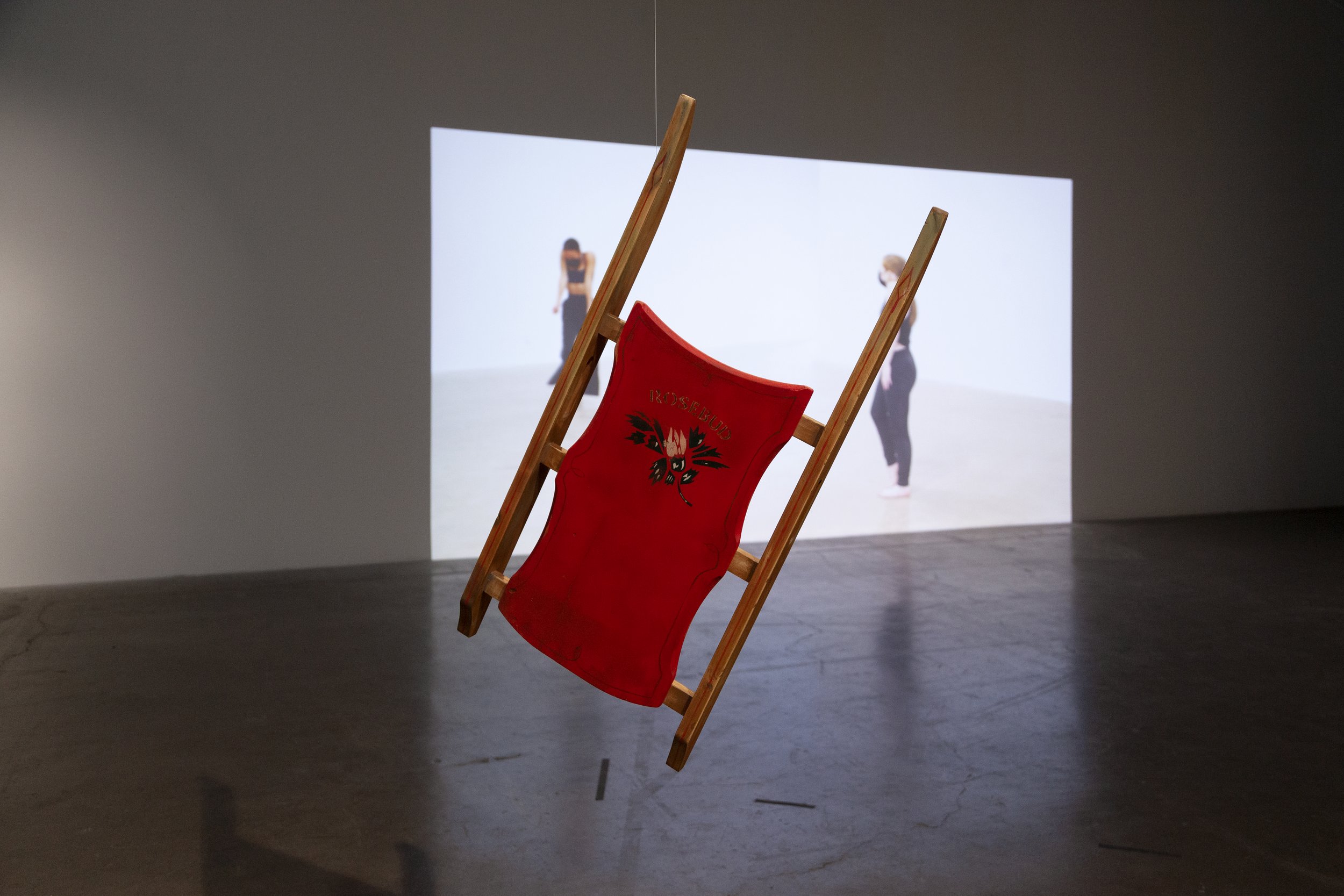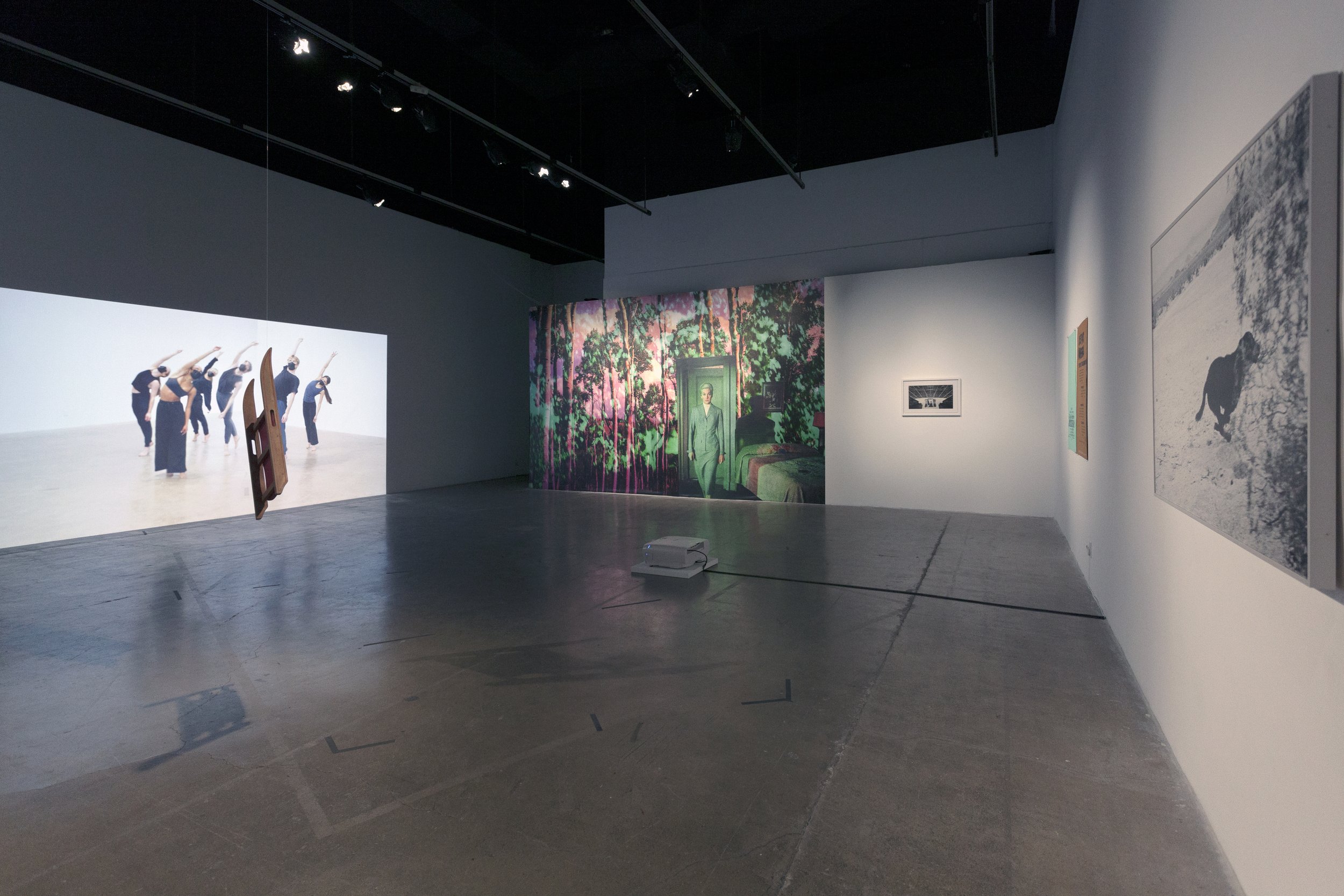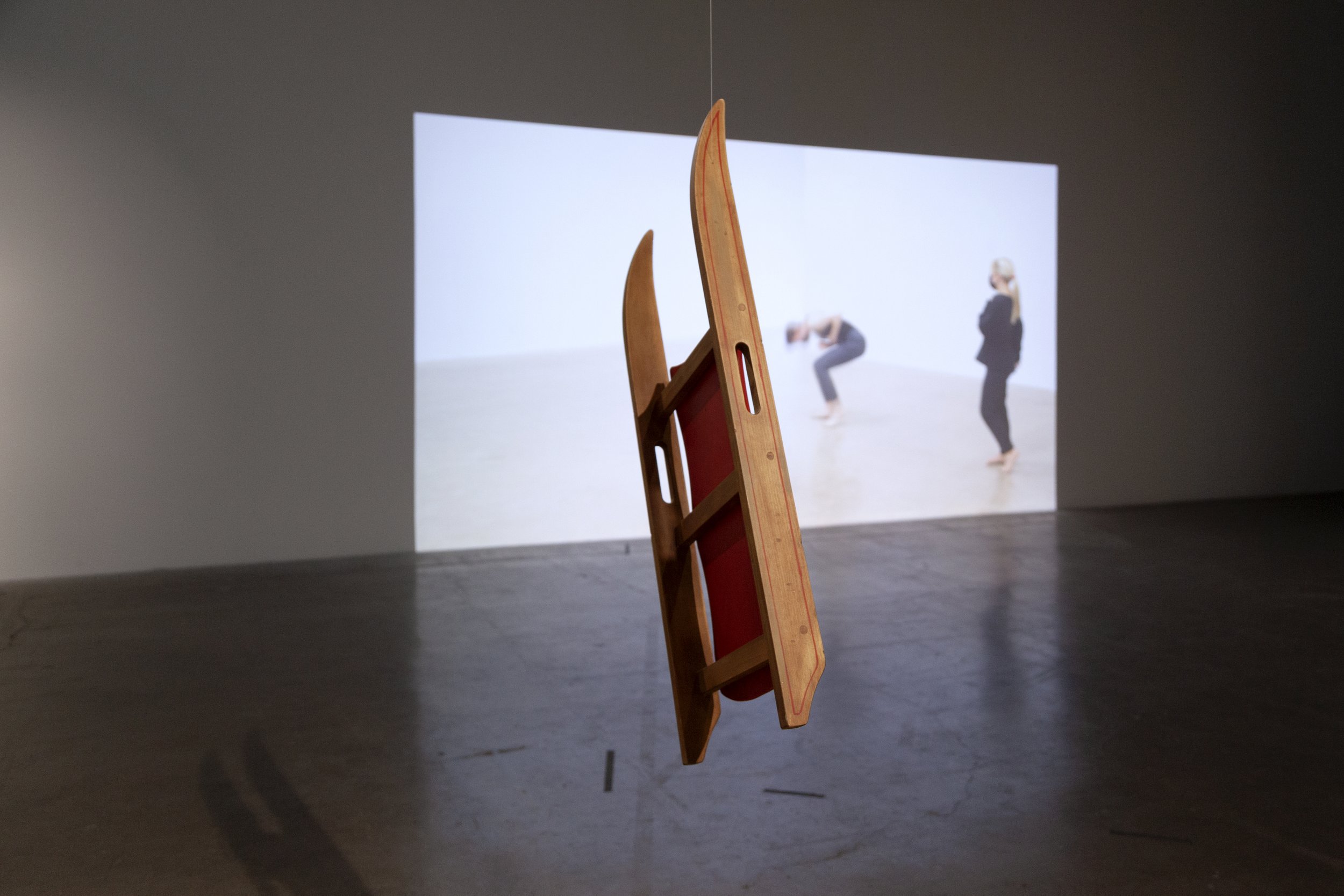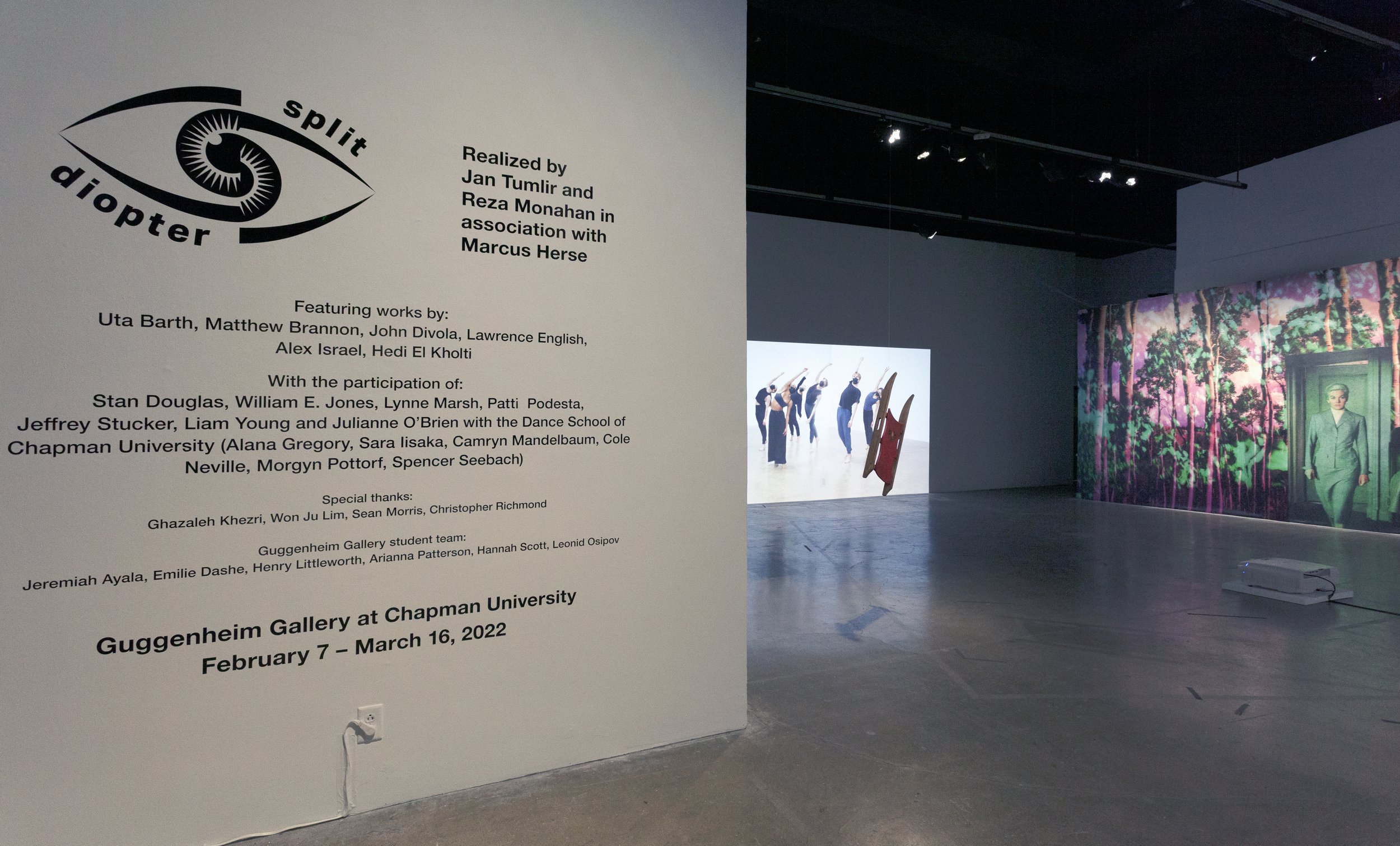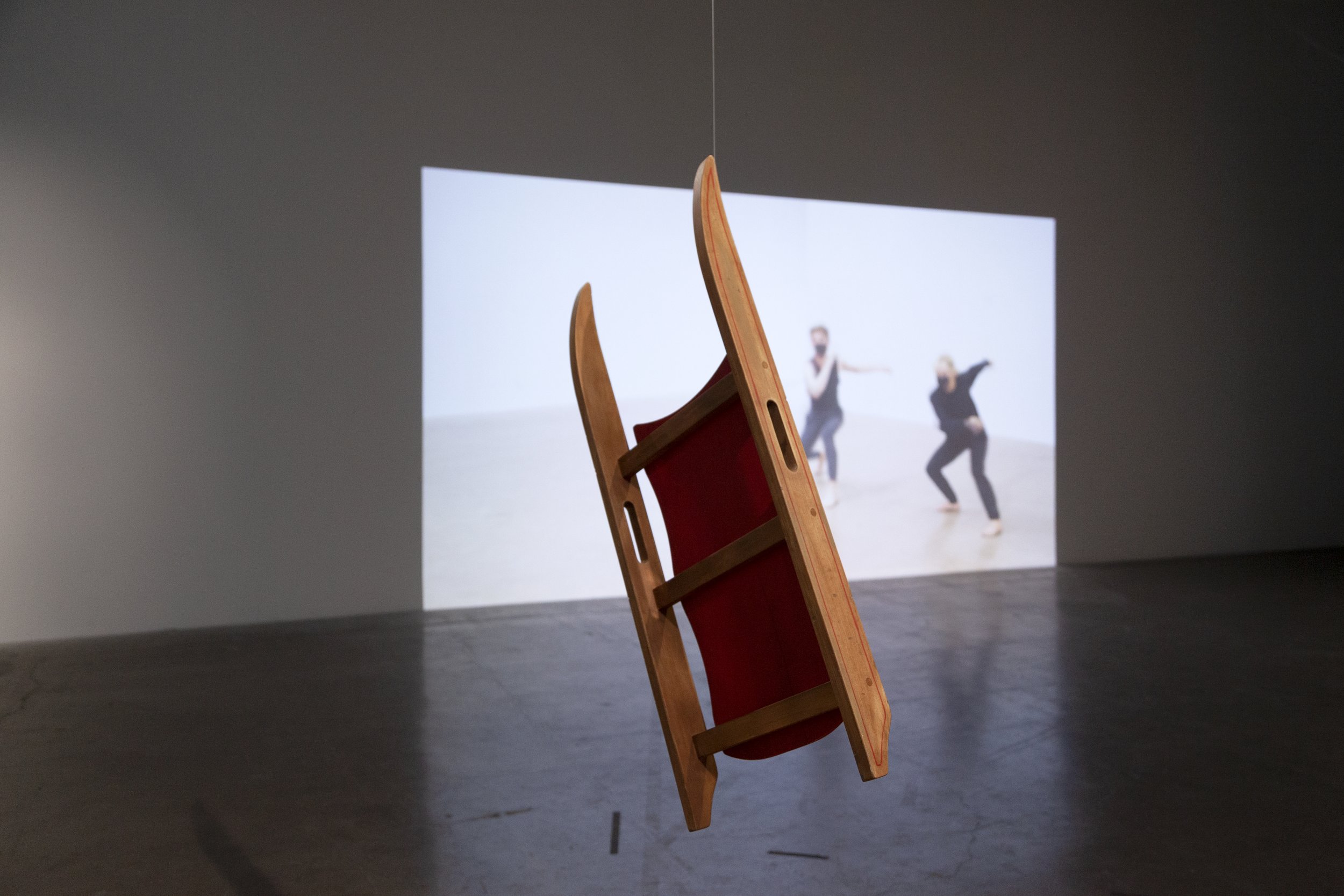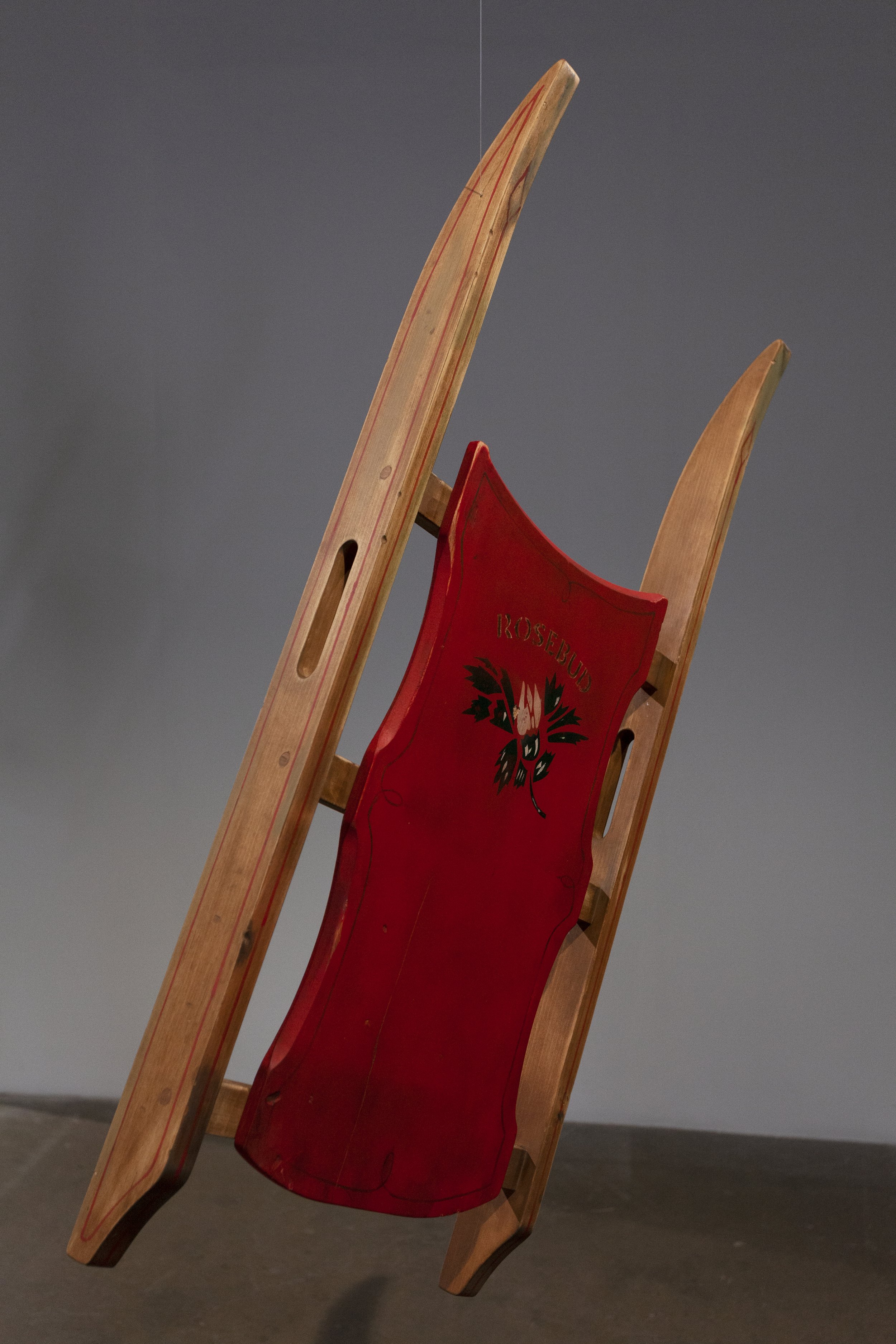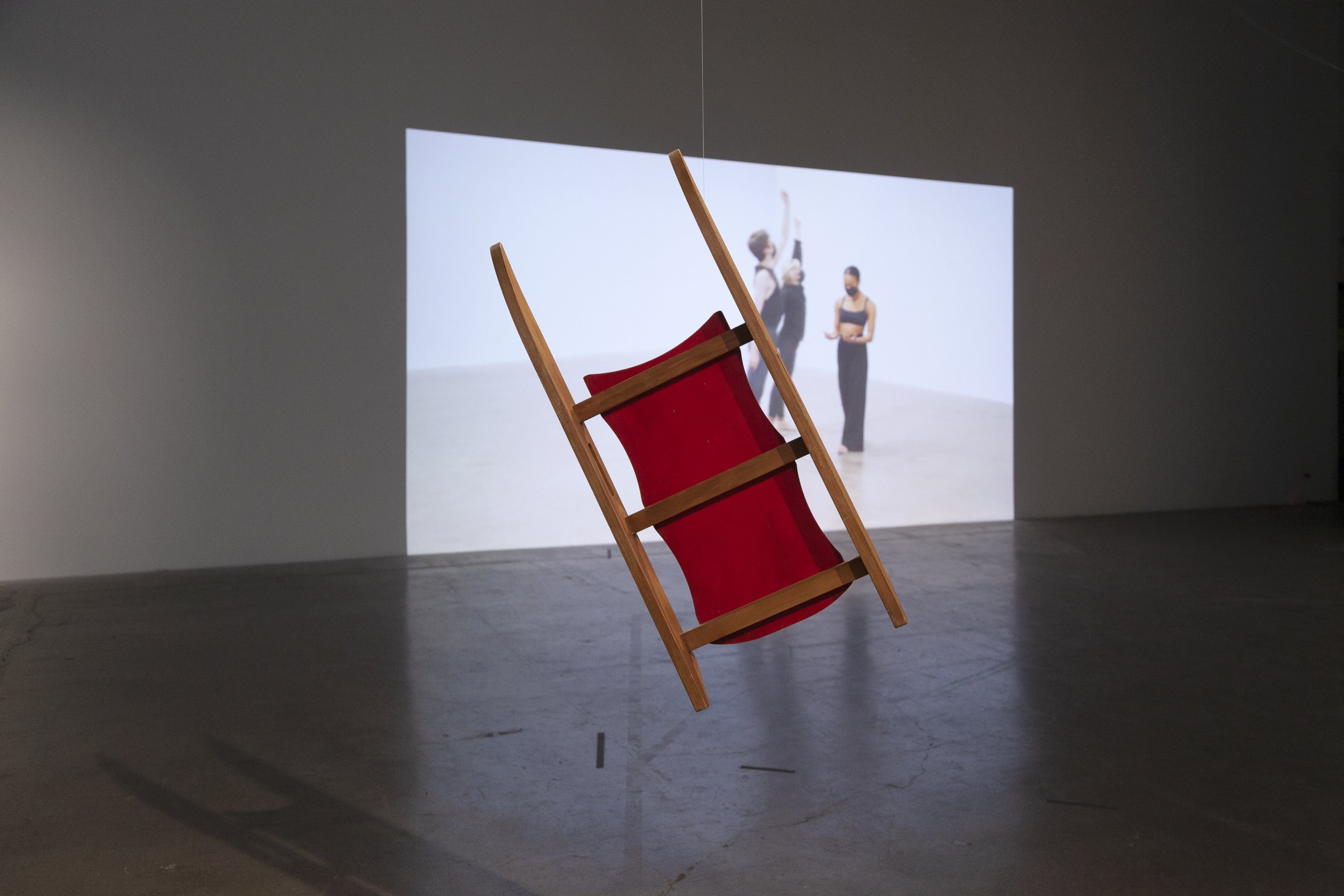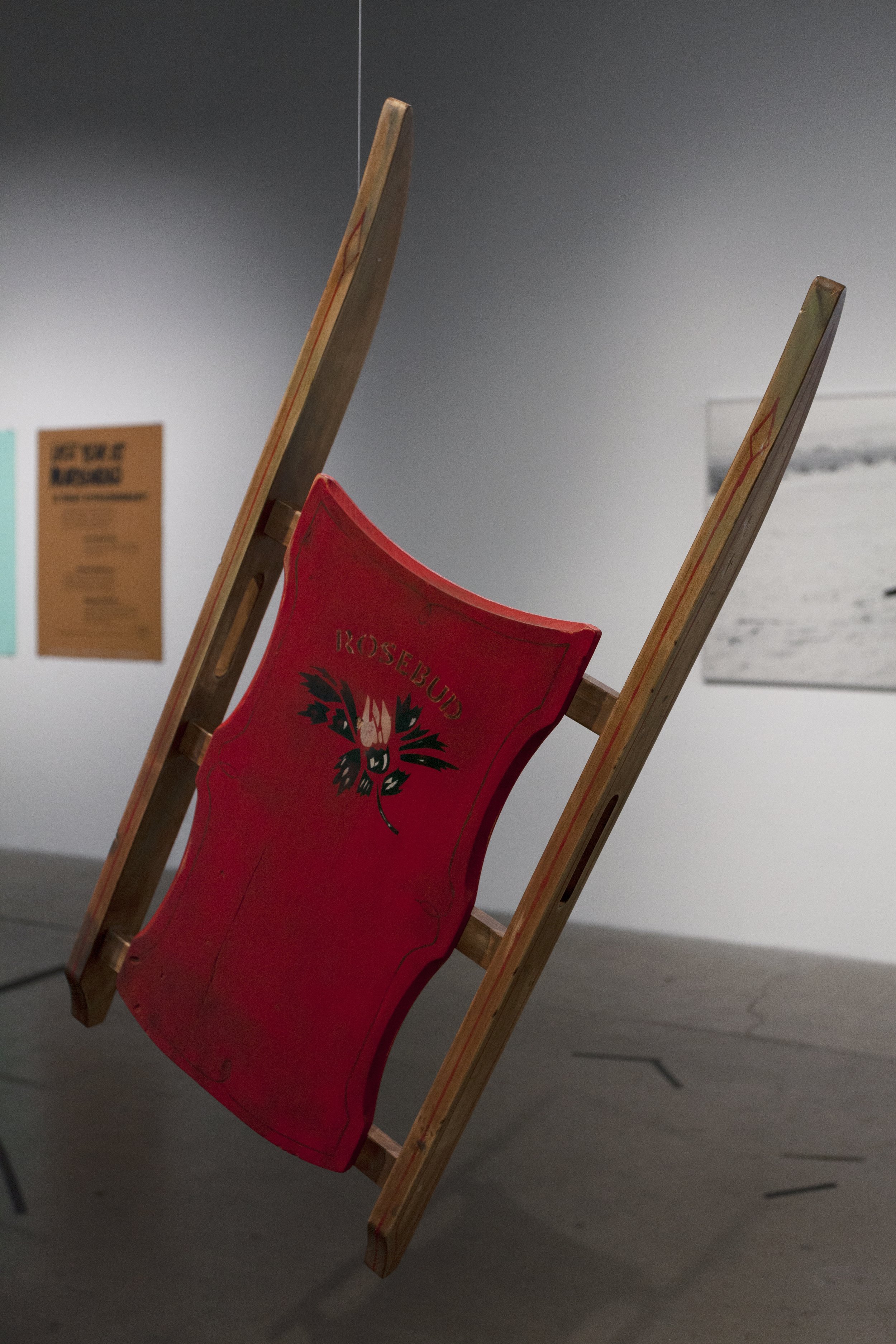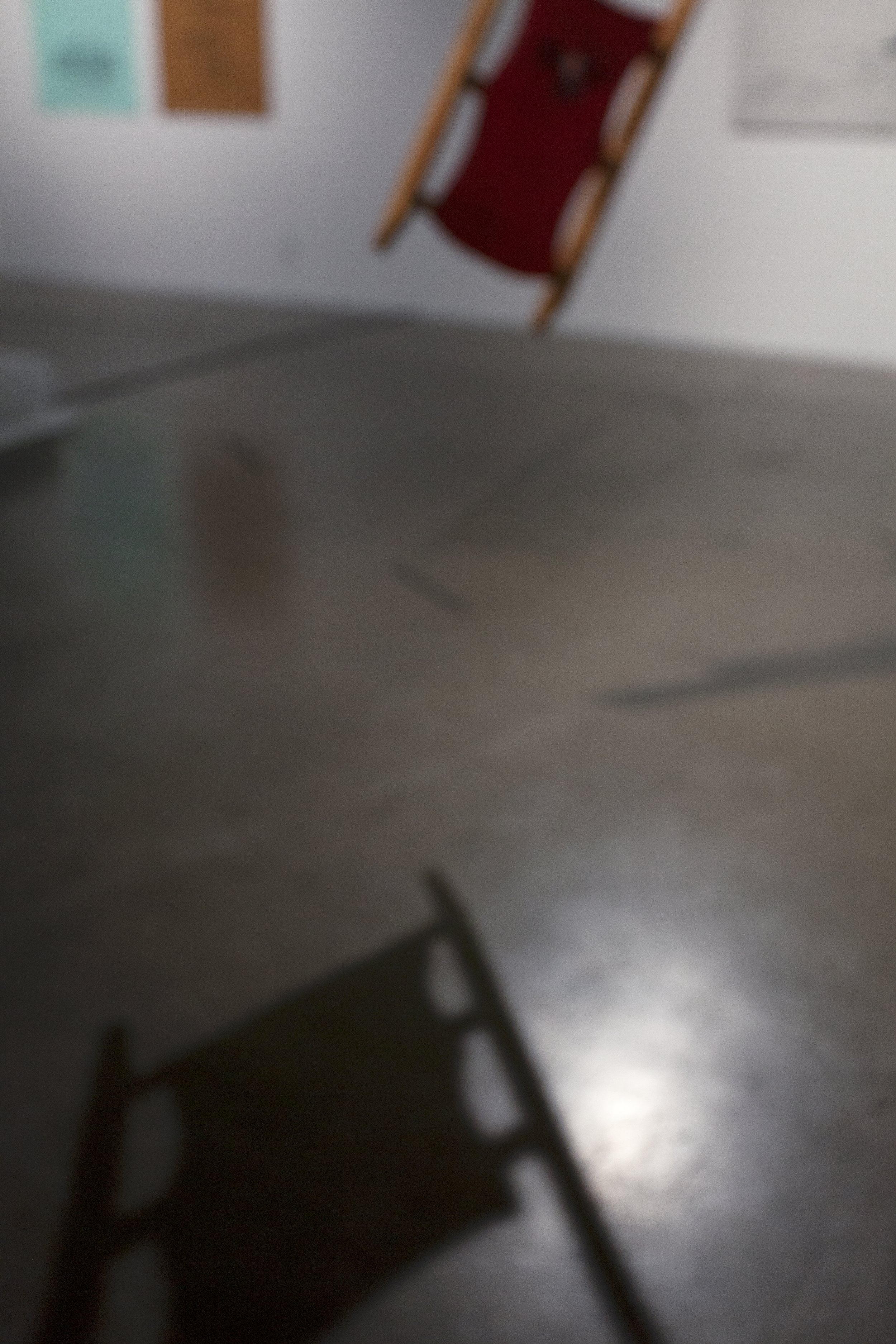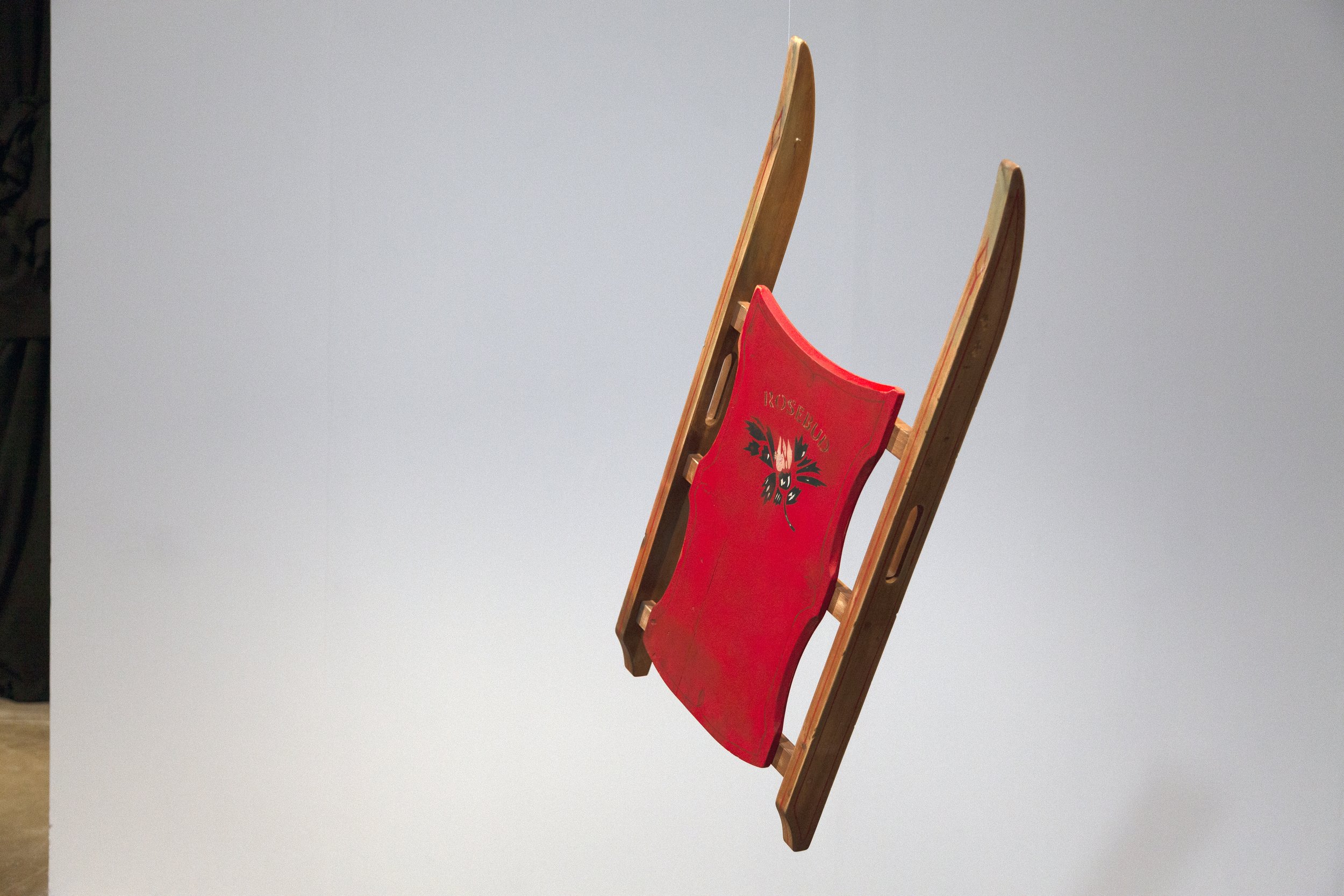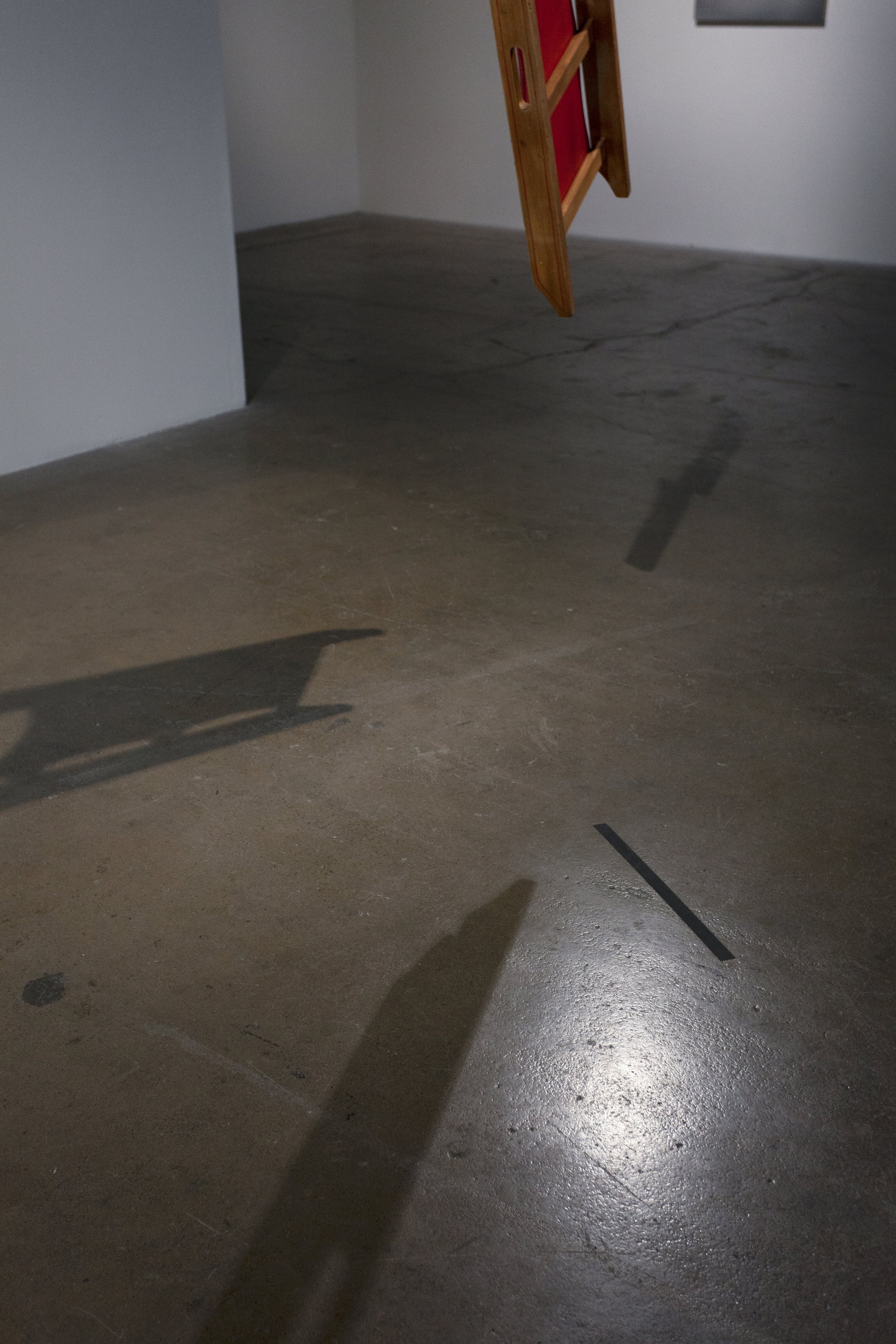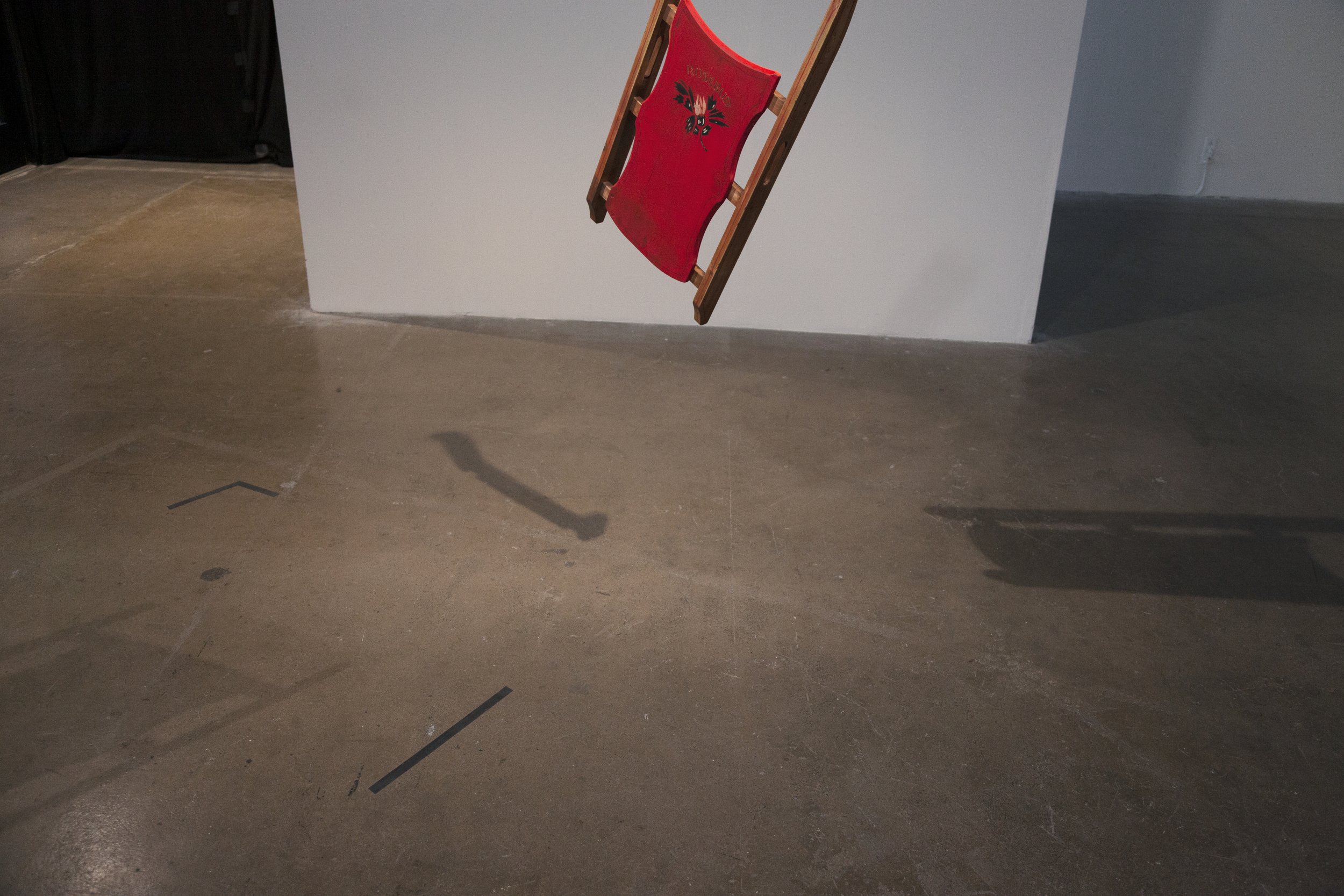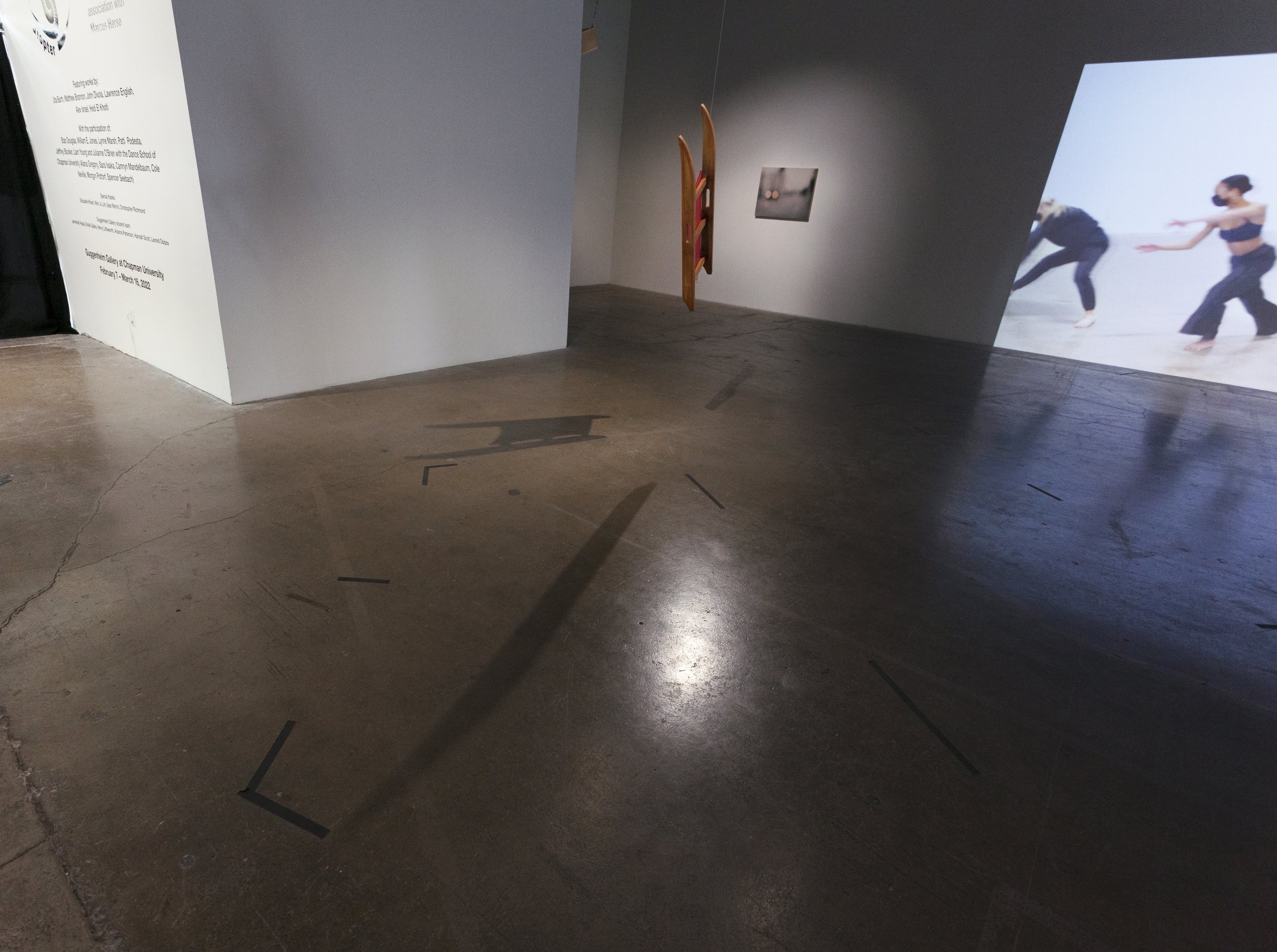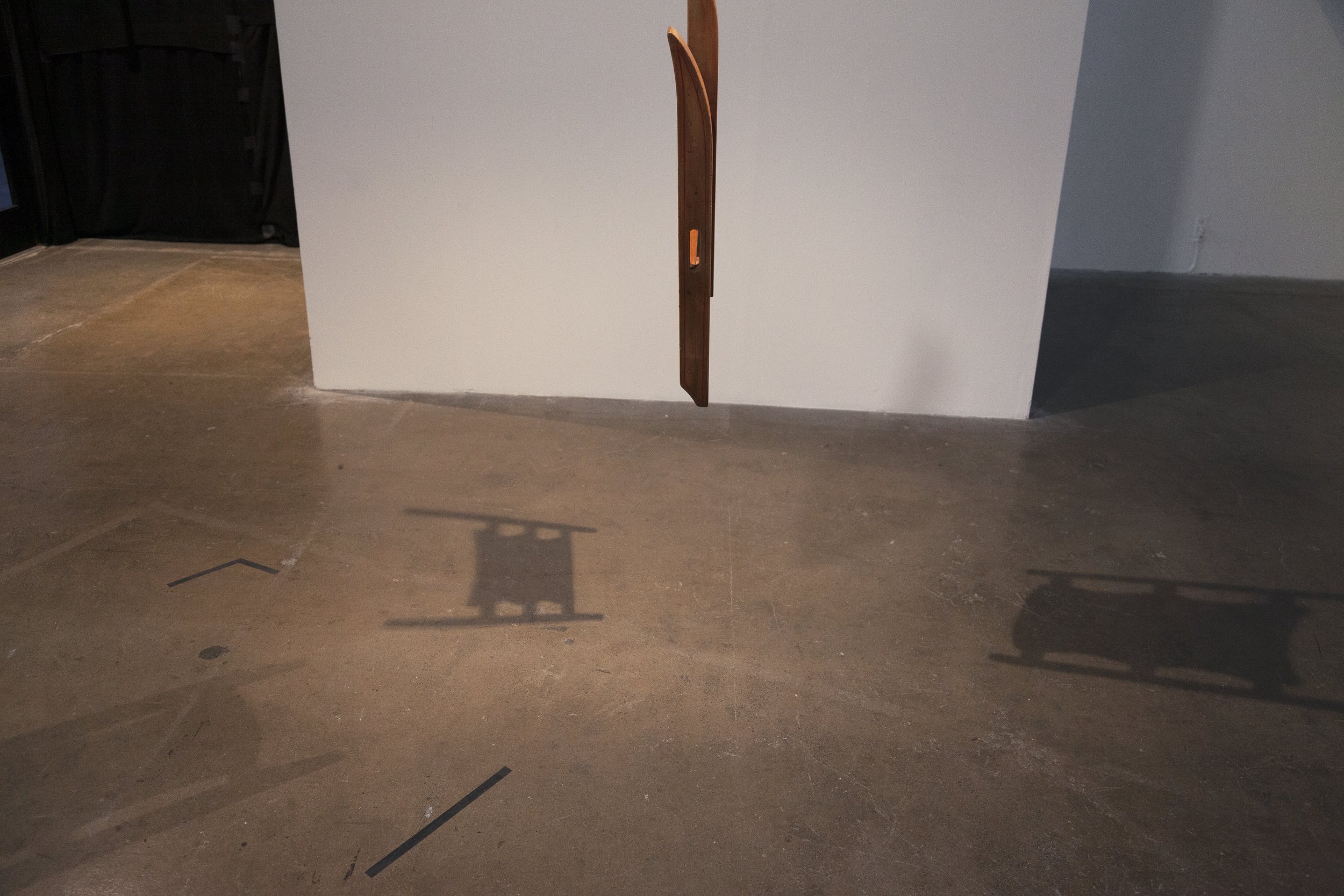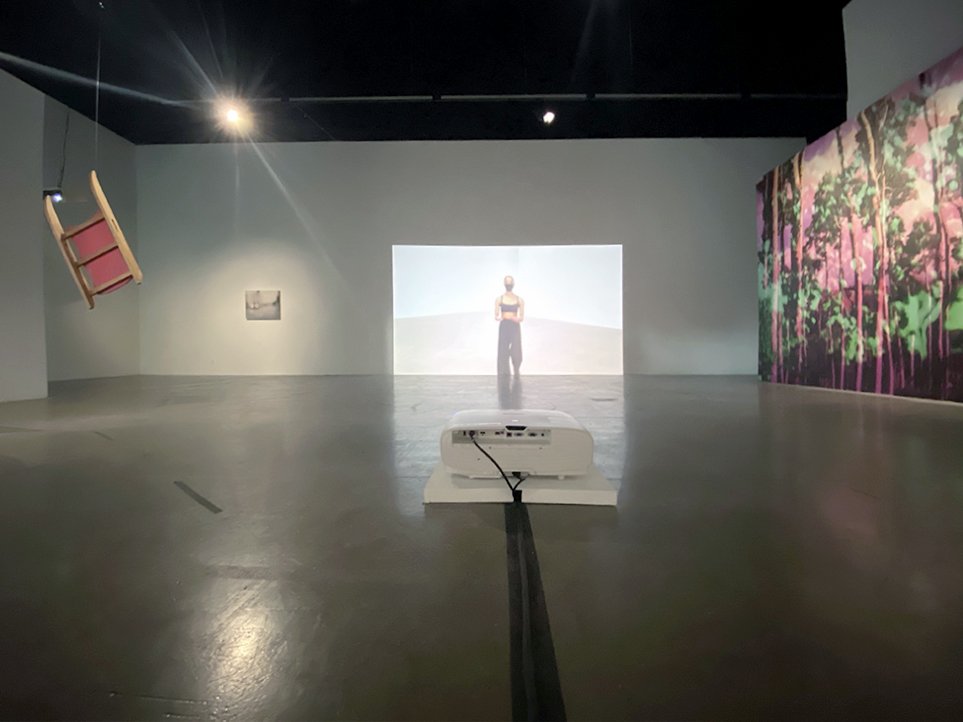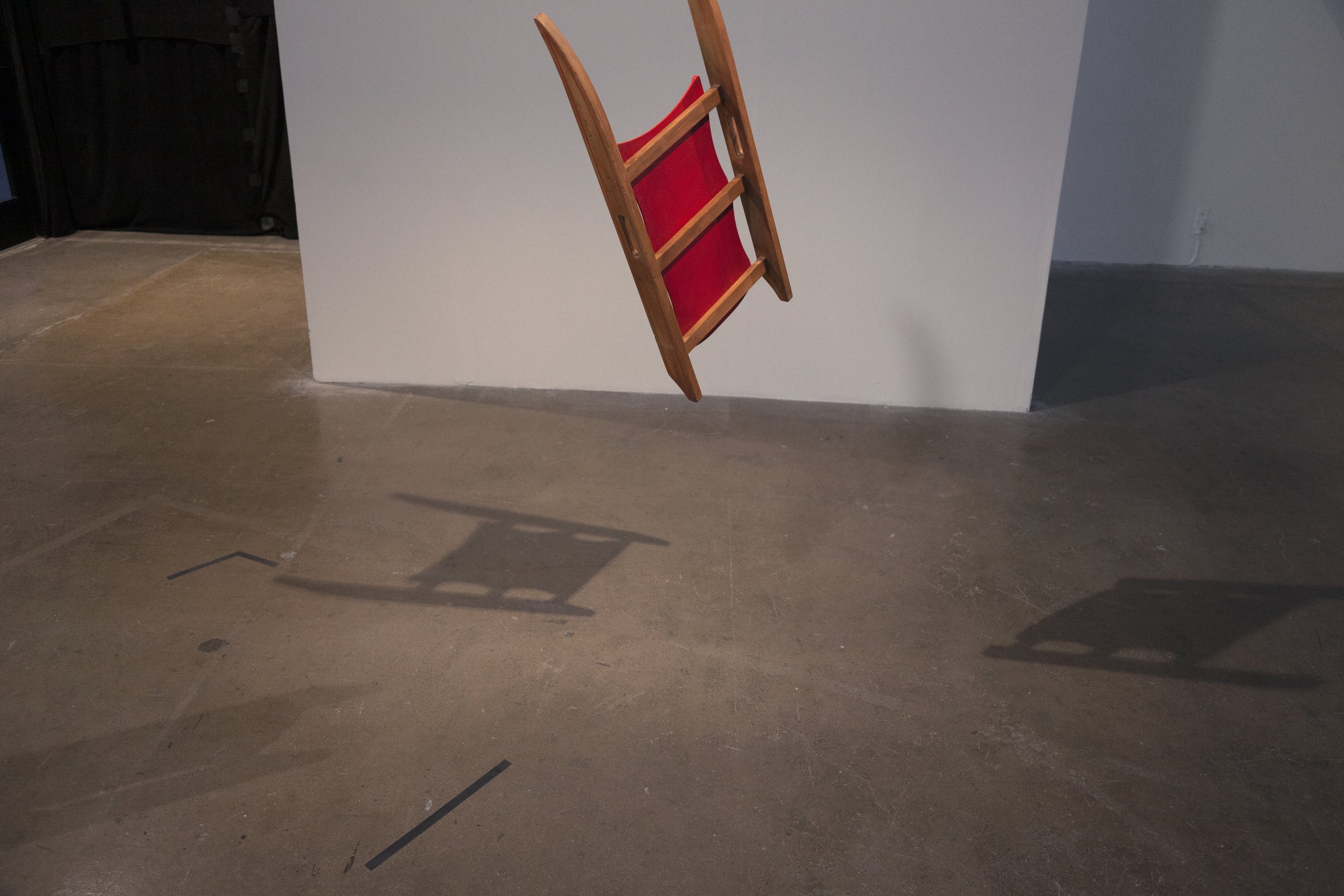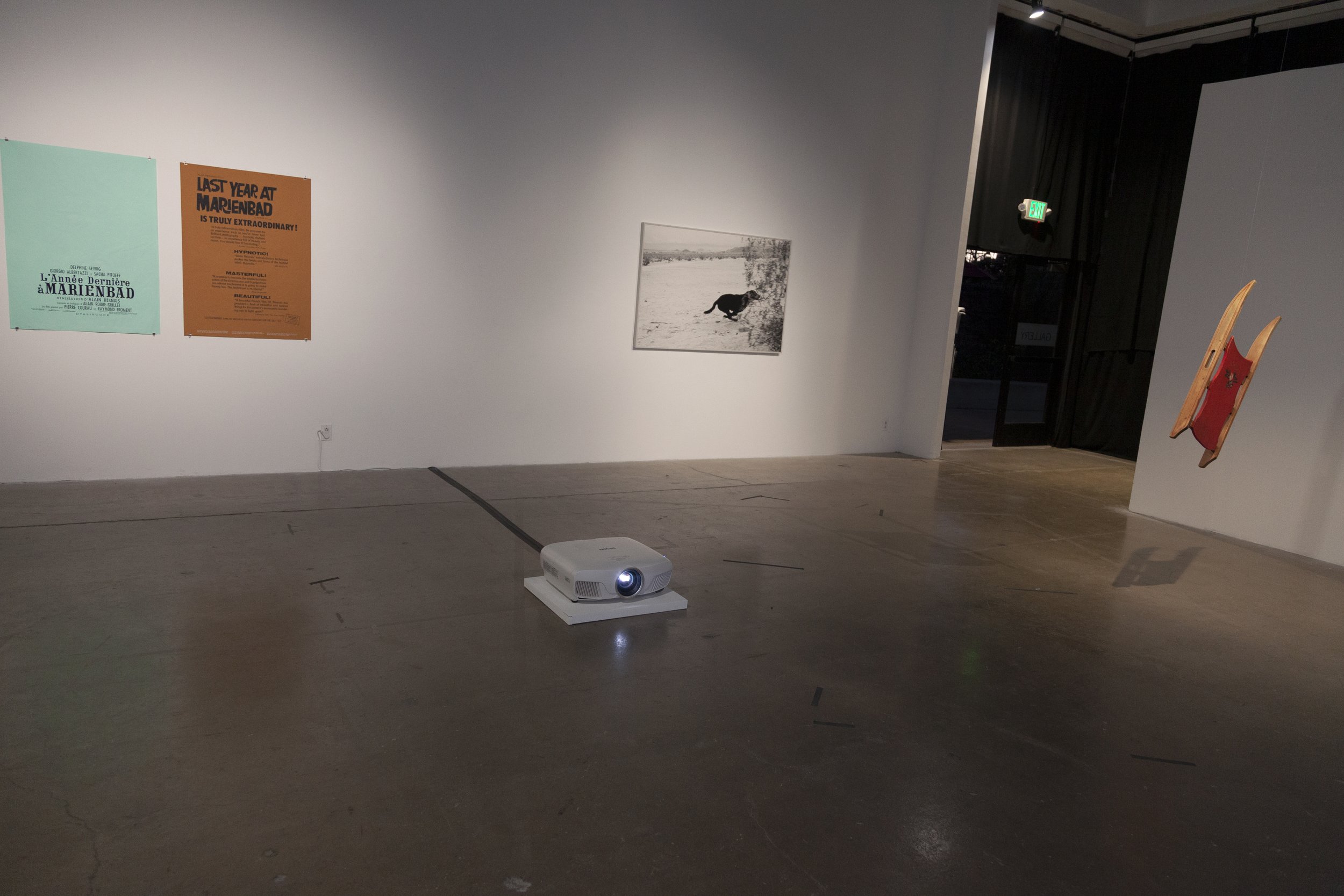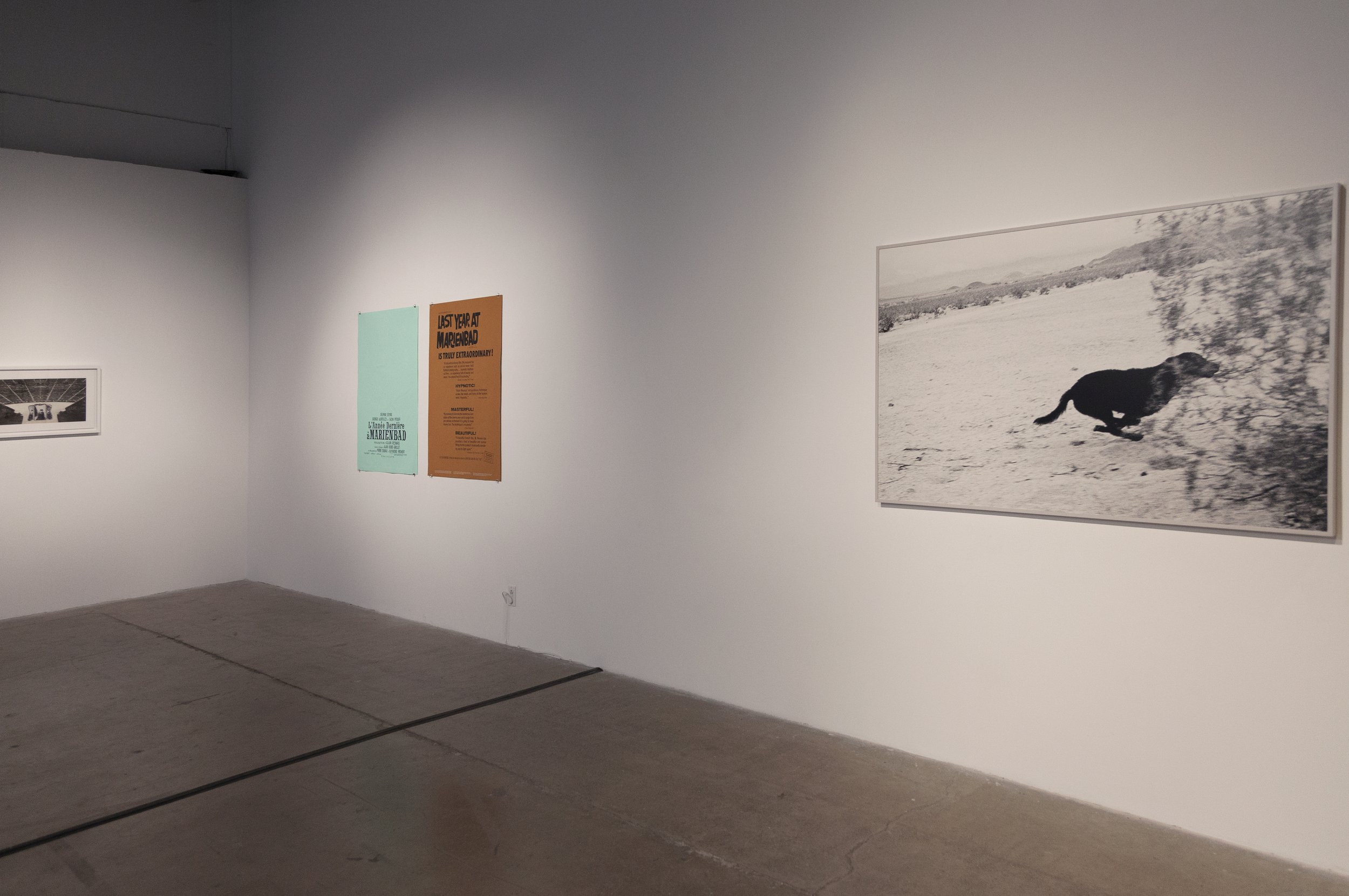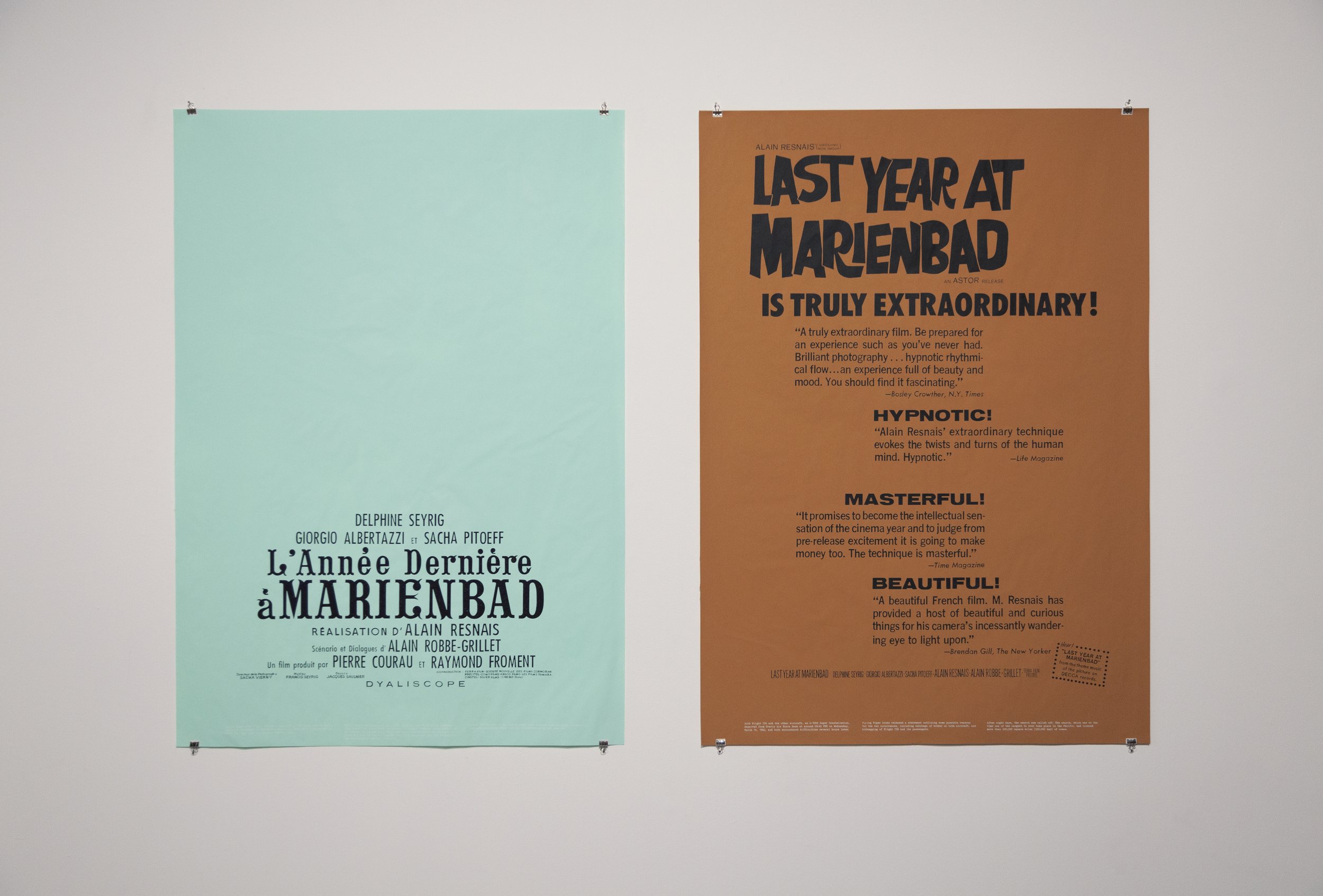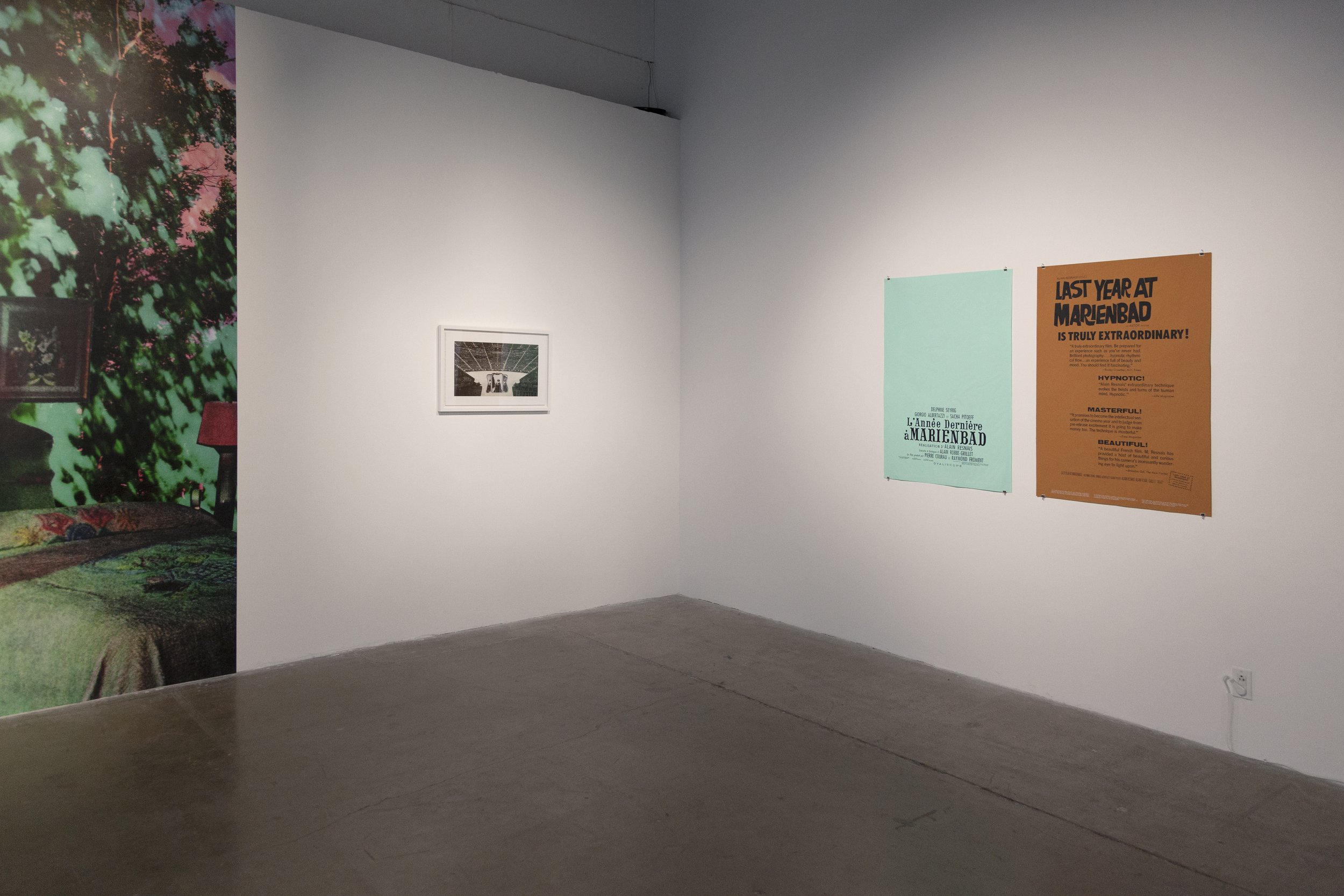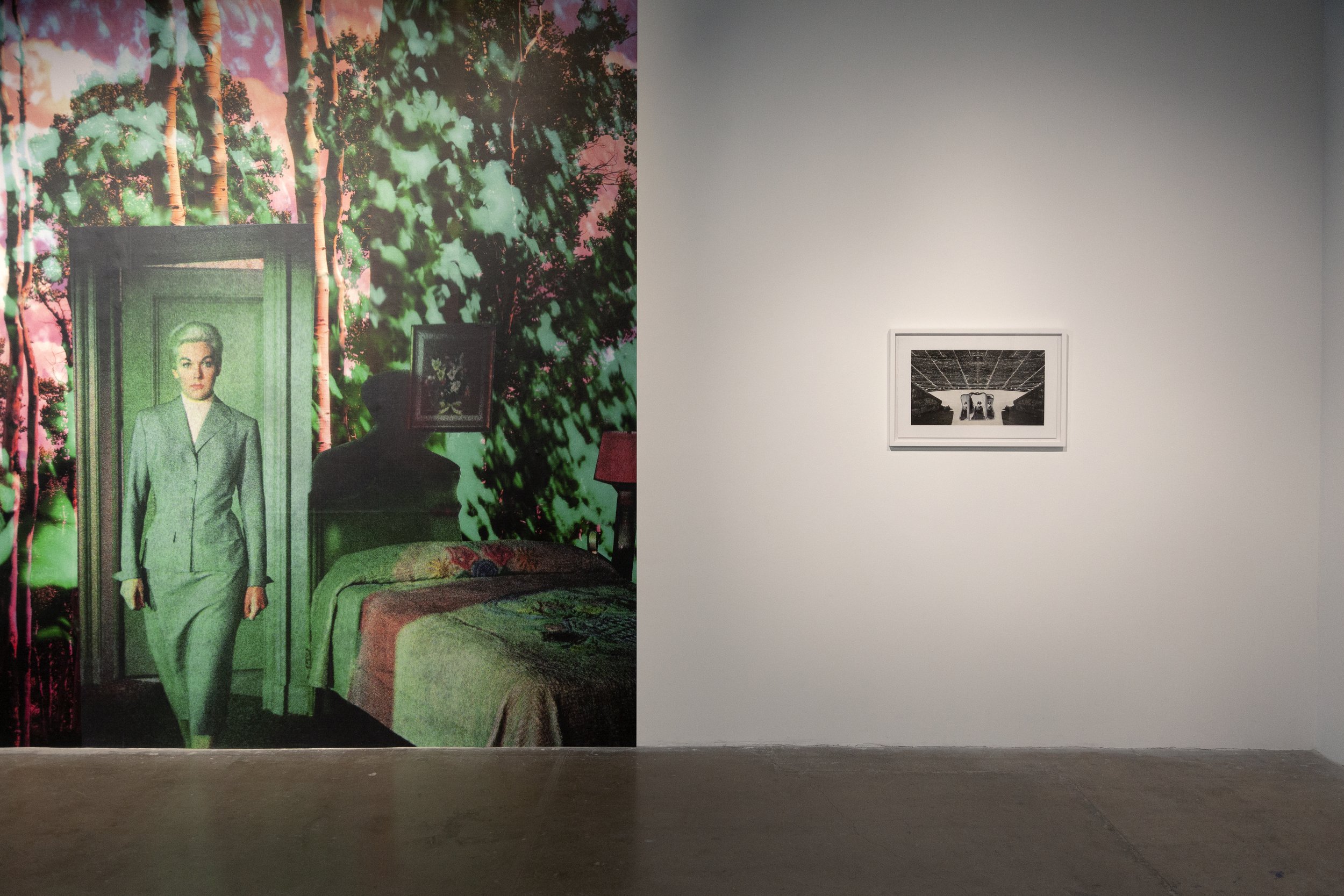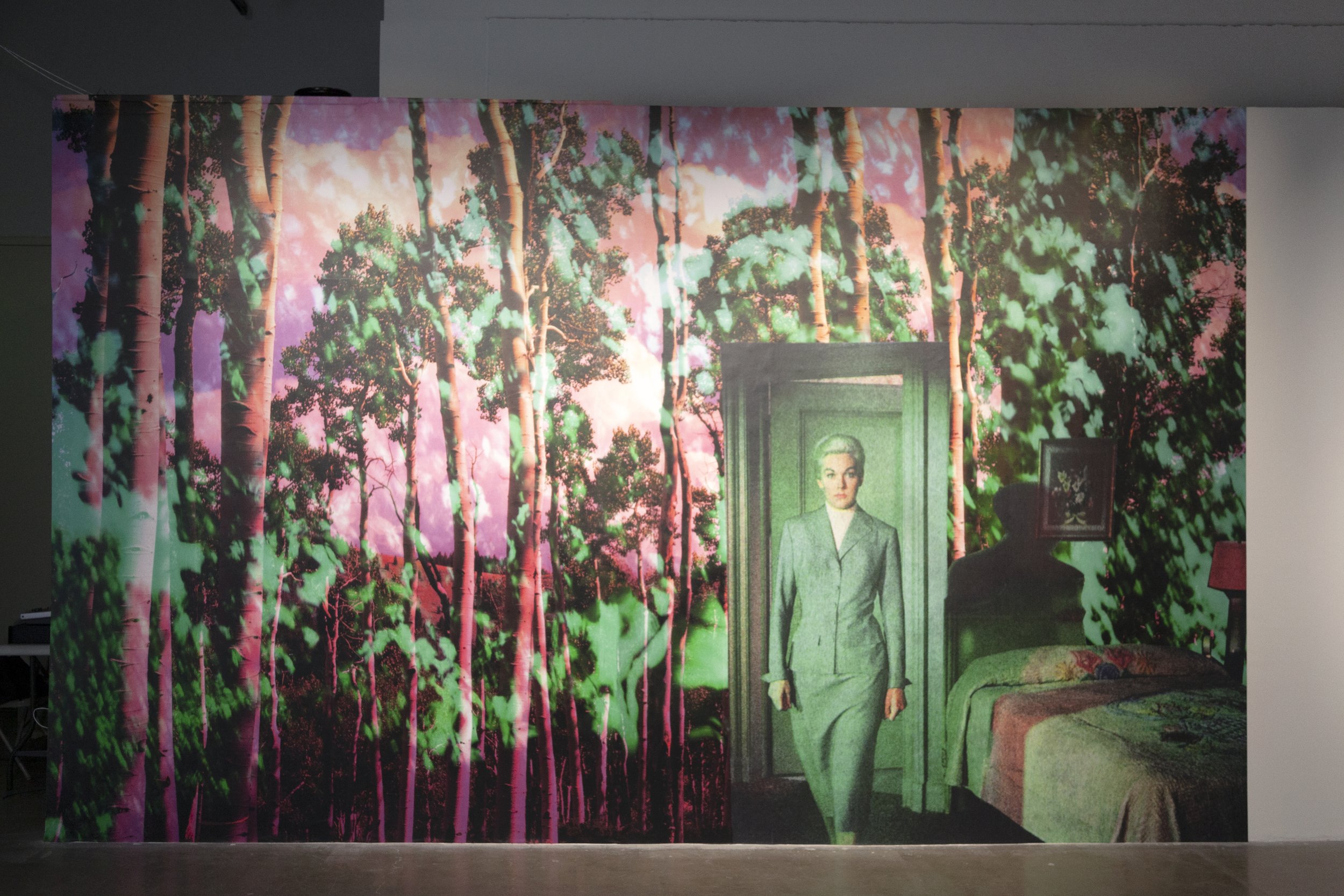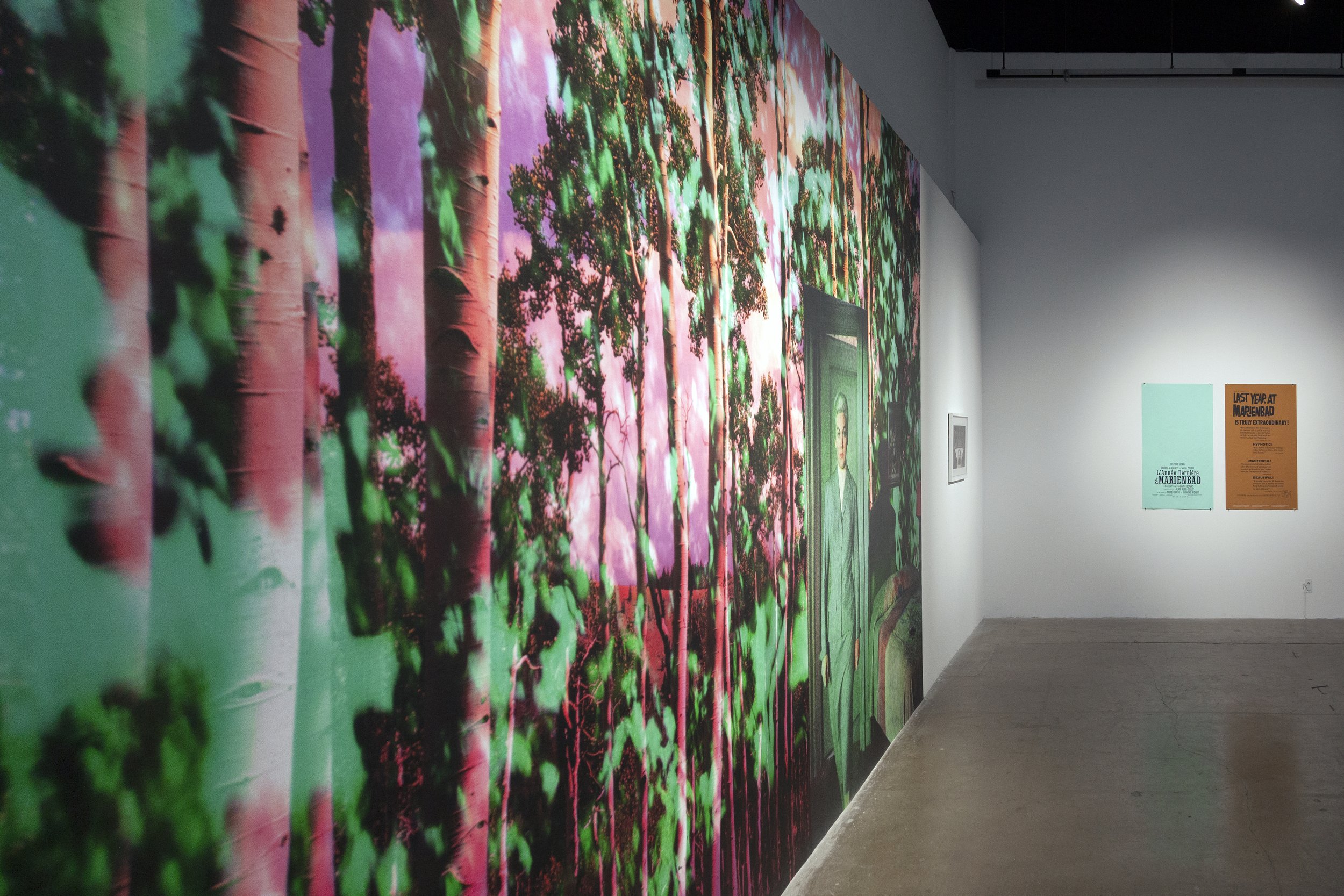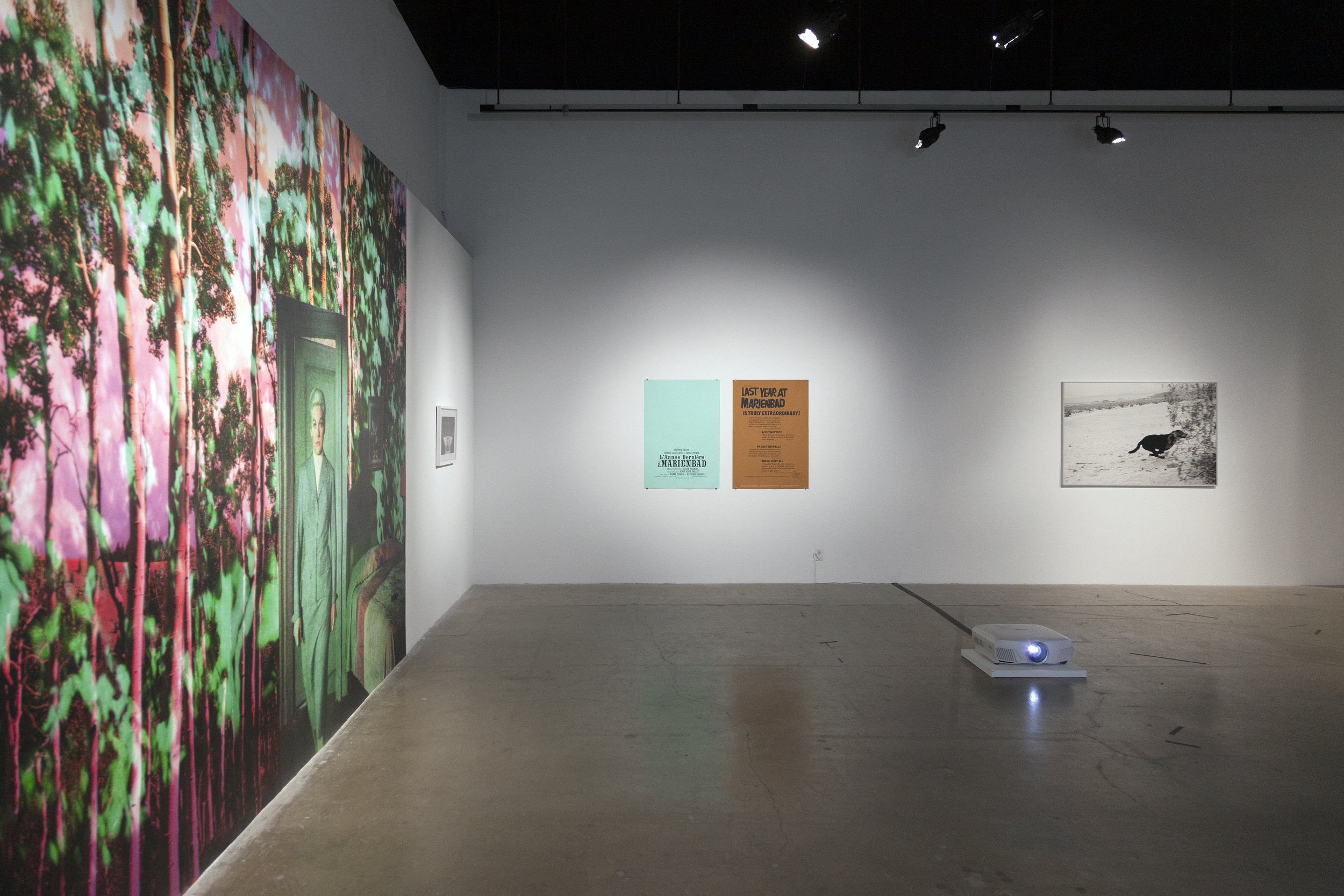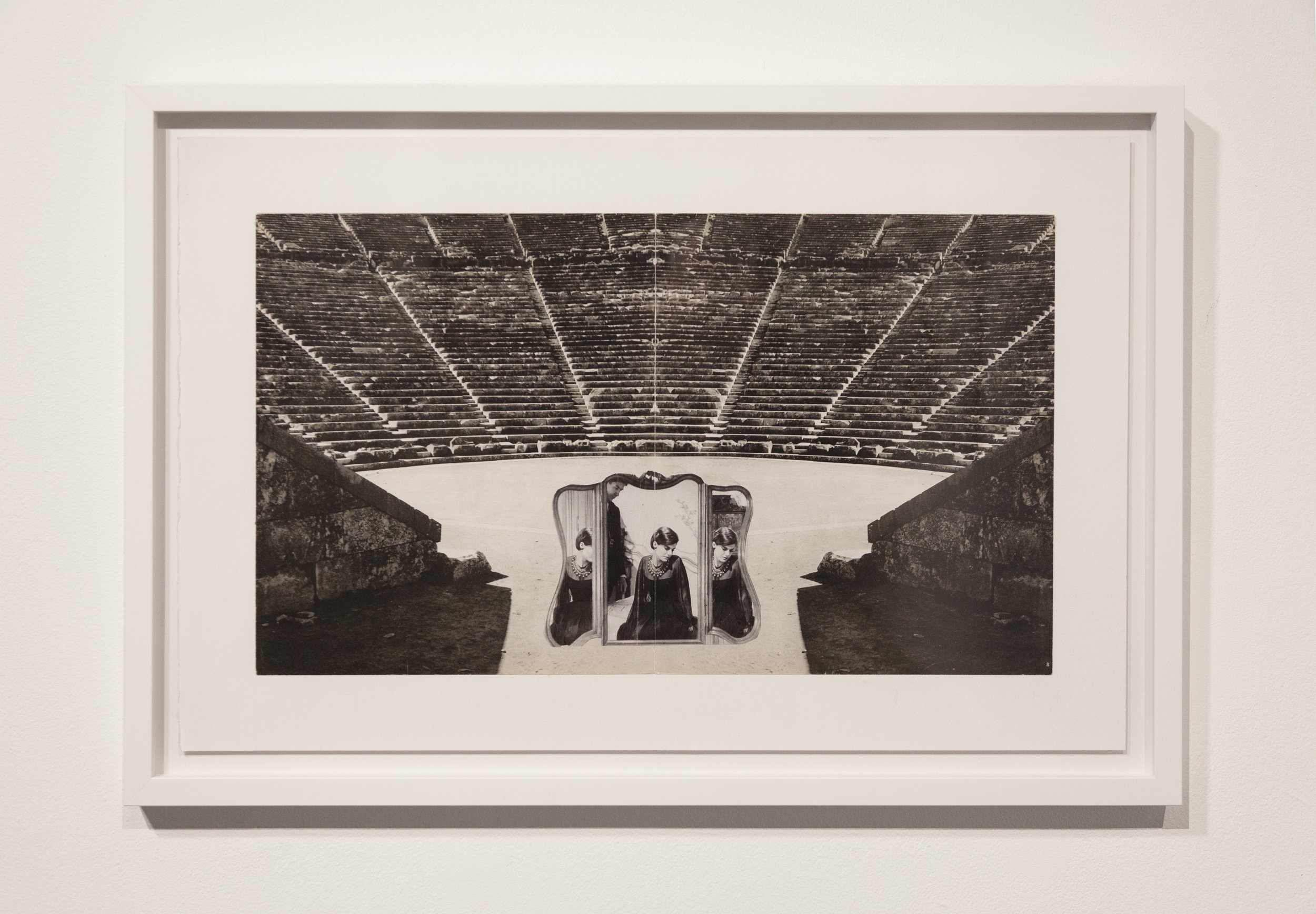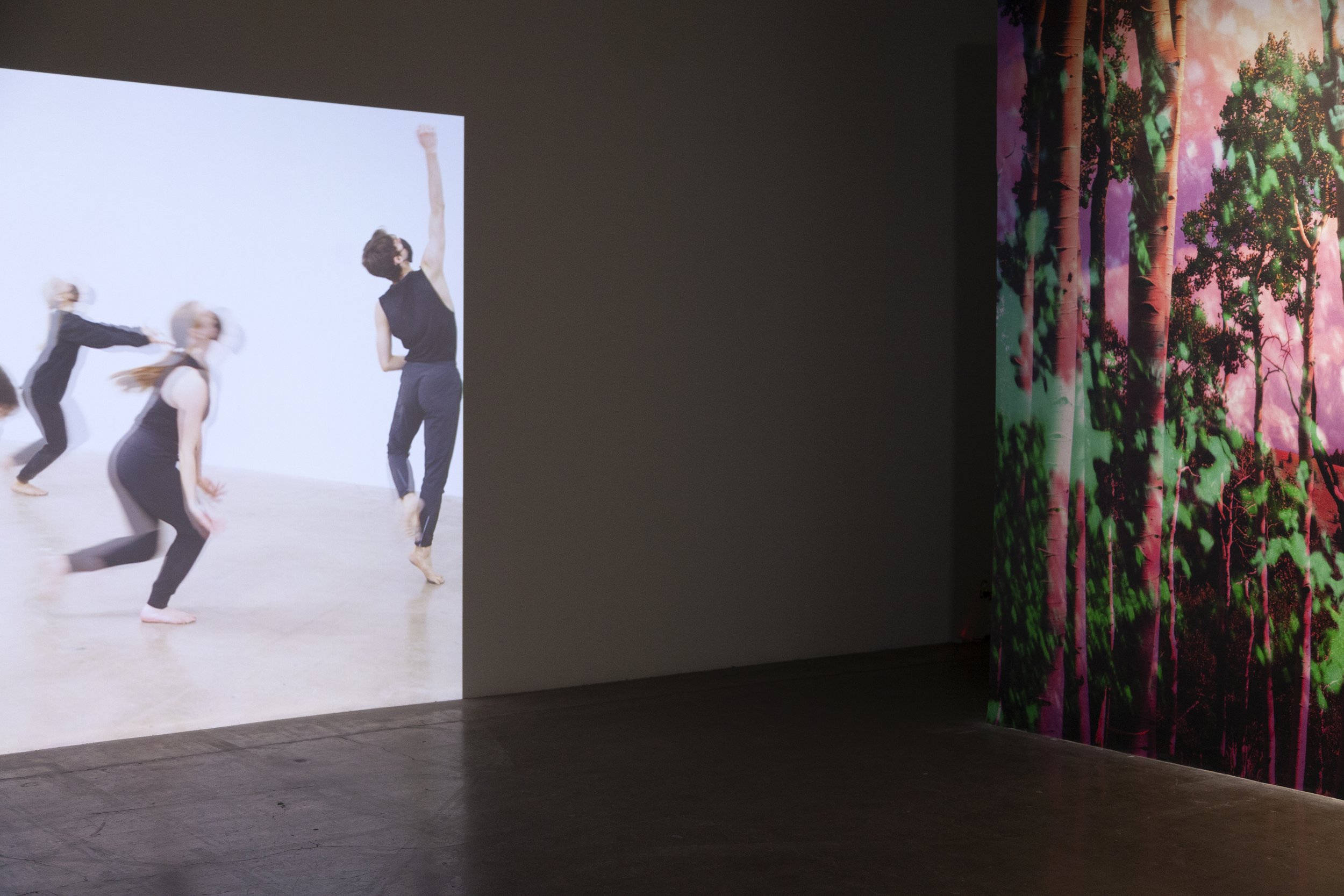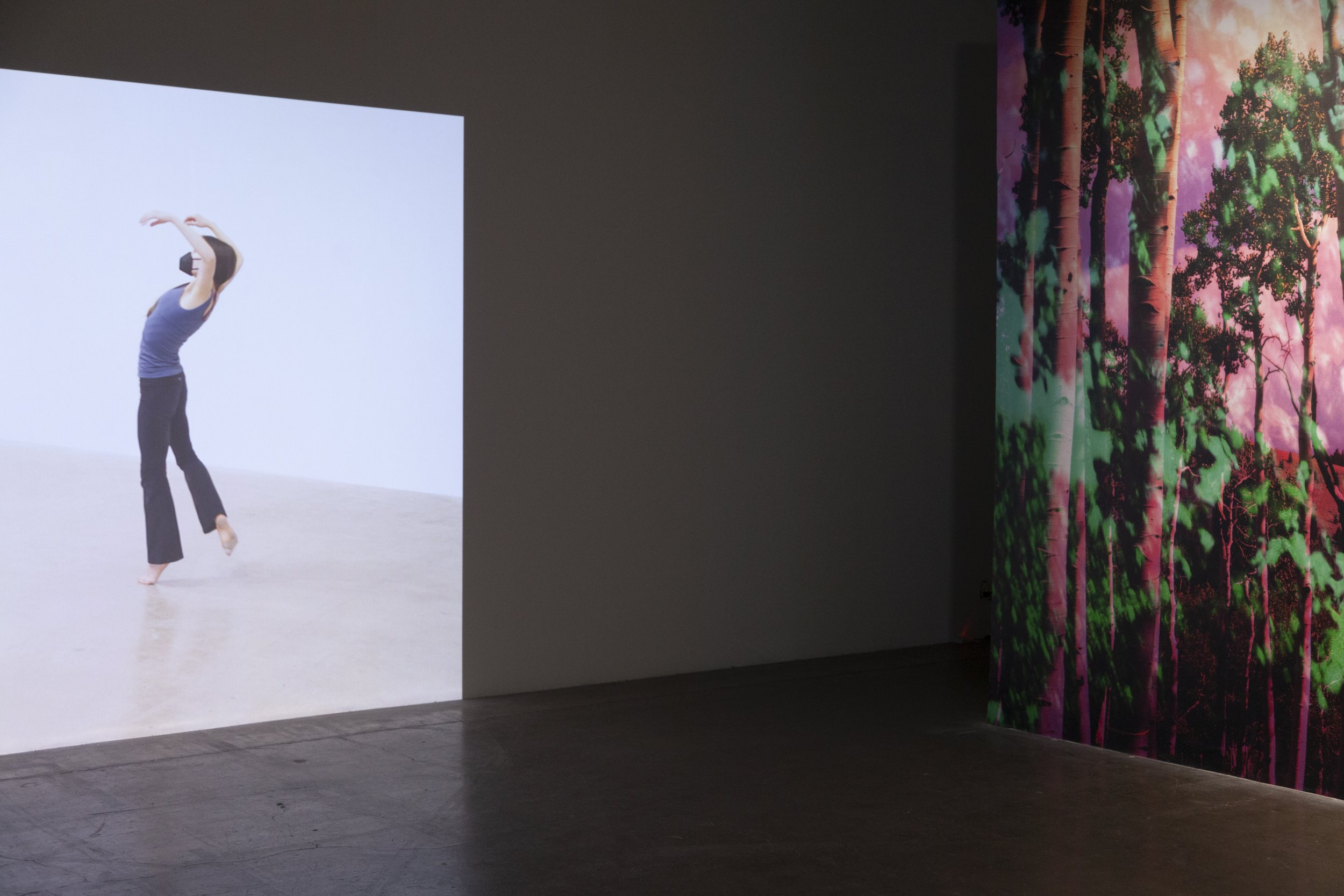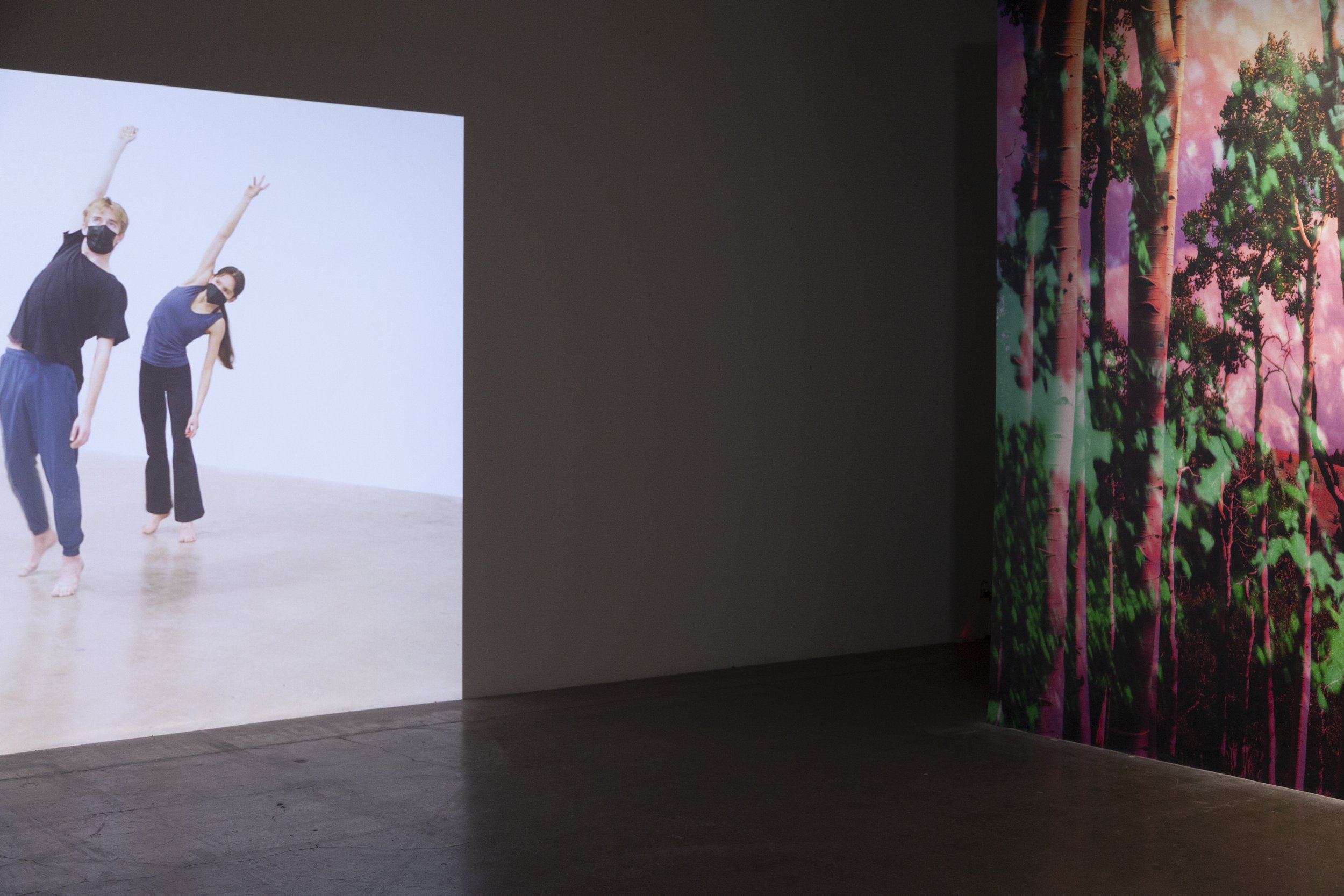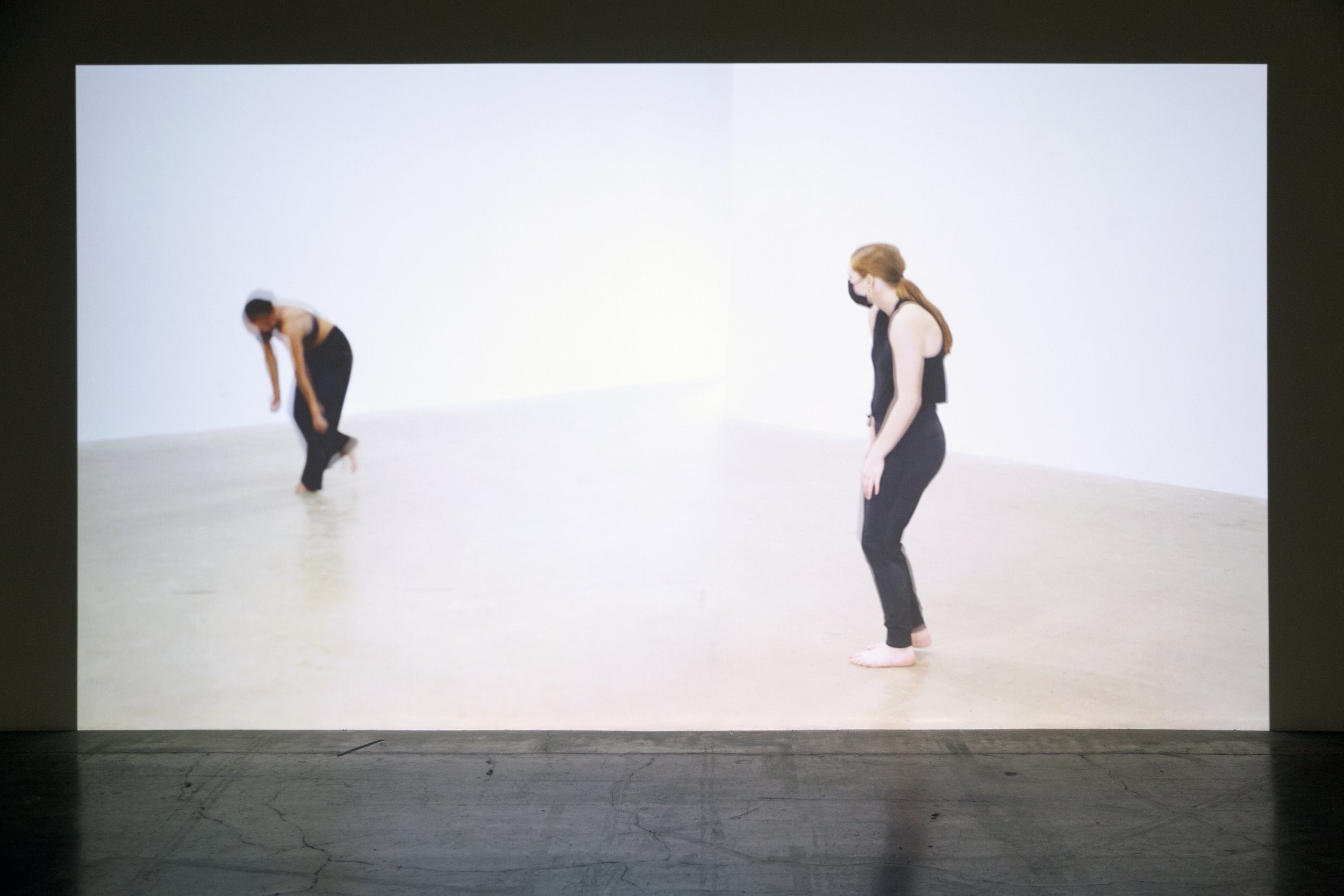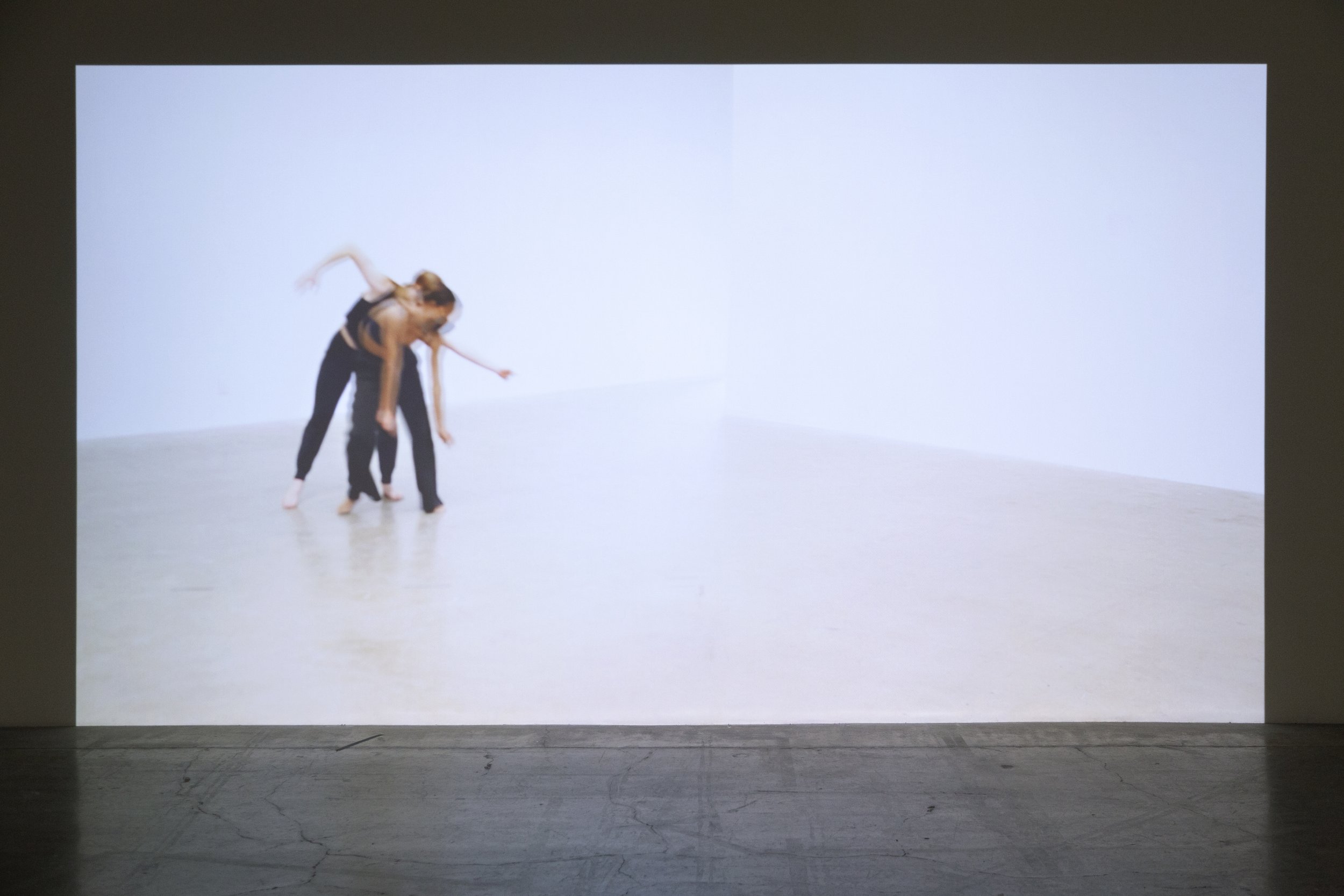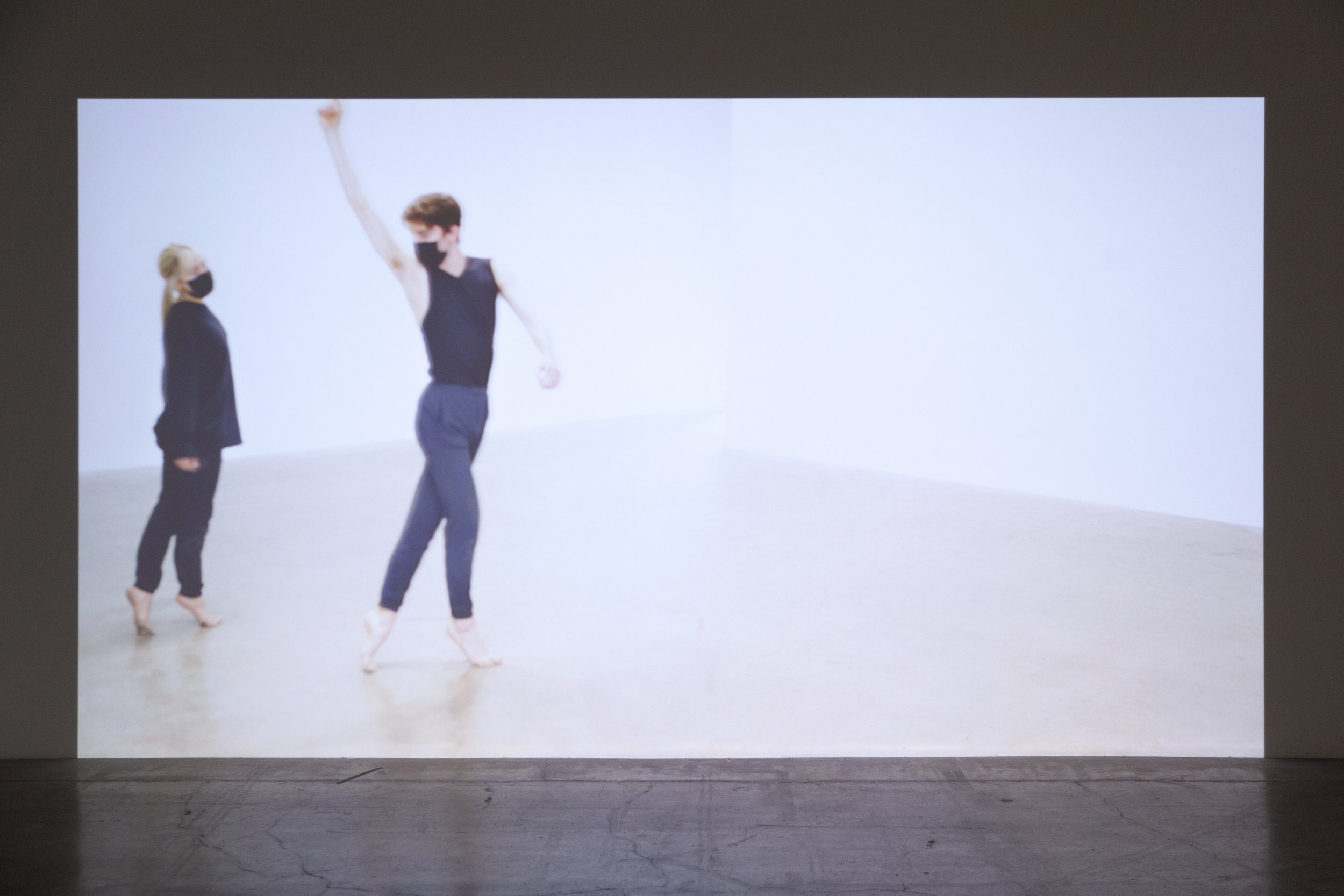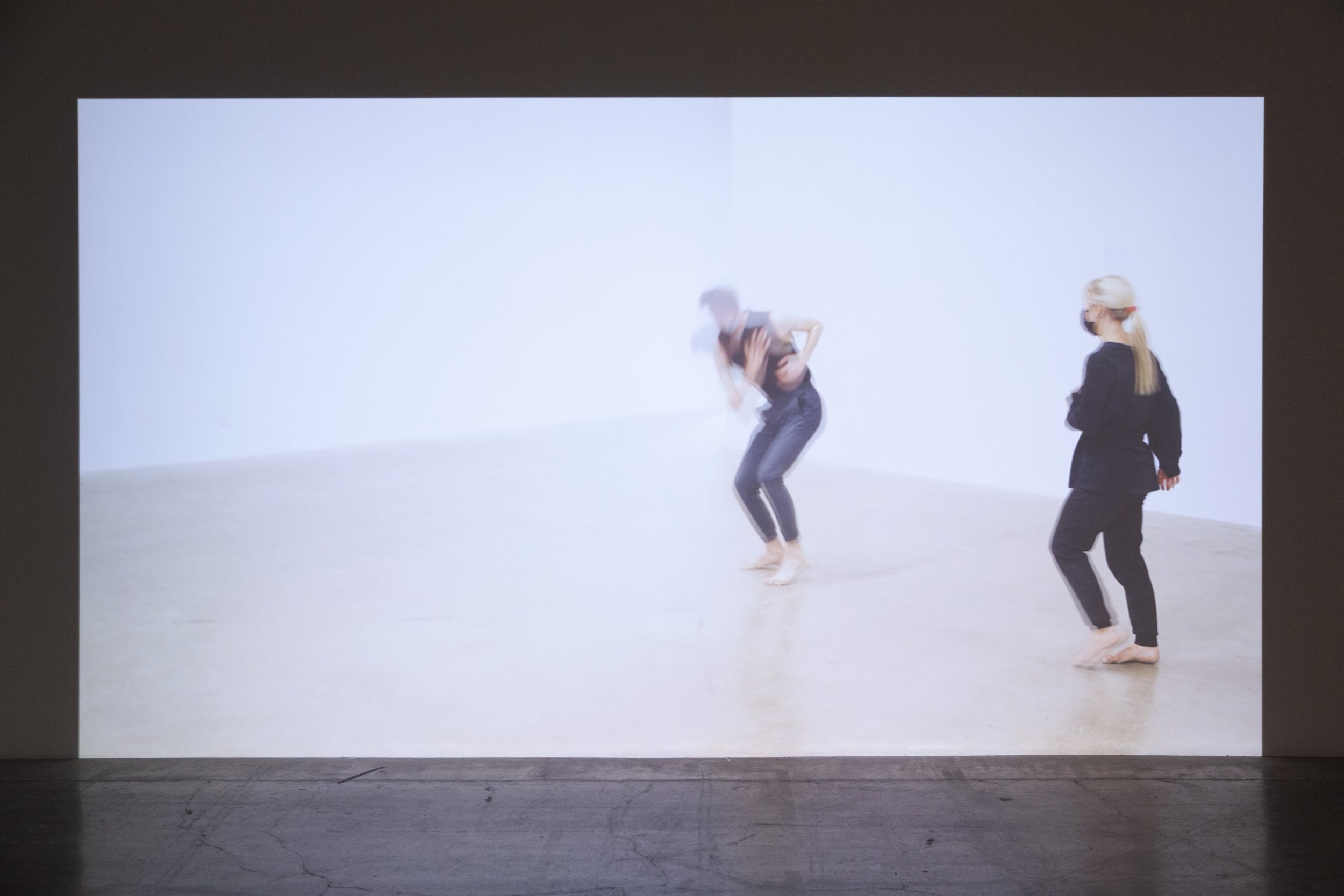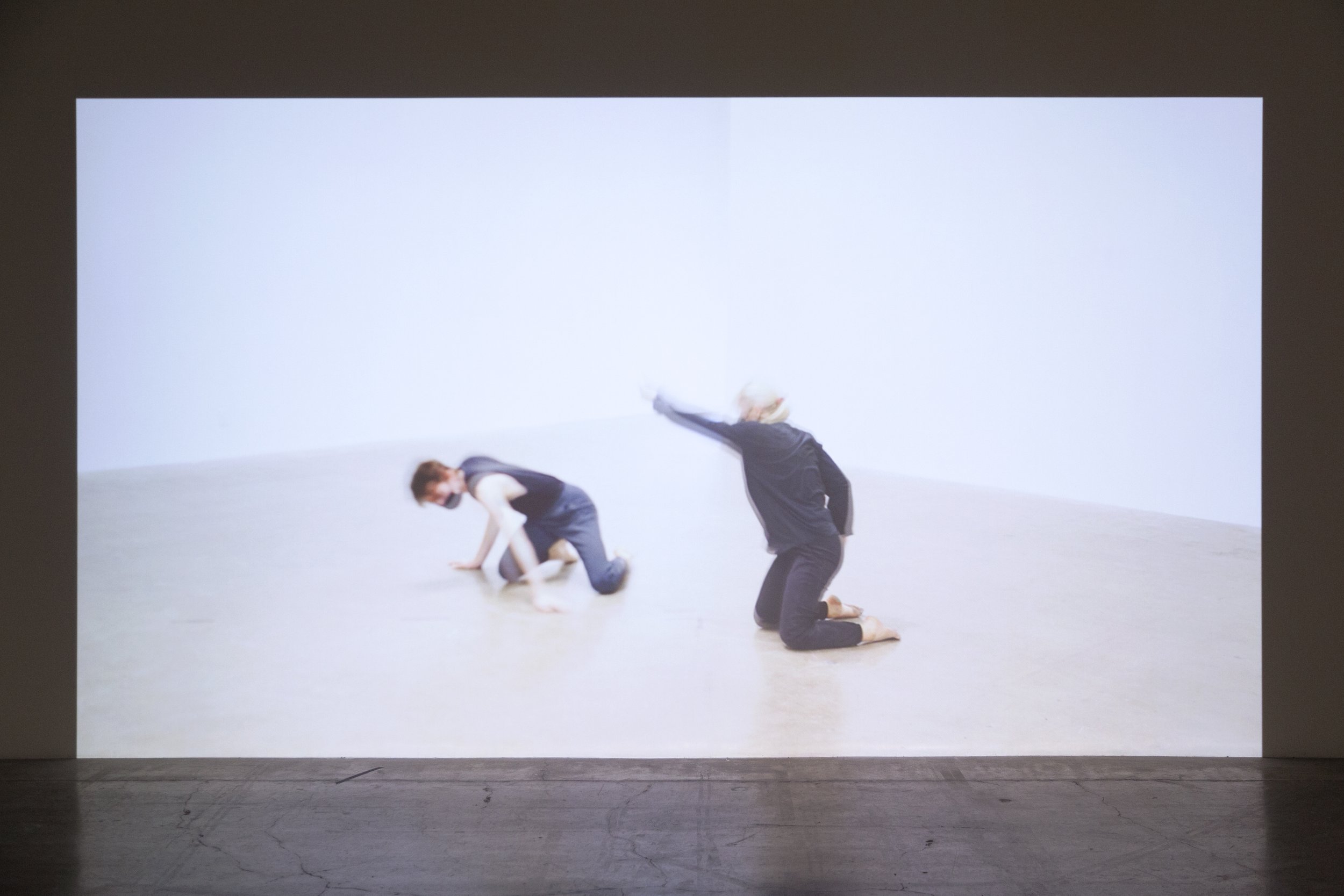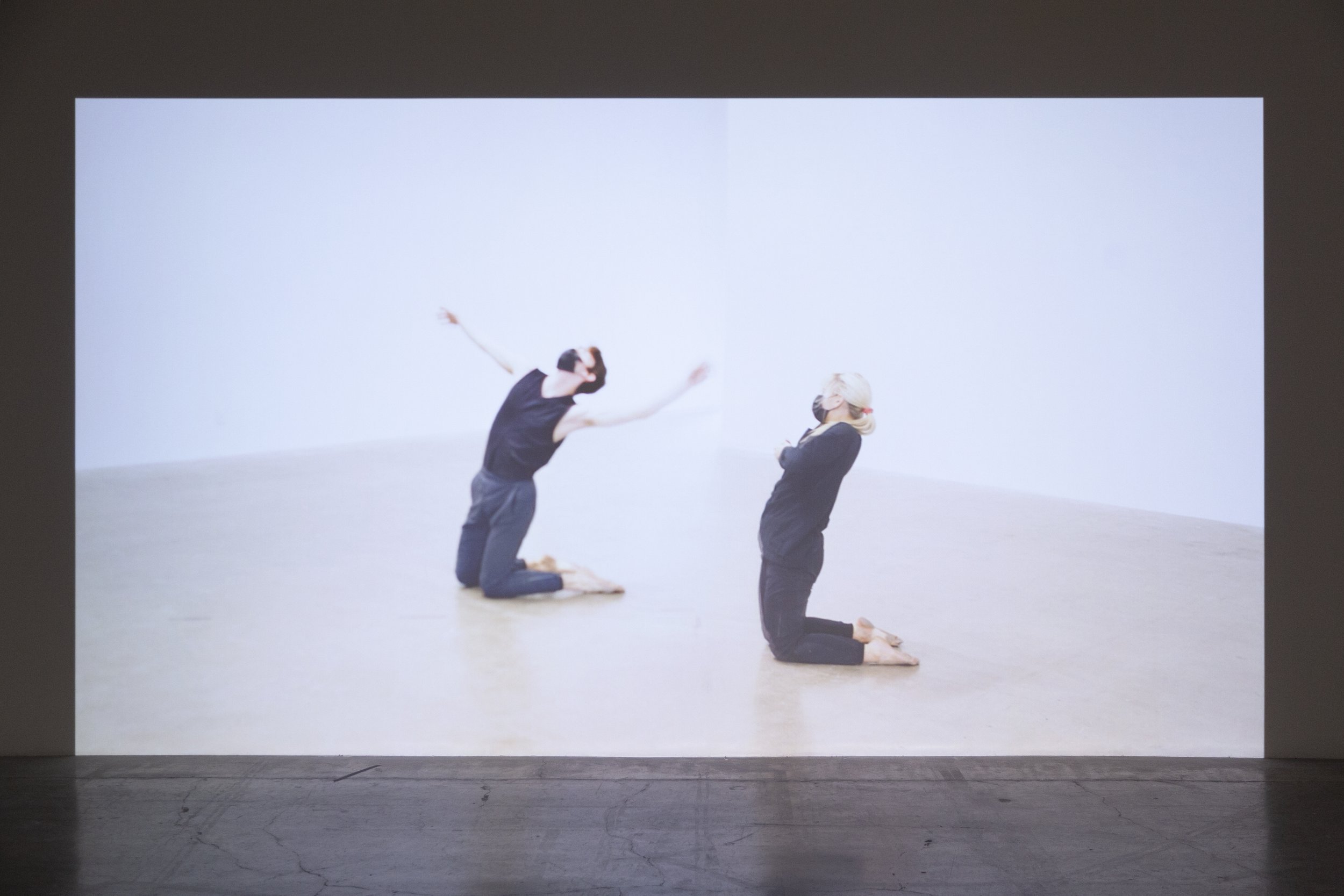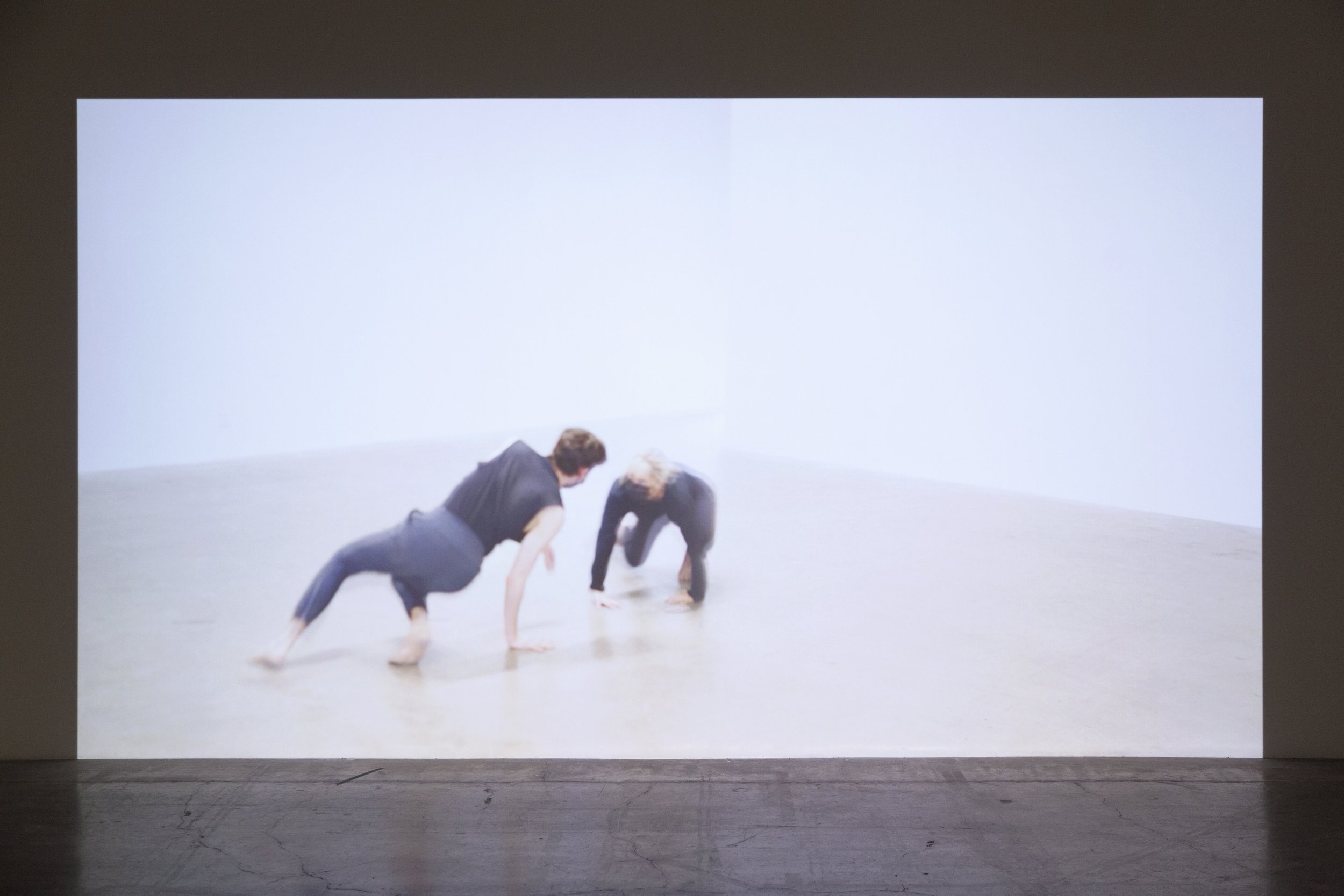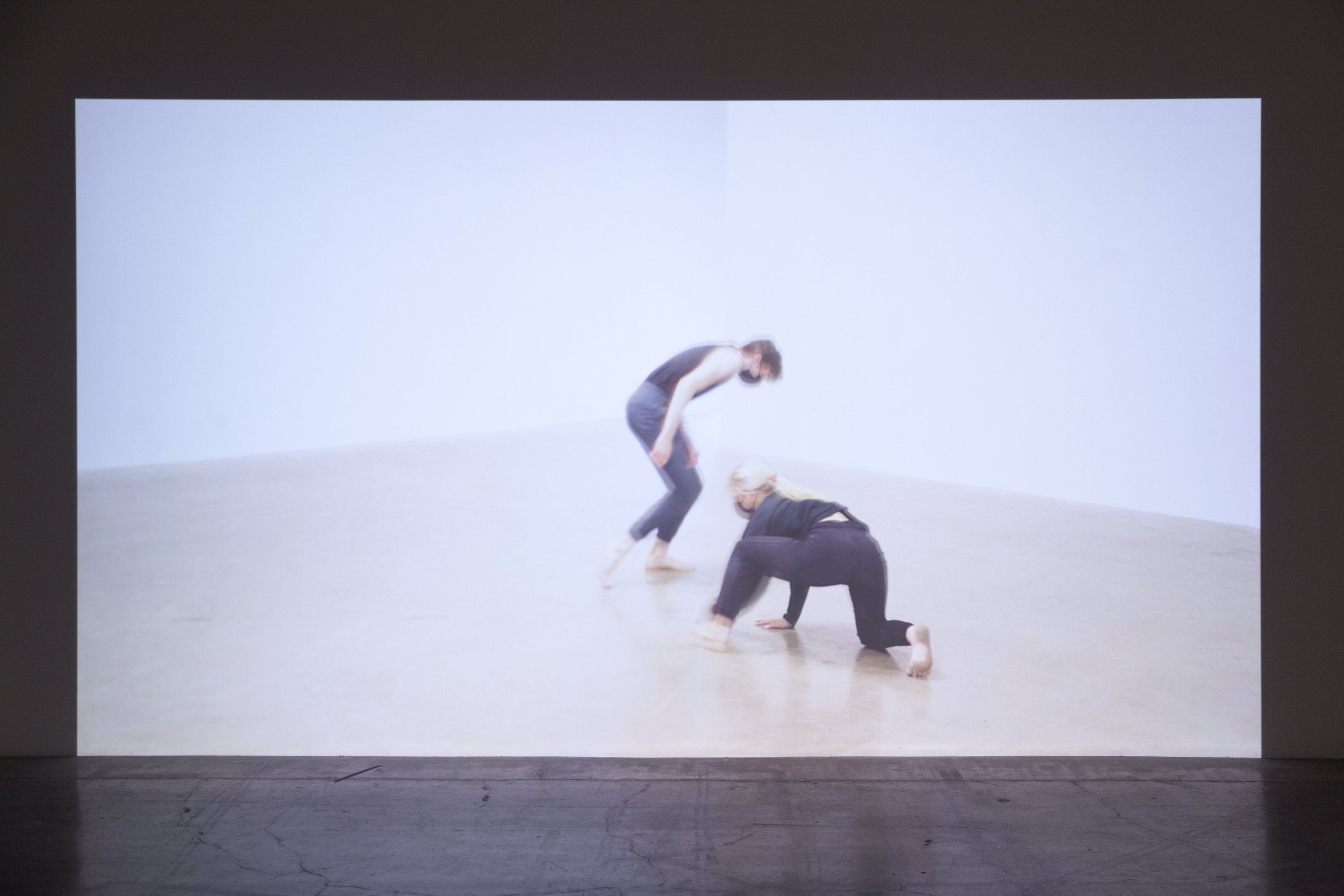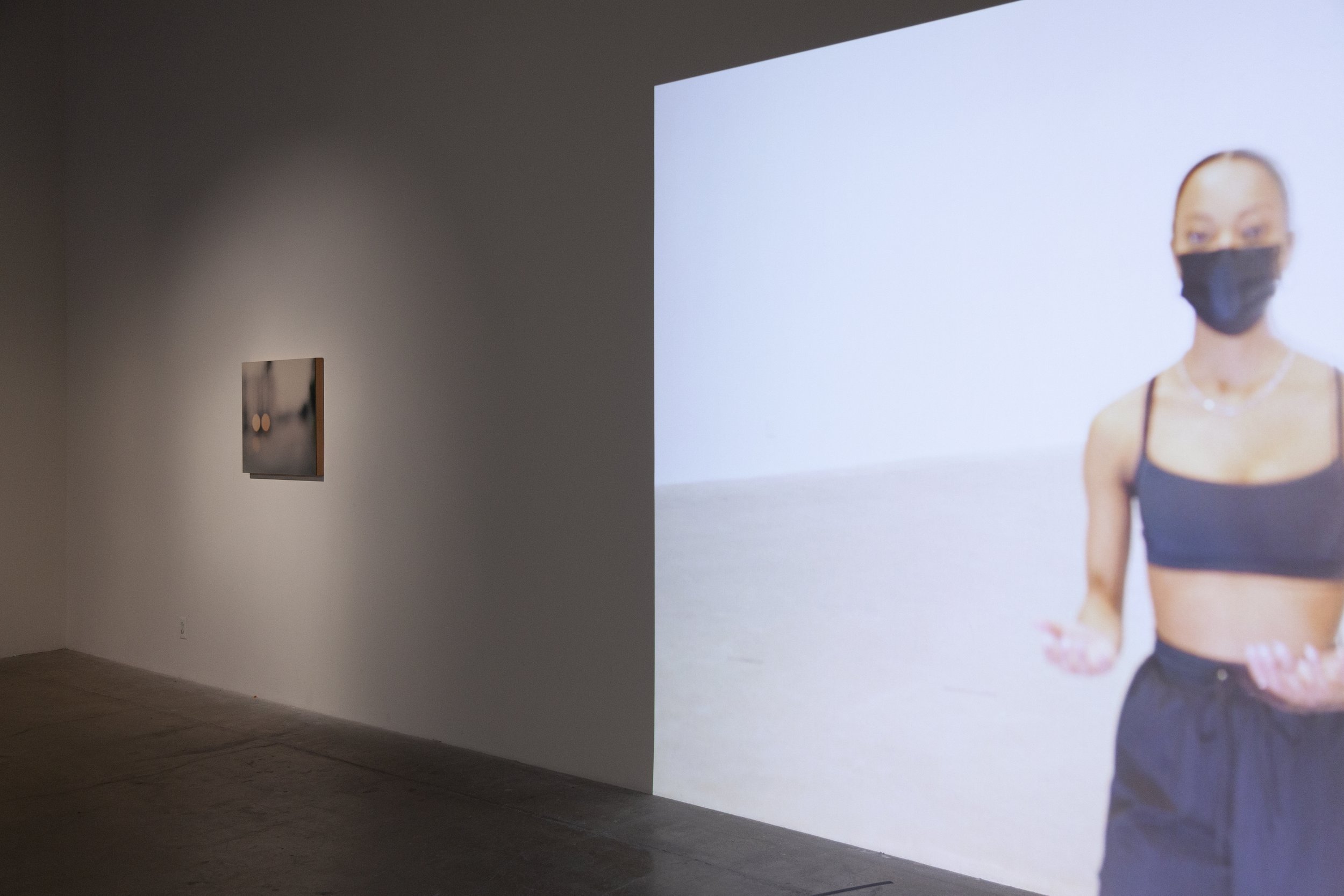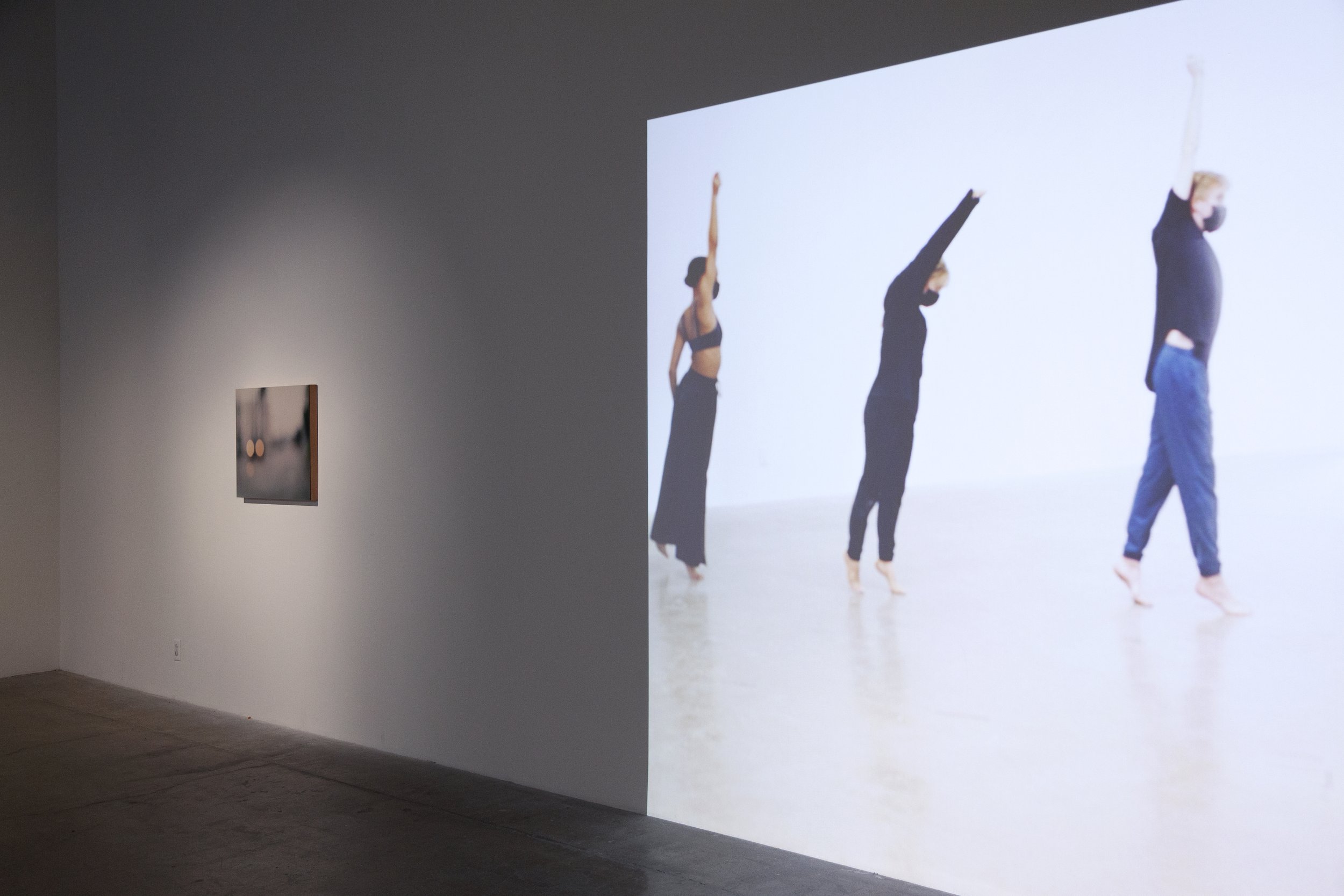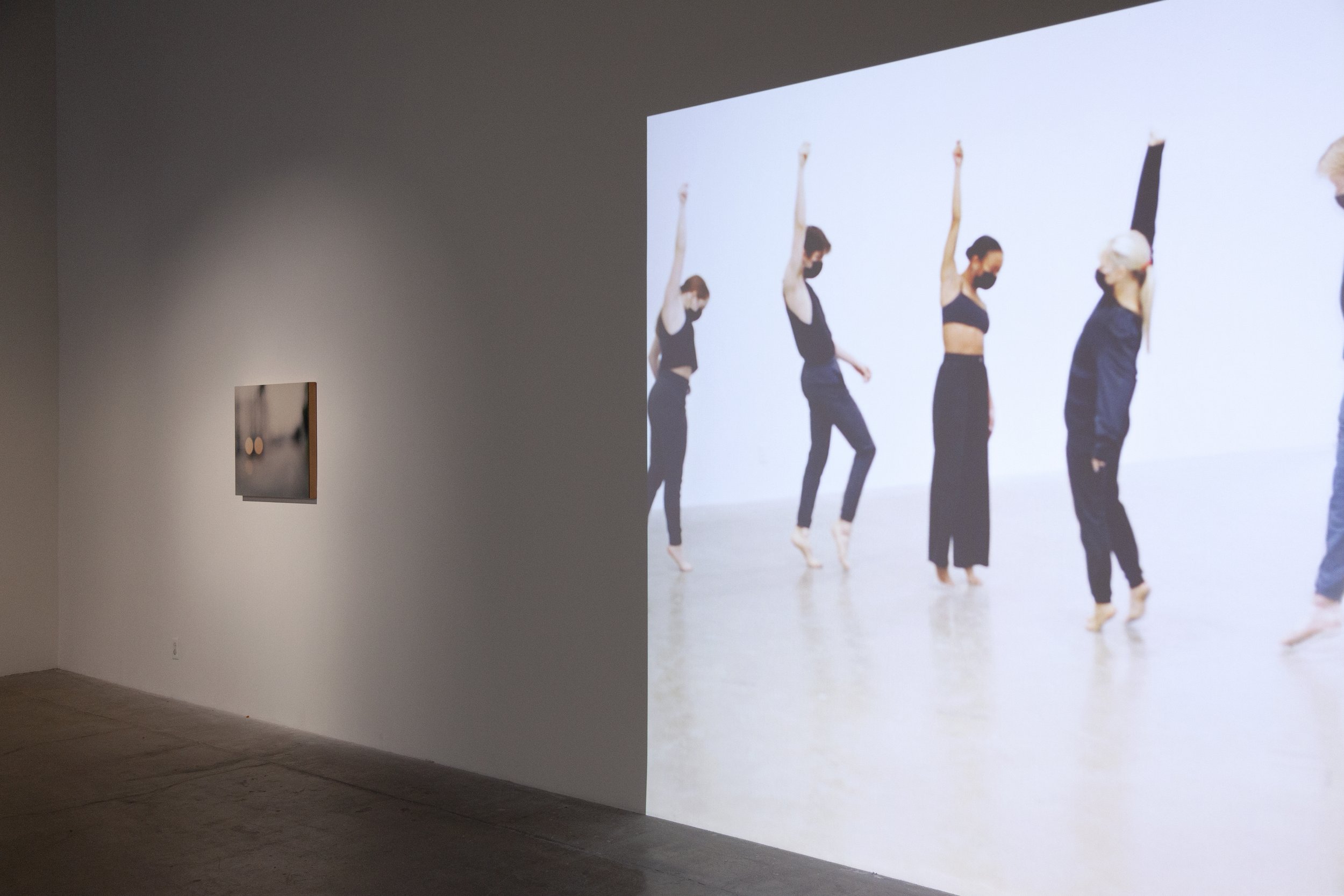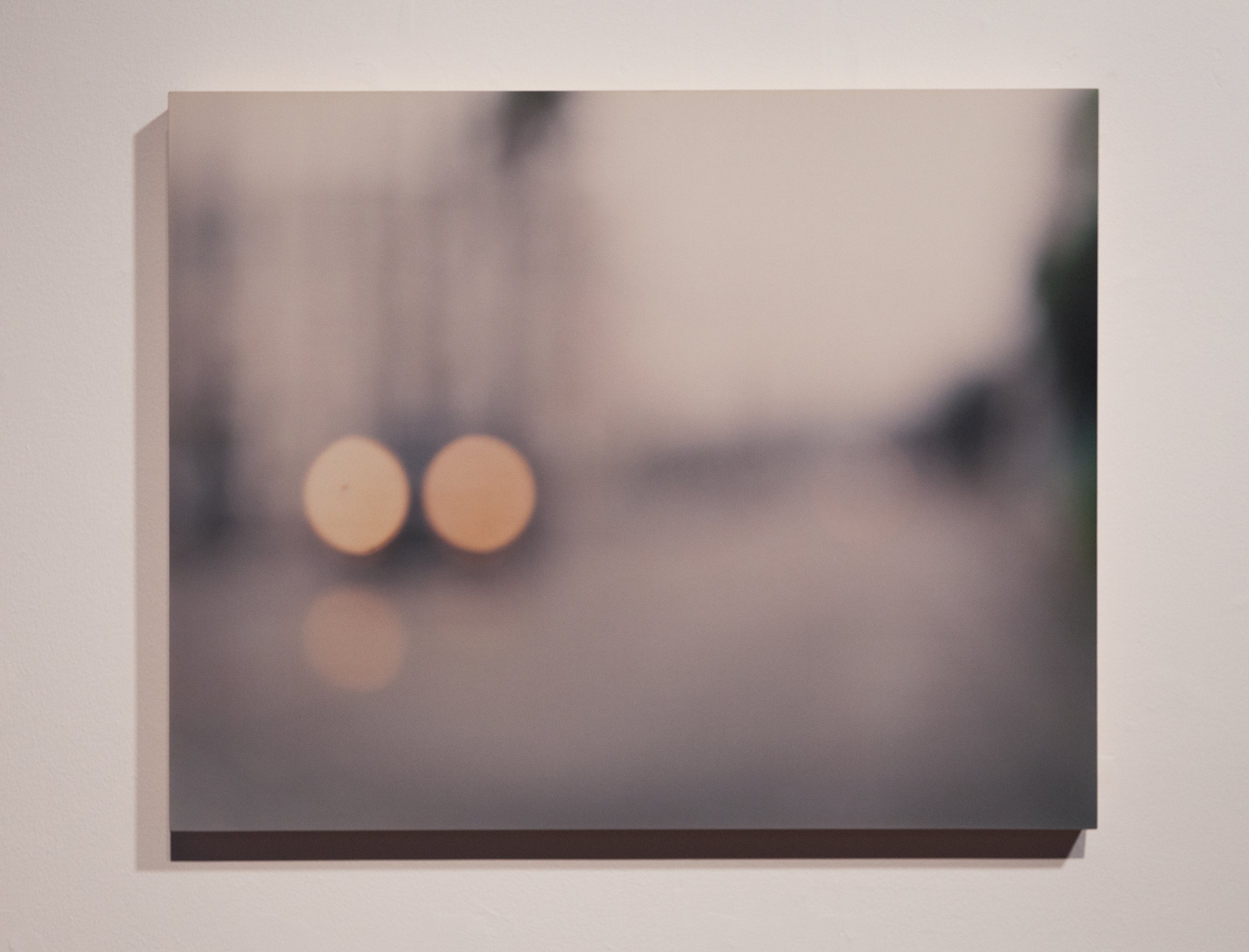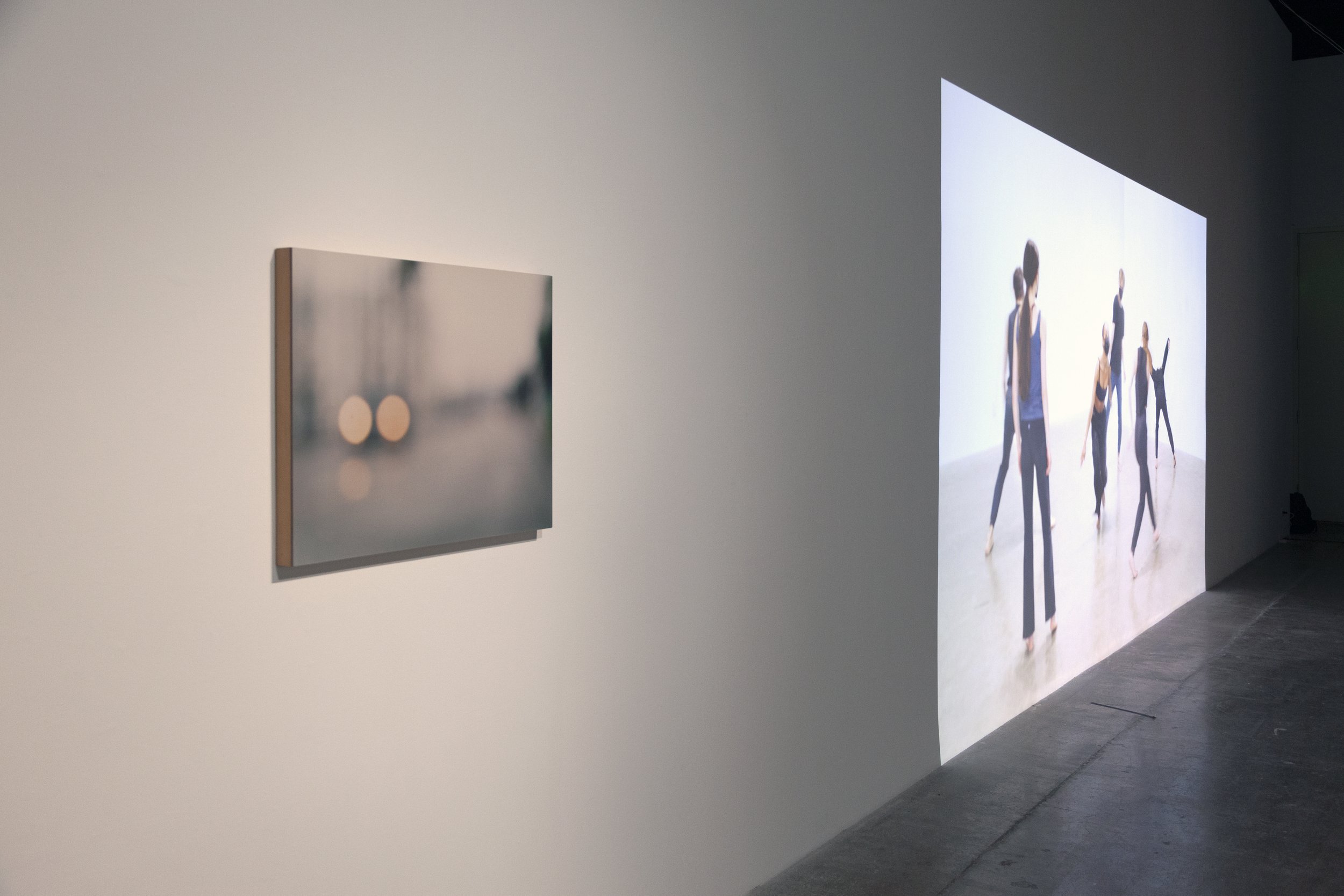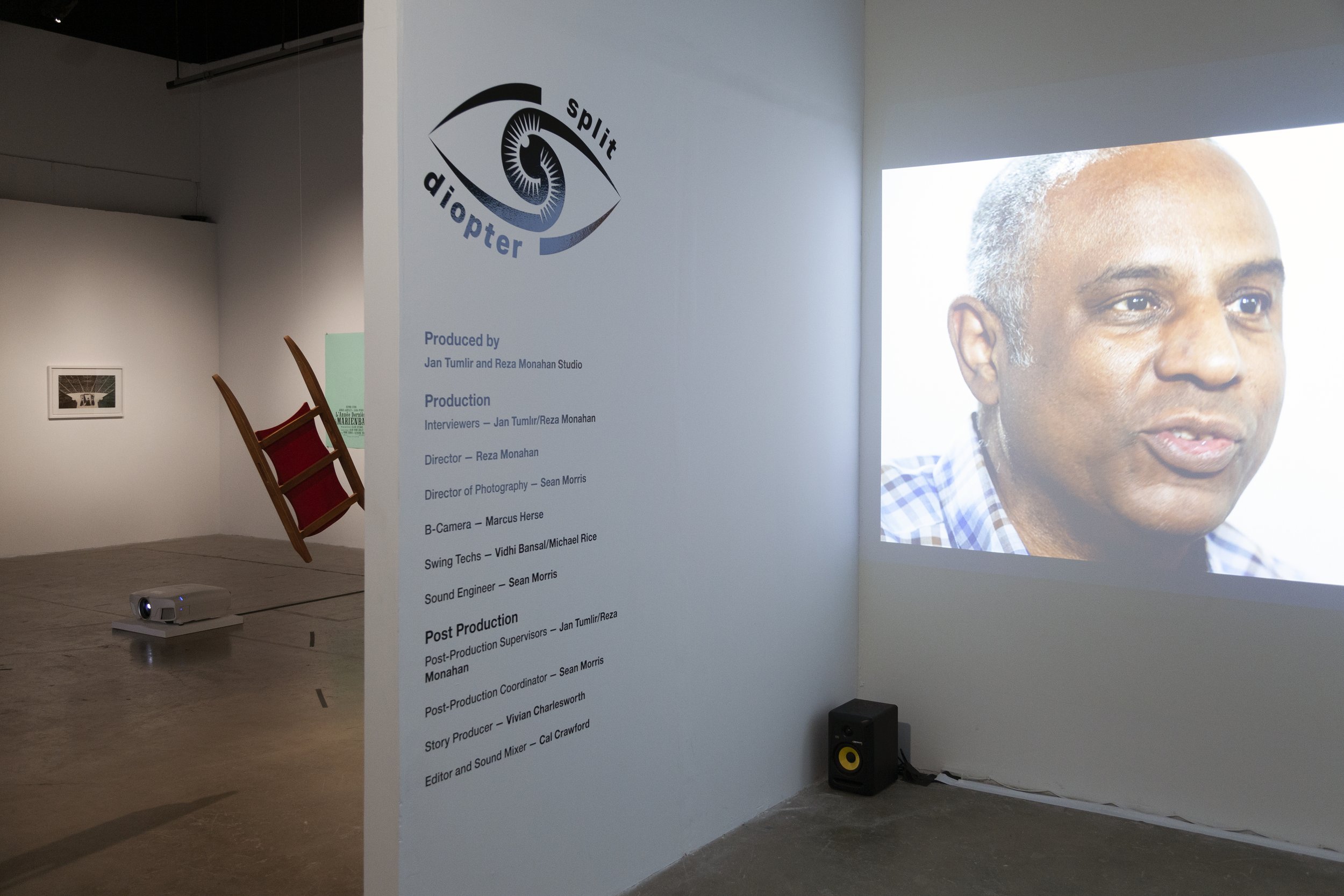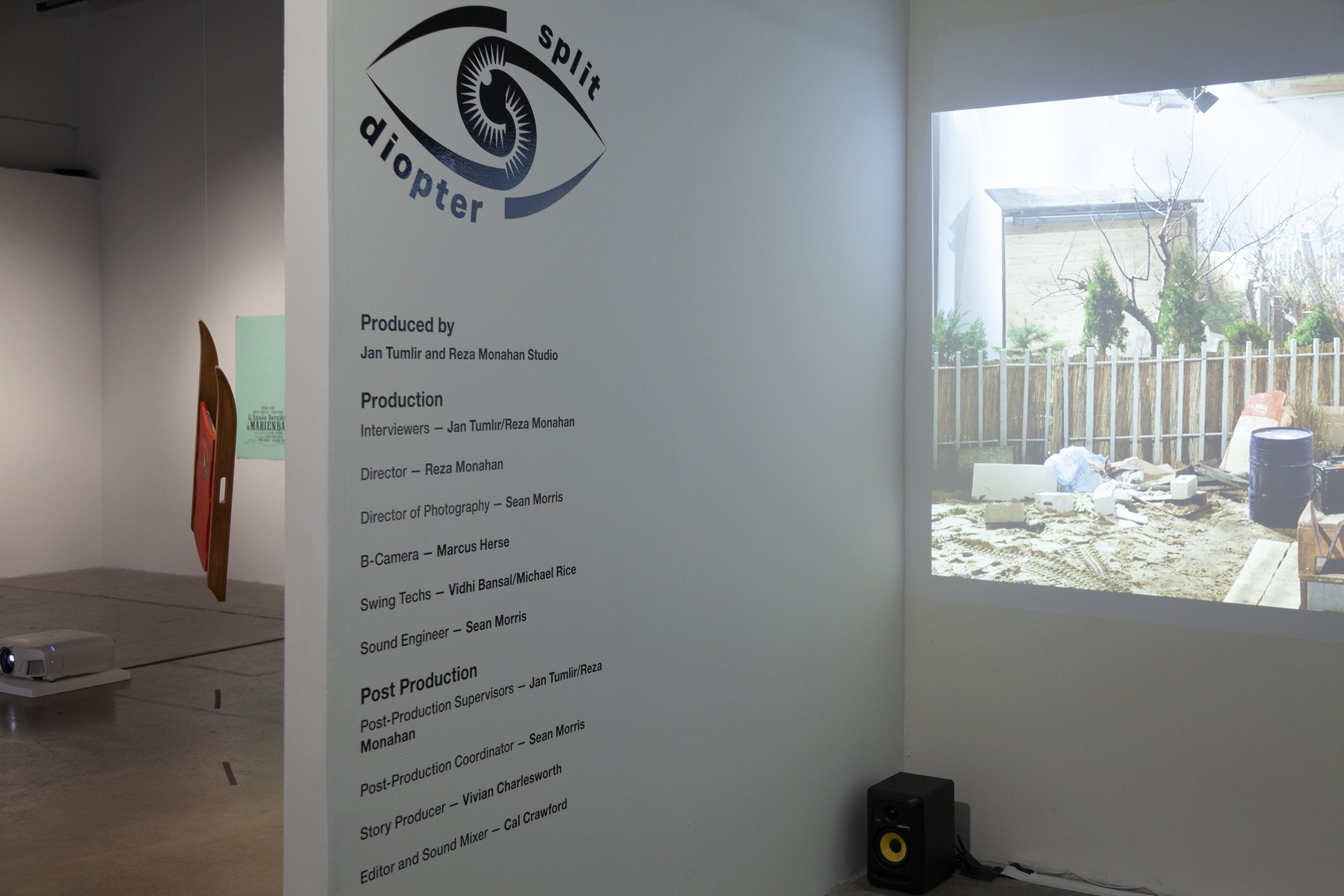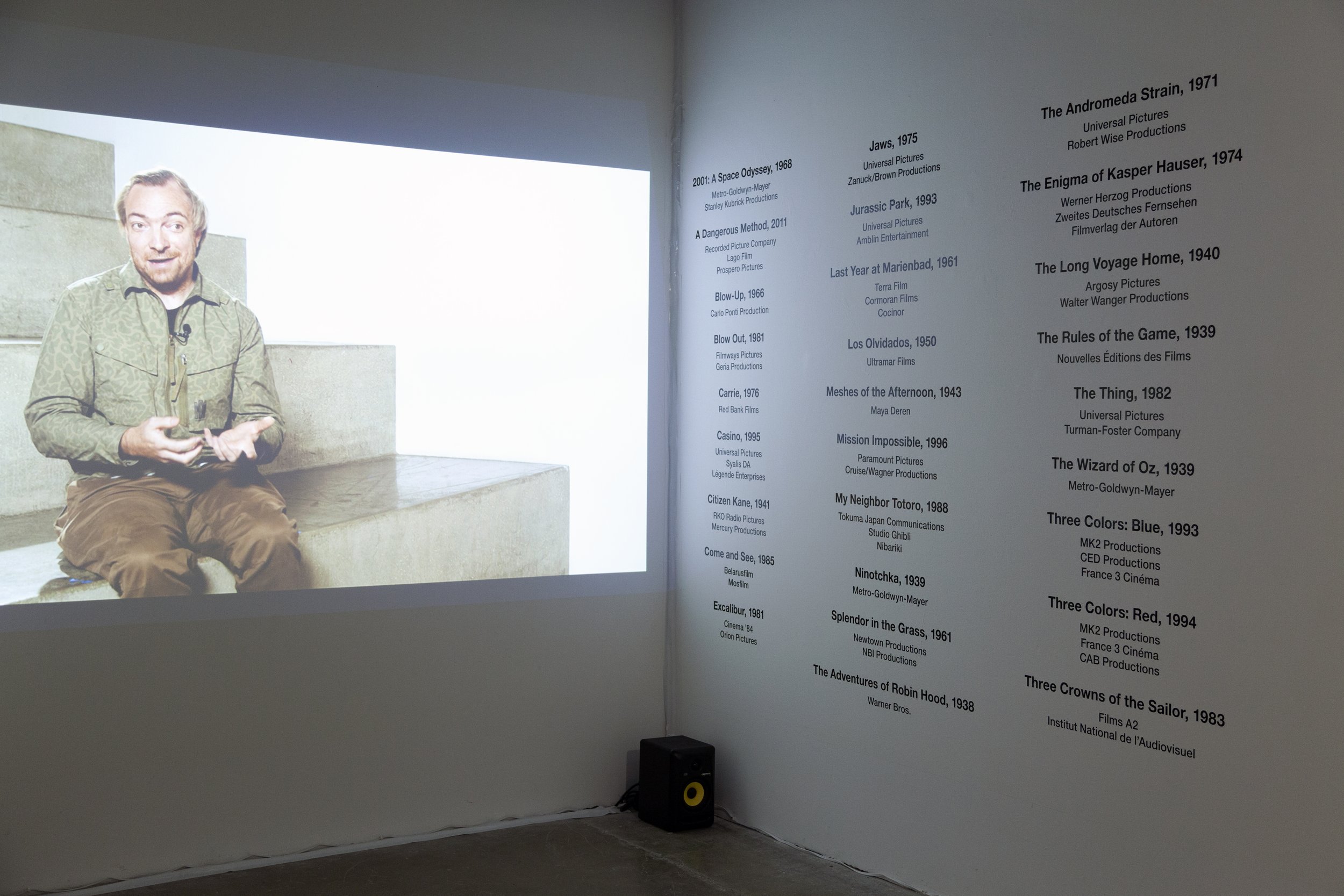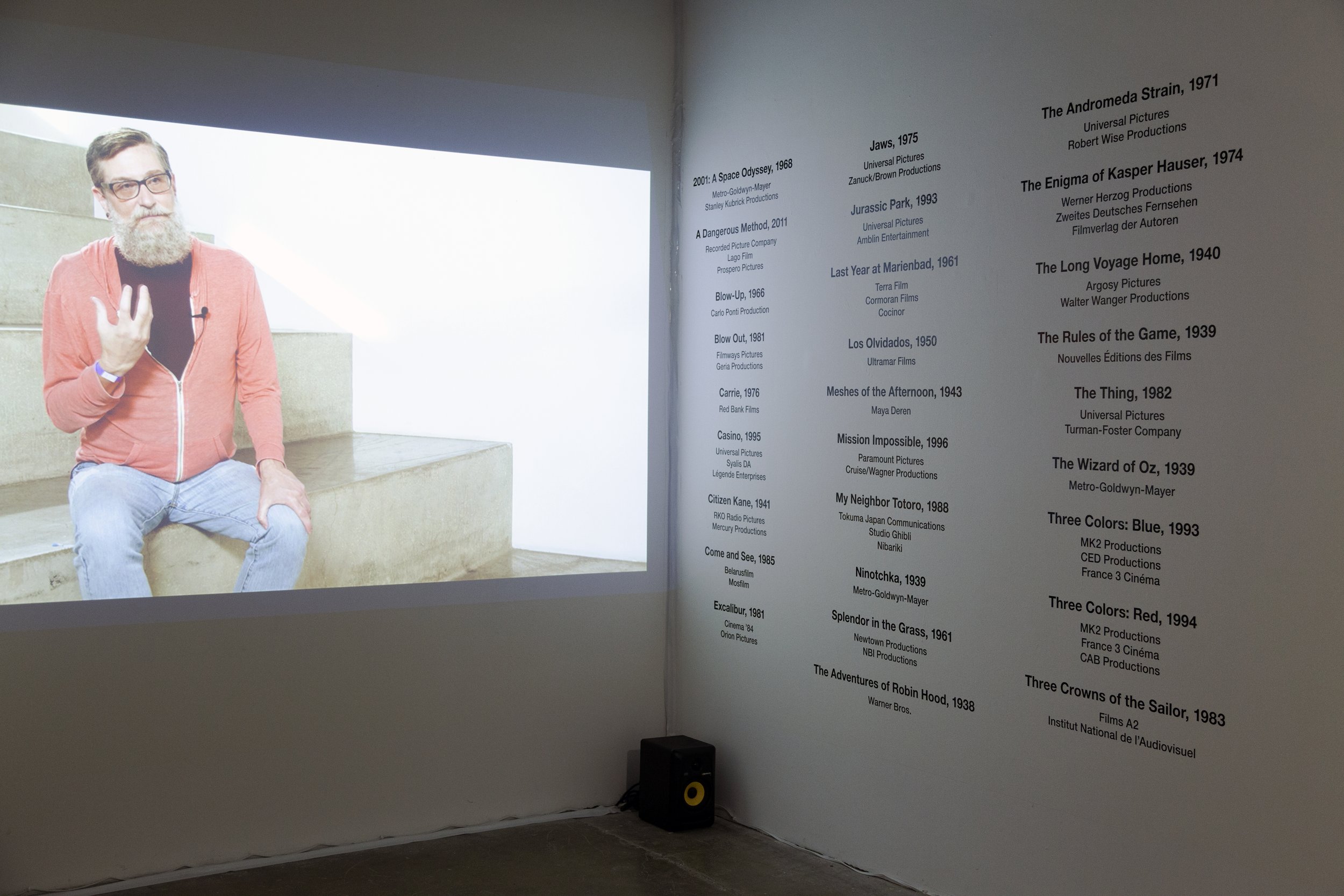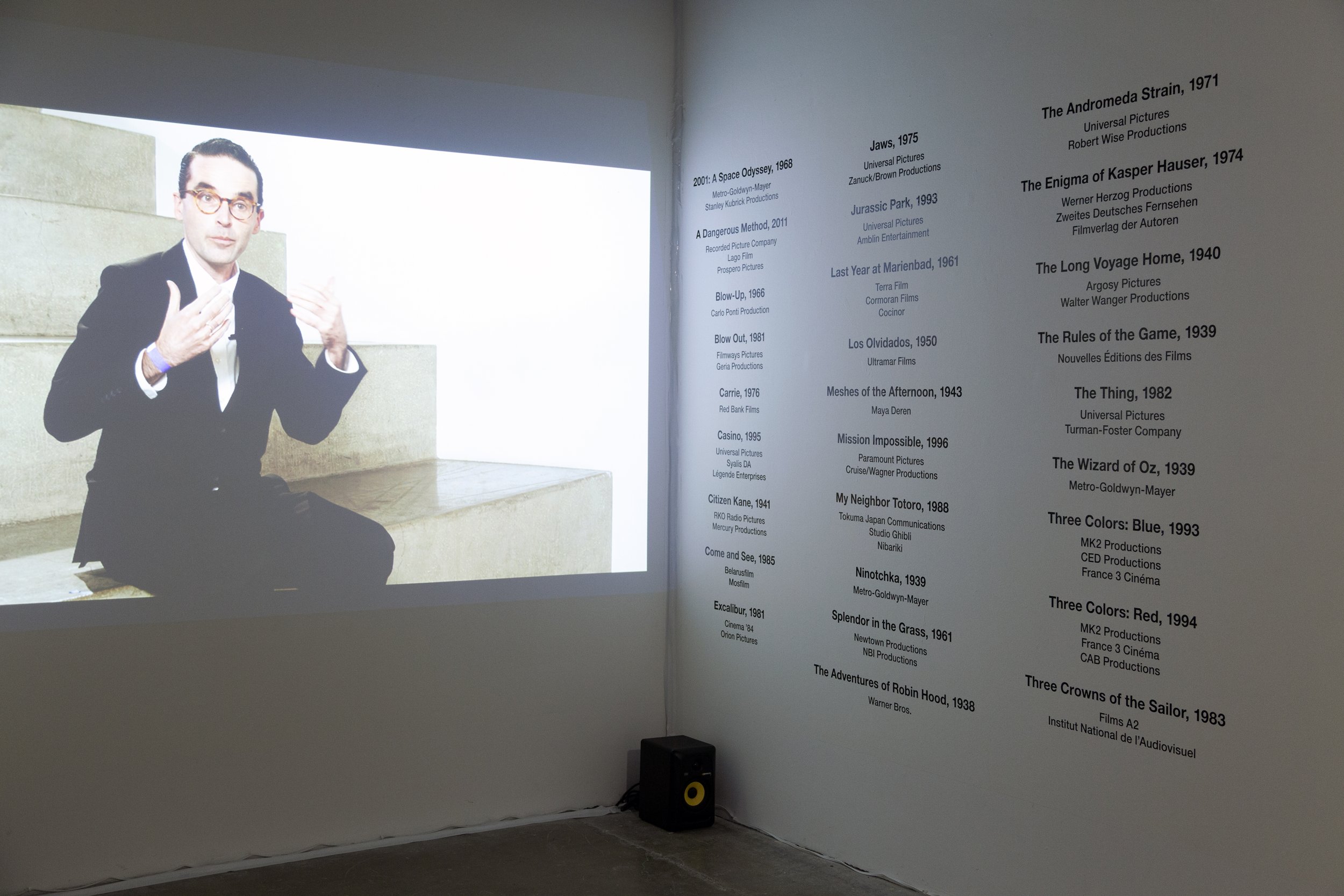Installation view Split Diopter, February 7 – March 16, 2022, Chapman University’s Guggenheim Gallery, Orange, CA
Split Diopter
Realized by Jan Tumlir and Reza Monahan in association with Marcus Herse; Featuring works by: Uta Barth, Matthew Brannon, John Divola, Lawrence English, Alex Israel, Hedi El Kholti
With the participation of: Stan Douglas, William E. Jones, Lynne Marsh, Patti Podesta, Jeffrey Stucker, Liam Young, and Julianne O’Brien with the Dance School of Chapman University (Alana Gregory, Sara Iisaka, Camryn Mandelbaum, Cole Neville, Morgyn Pottorf, Spencer Seebach)
Special thanks: Gazaleh Khezri, Won Ju Lim, Sean Morris, Christopher Richmond; Guggenheim Gallery student team: Jeremiah Ayala, Emilie Dashe, Henry Littleworth, Arianna Patterson, Hannah Scott, Leonid Osipov
February 7 – March 16, 2022
Chapman University’s Guggenheim Gallery, Orange, CA
Split Diopter: At the Seam of Art and Cinema; Documentary by Monahan Studio for SCI_Arc Channel
The cinematic device known as split diopter might be described as the camera’s equivalent of bifocal glasses, a supplementary half-lens applied over an existing one, so that one side of the view is trained on what is close and the other on what is farther away. In the uncannily sharp image—at once deep and shallow—that appears onscreen, a seam can sometimes be detected, running right down the middle.
In analog photography, depth of field is gained through constricted apertures and long exposure times, but moving images, if they are not to devolve into a blur, must be shot at higher speeds. The split diopter was conceived as an efficient means to get around this built-in restriction of focal range. We have chosen to construct our exhibition around this by now somewhat antiquated artifact of the entertainment industry because its operations are readily understandable, which is something that cannot be said for any apparatus of visualization at the present stage of development. The cause (diopter) is legible within the effect (dioptic), a condition that might allow one to approach the question of resolution, so central to our current economy of imaging, from “behind,” so to speak.
Today, we are routinely assailed with images in which the point of view of an observing subject—inherently selective, discriminating and exclusive—is overridden by auto-correcting cameras that effectively see for us and past us. Once the image becomes data driven, no detail can escape its compass: maximal definition is distributed evenly across the entirety of its surface area. At the extreme, the technical extension of vision comes up against an absolute flattening of the visual, an outcome that is now largely taken for granted. Certainly, the split diopter was inclined in this general direction from the first moment, while also falling quite wide of the mark. In retrospect, its various “deficiencies” may be seized for purposes of analysis and speculation. They remain behind as evidence of what has been submerged beneath a field rendered wholly visible.
This exhibition was developed out of a series of conversations concerning the relation between fine art and cinema, as well as the impact of technical optics on creative practices. The machine for producing the “waking dream” of film is here dismantled into parts that can be identified as: still frame, action sequence, prop, soundtrack, poster, etc. These parts have been dispersed across an array of singular and discrete artworks within a space of distanced contemplation (an art gallery), where they can only be met with a certain lucidity. We hope that viewers will reflect on these works in much the same way as we have: as objects in the room right along with ourselves, and simultaneously as hinges to other rooms in other dimensions where we also could be, and in fact often are.
Text by Jan Tumlir
